Forums
- Forums
- Axis And Allies Forum
- General Discussion
- Aviation News
Aviation News
Post a reply
- Go to Previous topic
- Go to Next topic
- Go to Welcome
- Go to Introduce Yourself
- Go to General Discussion
- Go to Screenshots, Images and Videos
- Go to Off topic
- Go to Works in Progress
- Go to Skinning Tips / Tutorials
- Go to Skin Requests
- Go to IJAAF Library
- Go to Luftwaffe Library
- Go to RAF Library
- Go to USAAF / USN Library
- Go to Misc Library
- Go to The Ops Room
- Go to Made in Germany
- Go to Campaigns and Missions
- Go to Works in Progress
- Go to Juri's Air-Raid Shelter
- Go to Campaigns and Missions
- Go to Works in Progress
- Go to Skinpacks
- Go to External Projects Discussion
- Go to Books & Resources
-
 Main AdminA U.S. Air Force KC-135 Stratotanker with the 191st Air Refueling Squadron from Salt Lake City, Utah, awaits civil leader guests to board before a refueling mission at Spangdahlem Air Base, Germany, Sept. 26, 2016. The tanker arrived Sept. 17th to train with Spangdahlem?s F-16 Fighting Falcons, adding valuable training for air-to-air refueling. (U.S. Air Force photo/Airman 1st Class Preston Cherry)
Main AdminA U.S. Air Force KC-135 Stratotanker with the 191st Air Refueling Squadron from Salt Lake City, Utah, awaits civil leader guests to board before a refueling mission at Spangdahlem Air Base, Germany, Sept. 26, 2016. The tanker arrived Sept. 17th to train with Spangdahlem?s F-16 Fighting Falcons, adding valuable training for air-to-air refueling. (U.S. Air Force photo/Airman 1st Class Preston Cherry)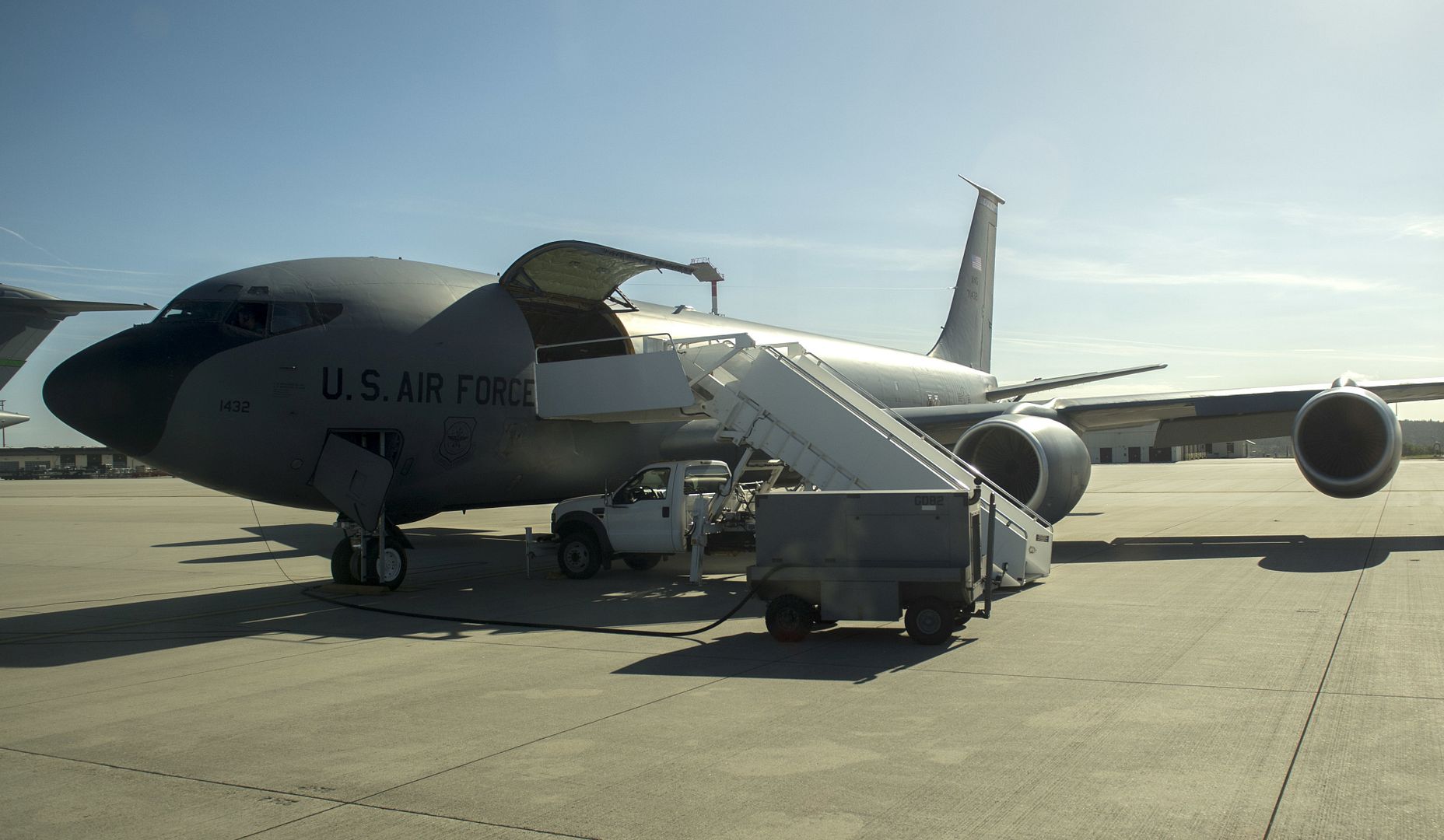
U.S. Air Force F-16 Fighting Falcons fly beside a KC-135 Stratotanker after receiving fuel during a refueling mission over Ramstein Air Base, Germany, Sept. 26, 2016. The Stratotanker, from the 151st Air Refueling Wing in Salt Lake City, Utah, helps Spangdahlem?s F-16s train in air-to-air refueling for a longer duration and with more aircraft. (U.S. Air Force photo/Airman 1st Class Preston Cherry)
A U.S. Marine Corps AH-1Z Viper assigned to Marine Aviation Weapons and Tactics Squadron One (MAWTS-1) prepares to engage targets during an offensive air support exercise at Observation Point Feets, Chocolate Mountain Aerial Gunnery Range, Calif., Sept. 28, 2016. The exercise was part of Weapons and Tactics Instructor (WTI) 1-17, a seven-week training event hosted by MAWTS-1 cadre. MAWTS-1 provides standardized tactical training and certification of unit instructor qualifications to support Marine Aviation Training and Readiness and assists in developing and employing aviation weapons and tactics. (U.S. Marine Corps photograph by SSgt. Artur Shvartsberg, MAWTS-1 COMCAM)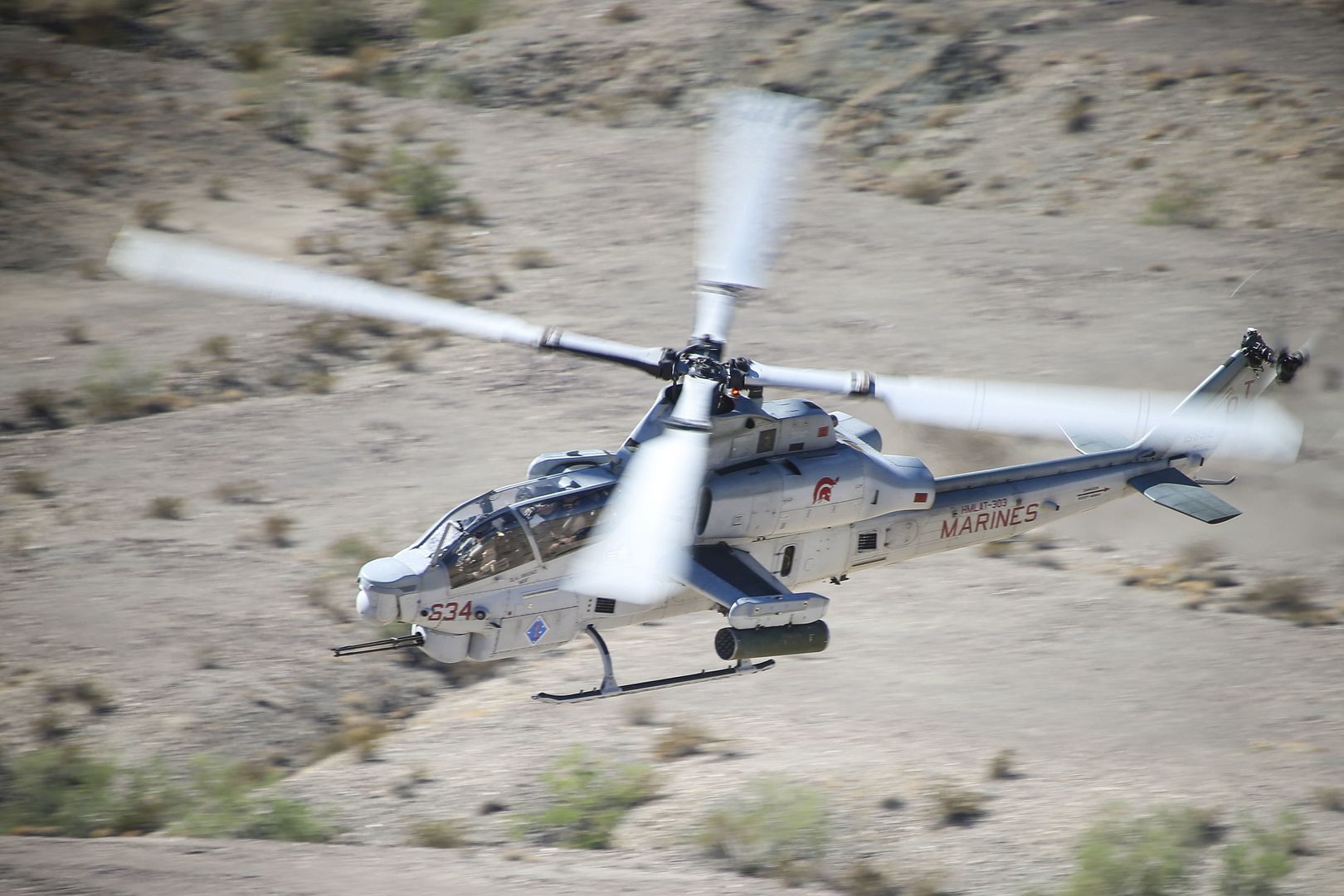
28 September 2016 Press Release
RwandAir, the national flag carrier of the Republic of Rwanda, has taken delivery of its first of two Airbus long-haul widebody A330 aircraft. In doing so, it becomes the East African launch operator of the aircraft and Airbus?s newest customer.
The A330 is the first wide-body aircraft in RwandAir?s fleet and is configured in a comfortable three-class cabin layout with 20 seats in Business, 21 seats in Premium Economy and 203 seats in Economy.
RwandAir?s A330 is powered by Rolls-Royce Trent 772B engines and will be deployed on medium- and long-haul routes from its Kigali home base to destinations throughout Europe, Asia and the Middle-East.
The A330 Family, which spans 300 to 440 seats, has now attracted over 1,600 orders, with over 1,250 aircraft flying with more than 100 operators worldwide. The A330 family is the most widely operated widebody aircraft in the world and one of the world?s most efficient aircraft with best in class operating economics, averaging dispatch reliability well above 99 percent.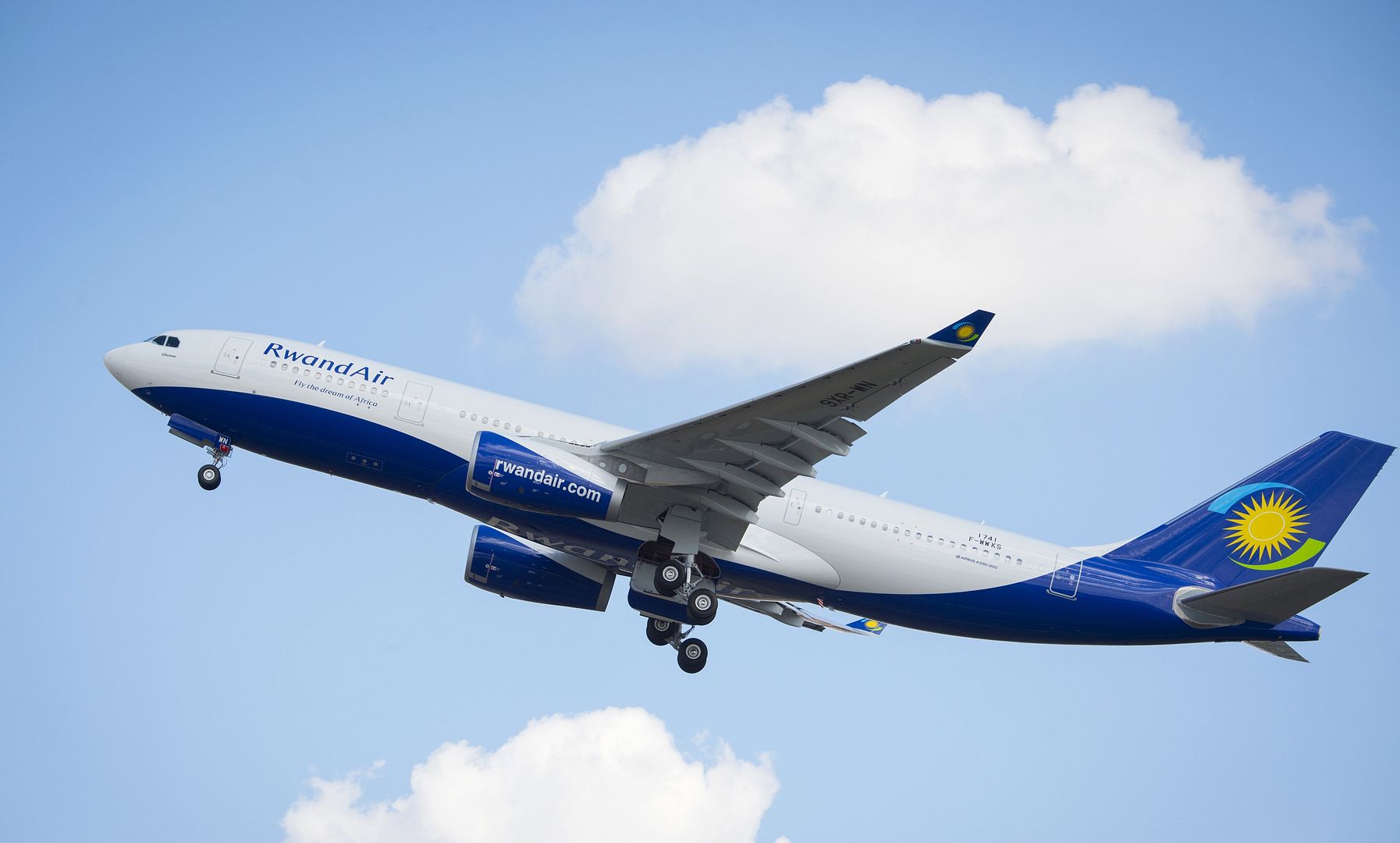
September 28, 2016 Montr?al Business Aircraft, Press Release
An additional Bombardier Global 6000 jet has joined the fleet of fast-growing, Singapore-based charter operator, Zetta Jet. The delivery ceremony took place at Bombardier Business Aircraft?s Global Completion Centre in Montr?al. This latest Global aircraft to join Zetta Jet?s all Global fleet is slated to operate out of Zetta Jet?s North America hub in Los Angeles. The first Bombardier jet to feature the latest Cabin Management System (CMS) and the world?s fastest Ka-band high-speed in-flight Internet connectivity, Zetta Jet passengers will enjoy a truly modern office environment anywhere they fly. The Global 6000 business jet cabin is specifically designed to provide a highly productive working environment, a key factor in making these aircraft a leading choice for operators worldwide.
?Zetta Jet is thrilled to welcome our next Global 6000 business jet to our fleet, enhancing our offering of unparalleled luxury, performance and personalized service to our elite clientele. This aircraft has consistently demonstrated its winning combination of cabin comfort, high-speed range and proven reliability, helping us deliver our promise of providing the ultimate private jet experience to the world?s most exclusive travellers,? said Geoffery Cassidy, Managing Director, Zetta Jet. ?With the latest in CMS and connectivity technology, this aircraft allows our customers to bring their office into the sky, helping them make the most of their time onboard.?
Designed to be ultra-fast, flexible and intuitive, Bombardier Business Aircraft?s new CMS?s robust design is based on a dependable fiber optic architecture for maximum reliability. A testimony to Bombardier?s dedication to provide the best customer experience, Bombardier took the highly capable Rockwell Collins VenueTM system and customized it with a unique interface for enhanced flexibility. It provides an abundance of bandwidth, which can readily accommodate the latest consumer technologies and support future software upgrades easily and cost-effectively. The dedicated media bay with multiple HDMI and USB ports provides flexibility to connect multiple consumer electronic devices today and in the future, adapting the Global aircraft cabin to customers? needs. The new intuitive user interface features first-class design details that complements the Global aircraft?s luxurious interior. The system allows passengers to swiftly interact with the cabin environment, providing immediate access to work or entertainment content, flight maps or cabin settings. The key cabin controls are accessible in a single click to effortlessly navigate the system?s new intuitive user interface. On Zetta Jet?s latest Global aircraft, the CMS is paired with the fastest Ka-band high-speed in-flight Internet connectivity system available worldwide*. Users can seamlessly stream content straight to high-definition monitors just like at home.
?We are delighted that our Global family of aircraft continues to support Zetta Jet?s industry-leading value proposition to its customers and, in turn, the company?s remarkable rate of growth,? said Peter Likoray, Senior Vice President, Sales and Marketing, Bombardier Business Aircraft. ?The Bombardier Global 6000 aircraft, with its benchmark-setting combination of comfort, range and performance, is designed to meet the needs of the most discerning customers, and with our latest CMS and industry-leading Ka-band high-speed internet solution, passengers enjoy seamless connectivity throughout their travels.?
Global 6000 aircraft: The Global 6000 business jet offers more cabin volume and more floor space than any other aircraft in its class. No other business jet in the ultra-long-range segment today matches the high-speed range capability and mission flexibility delivered by this aircraft. Offering the ultimate in cabin comfort, this impressive jet can link Moscow to Los Angeles non-stop with eight passengers and four crew**. It can travel 6,000 NM (11,112 km) at M 0.85 with up to eight passengers**.
About Zetta Jet
The world?s first truly personalized private airline, Zetta Jet promises to deliver the ultimate in bespoke luxury experiences to a discerning clientele with its unique experience that combines the dedicated Asian service philosophy with the flexibility and ?can-do? spirit of the U.S., adorned with the glamour of Europe?s enduring chic on its Bombardier Global fleet with ultra-long range intercontinental capabilities across the Pacific Rim.
Headquartered in Singapore, Zetta Jet is a FAA certificated air carrier and the first only part 135 operator authorized to conduct Polar flights, enabling Zetta Jet to optimize routes without limitation. With strong operational capabilities and established offices both in Los Angeles and Singapore, Zetta Jet also leverages an established network of sales and support offices in New York, London, San Jos?, Harbin and Singapore. www.zettajet.com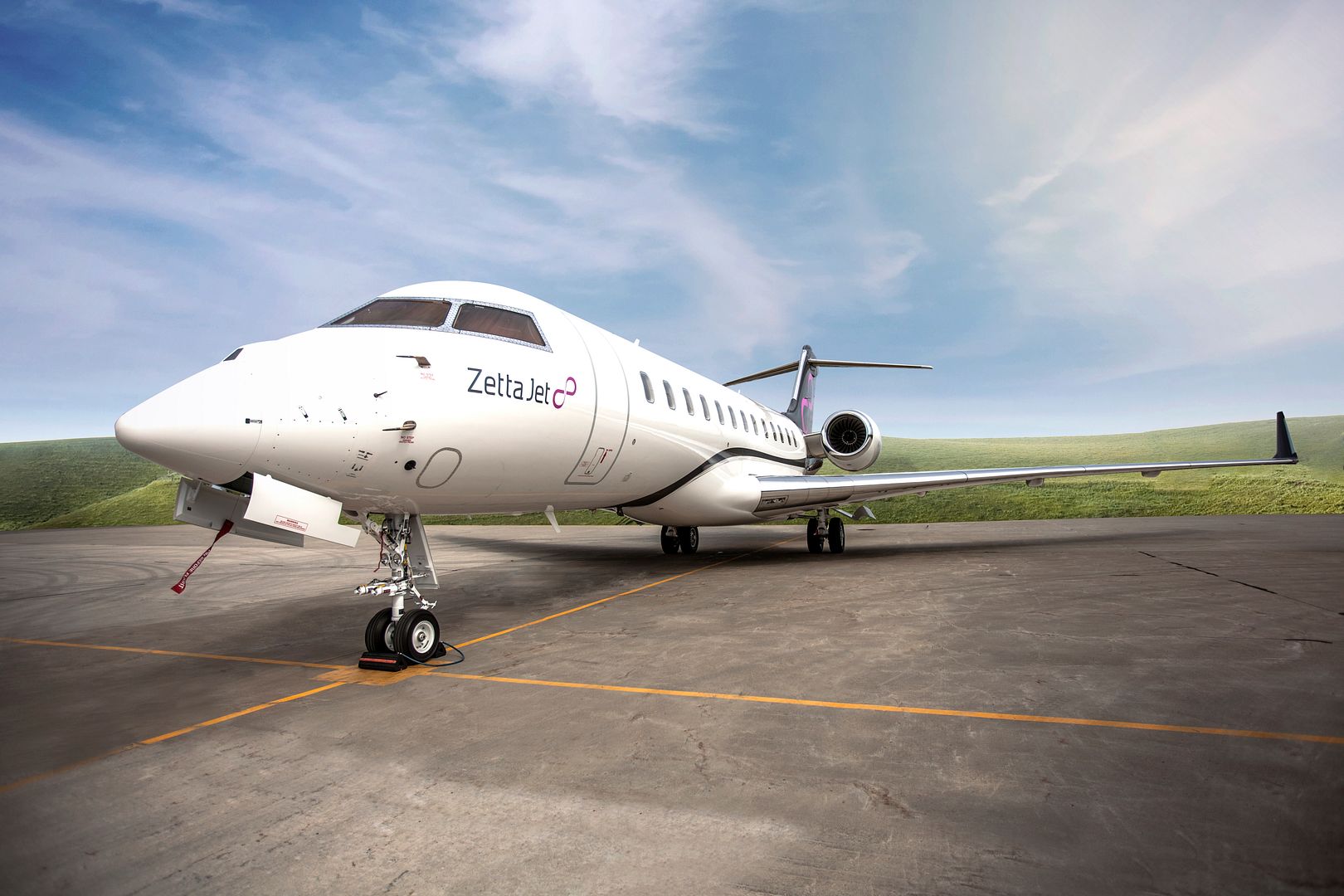
-
 Main AdminA U.S. Marine Corps MV-22B Osprey assigned to Marine Aviation Weapons And Tactics Squadron One (MAWTS-1) prepares to take off during a defensive combat maneuver exercise in Yuma, Ariz,. Sept. 29, 2016. This exercise was part of Weapons Tactics Instructors course (WTI) 1-17, a seven week event hosted by MAWTS-1 cadre which emphasizes operational integration of the six functions of Marine Corps aviation in support of a Marine Air Ground Task Force. MAWTS-1 provides standardized advanced tactical training and certification of unit instructor qualifications to support Marine aviation Training and Readiness and assists in developing and employing aviation weapons and tactics (U.S. Marine Corps photo by Lance Cpl. Andrew Huff, MAWTS-1 COMCAM)
Main AdminA U.S. Marine Corps MV-22B Osprey assigned to Marine Aviation Weapons And Tactics Squadron One (MAWTS-1) prepares to take off during a defensive combat maneuver exercise in Yuma, Ariz,. Sept. 29, 2016. This exercise was part of Weapons Tactics Instructors course (WTI) 1-17, a seven week event hosted by MAWTS-1 cadre which emphasizes operational integration of the six functions of Marine Corps aviation in support of a Marine Air Ground Task Force. MAWTS-1 provides standardized advanced tactical training and certification of unit instructor qualifications to support Marine aviation Training and Readiness and assists in developing and employing aviation weapons and tactics (U.S. Marine Corps photo by Lance Cpl. Andrew Huff, MAWTS-1 COMCAM)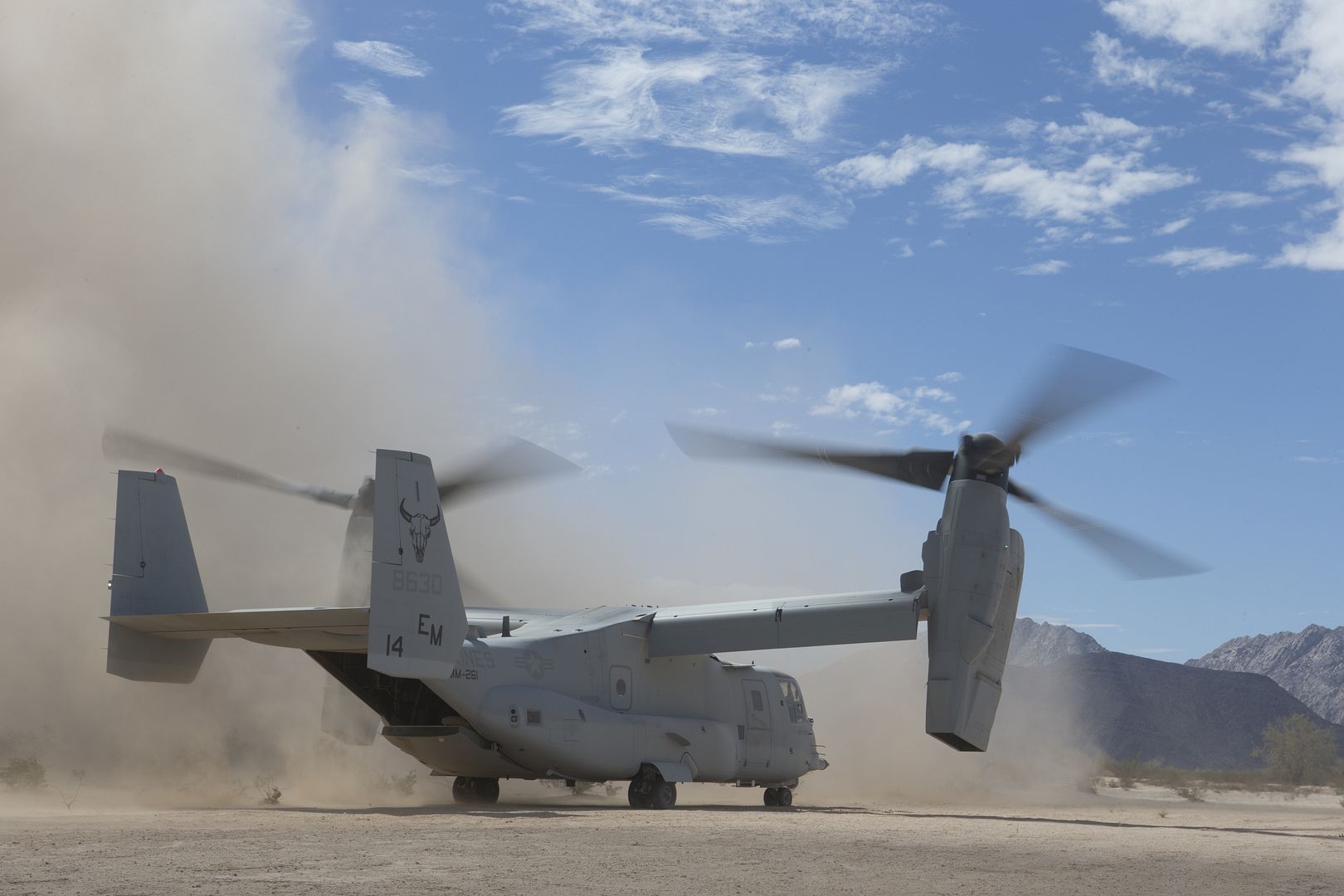
COATESVILLE, PENNSYLVANIA, September 29, 2016 ? Sikorsky, a Lockheed Martin Company (NYSE:LMT) today announced that North Slope Borough (NSB), Alaska, received its first S-92? helicopter dedicated to search and rescue. Acceptance of the aircraft occurred in a ceremony at Sikorsky?s commercial helicopter center here.
The helicopter will perform the critical mission of search and rescue operations (SAR) for all NSB residents. The aircraft was selected to provide a safe, efficient and reliable airborne response to aero medical evacuation (medevac), SAR and other emergencies. NSB is located above the Arctic Circle and experiences some of the harshest cold weather conditions in the world, with temperatures as low as -55 degrees C with the wind chill. According to the U.S. Census Bureau, NSB has a total area of 94,796 square miles of which 88,695 are land and 6,101 are water, thus the need for a long-range, all-weather capable aircraft.
?We are pleased that North Slope Borough residents have selected the S-92 helicopter to meet their critical missions in some of the harshest environments in the world,? said Sikorsky Vice President, Commercial Systems & Services Dana Fiatarone. ?With more than 91,000 search and rescue missions completed to date globally, the S-92 helicopter is a proven multi-mission platform that can perform in long-range, all weather operations."
In its milestone year, the fleet of over 275 aircraft has surpassed more than one million flight hours since 2004. NSB?s selection of the S-92 helicopter adds to Sikorsky?s product line operating ?on top of the world,? as NSB describes the region.
In addition to SAR, 11 nations currently fly the dual-engine, S-92 helicopter for their head of state missions. In May 2014, The U.S. Navy selected Sikorsky for the U.S. Presidential Helicopter Replacement Program, using the S-92 platform. S-92 helicopters also perform oil and gas transportation missions, and a variety of transportation missions for utility and airline passengers.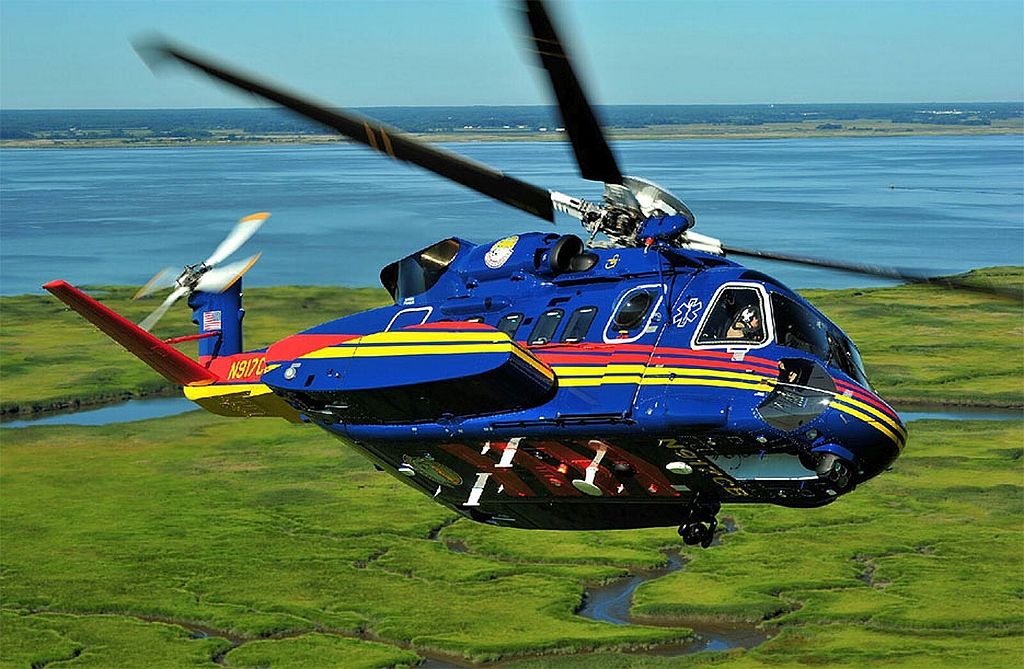
Norwegian Starfighter back in the air
-
 Main AdminTINKER AIR FORCE BASE, Okla. (AFNS) -- The first B-52H Stratofortress to be resurrected from long-term storage at the Aerospace Maintenance and Regeneration Group (AMARG) to rejoin the active strategic bomber fleet soared into the sky from Tinker Air Force Base Sept. 27.
Main AdminTINKER AIR FORCE BASE, Okla. (AFNS) -- The first B-52H Stratofortress to be resurrected from long-term storage at the Aerospace Maintenance and Regeneration Group (AMARG) to rejoin the active strategic bomber fleet soared into the sky from Tinker Air Force Base Sept. 27.
The historic flight, which the aircraft is nicknamed ?Ghost Rider,? marked the end of the warbird?s 19-month transformation from a mothballed, 55-year-old, eight-engine jet parked in the Arizona desert to a fully updated conventional- and nuclear-capable global strike bomber platform.
Tinker?s 76th Aircraft Maintenance Group handed over the plane 90 days ahead of schedule to Air Force Global Strike Command. Ghost Rider will join the 5th Bomb Wing at Minot AFB, North Dakota.
?I am extremely proud of the team that was able to deliver Ghost Rider back to Air Force Global Strike Command,? said Brig. Gen. Mark Johnson, the Oklahoma City Air Logistics Complex commander. ?This is really a testament to accomplishing the art of the possible. It shows that when there is a common goal, team members from across multiple organizations can rally behind the objective and deliver their team's full impact to the project.?
Tinker?s 565th Aircraft Maintenance Squadron completed the overhaul, modernization and restoration work in 272 calendar days.
Charles Alley, the 565th AMXS director, said maintainers, engineers and support teams were excited to work on the historic project, spending approximately 45,000 man-hours restoring Ghost Rider to fighting shape.
Alley said pilots of Tinker?s 10th Flight Test Squadron flew the B-52 six times to verify system functionality and ensure a safe and reliable aircraft before declaring the plane ready for delivery Sept. 13.
The jet needed an extra 7,000 hours over normal programmed depot maintenance to ?get it up to speed with all the other B-52s in the fleet,? Alley said.
?I told people during test flight that because the aircraft sat in the desert so long, we?re knocking all the ghosts out of it,? he said. ?It seemed like every time it came back it had two or three different things wrong with it.?
Lt. Col. Darrel Hines, a B-52 flight commander with the 10th FTS, flew the plane from Arizona to Barksdale AFB, Louisiana, in February 2015, and flew in part of the six final functional test flights. The plane arrived at Tinker AFB on Dec. 14, 2015, with overhaul and maintenance work beginning Dec. 31, 2015. The plane was due to be delivered later this year on Dec. 23 but was delivered 90 days early.
Hines praised all the organizations involved in the restoration, including the 309th AMARG, the OC-ALC, Air Force Life Cycle Management Center, and above all the maintainers whose skilled hands-on work made the difference.
?This was a great team effort from multiple commands and it was a great success,? Hines said. ?Now this plane is going to come out of Tinker back to the warfighter, and it?s going to be a huge asset to the guys going out in combat.?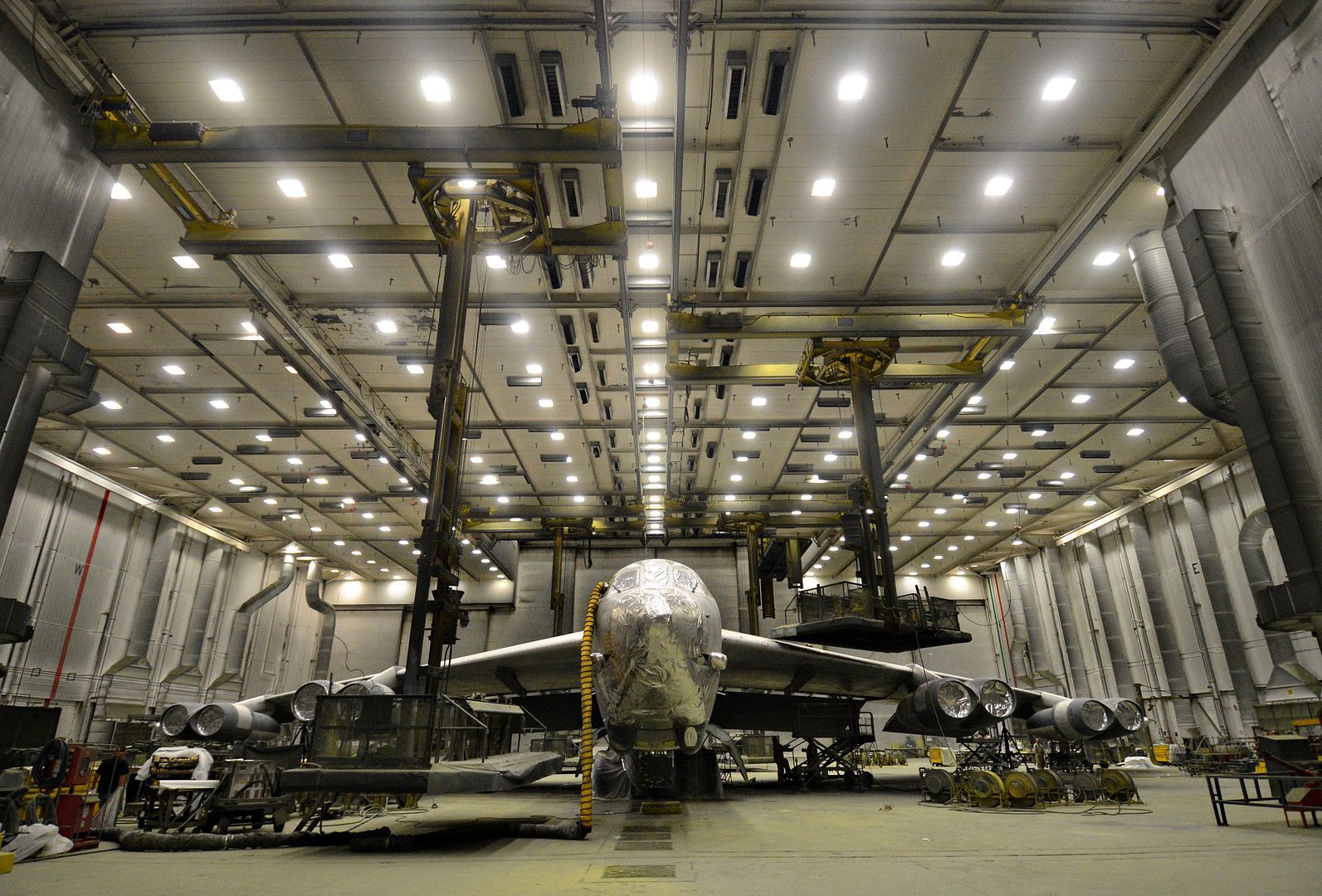
Ghost Rider will join 75 other B-52Hs in the Air Force?s operational bomber fleet.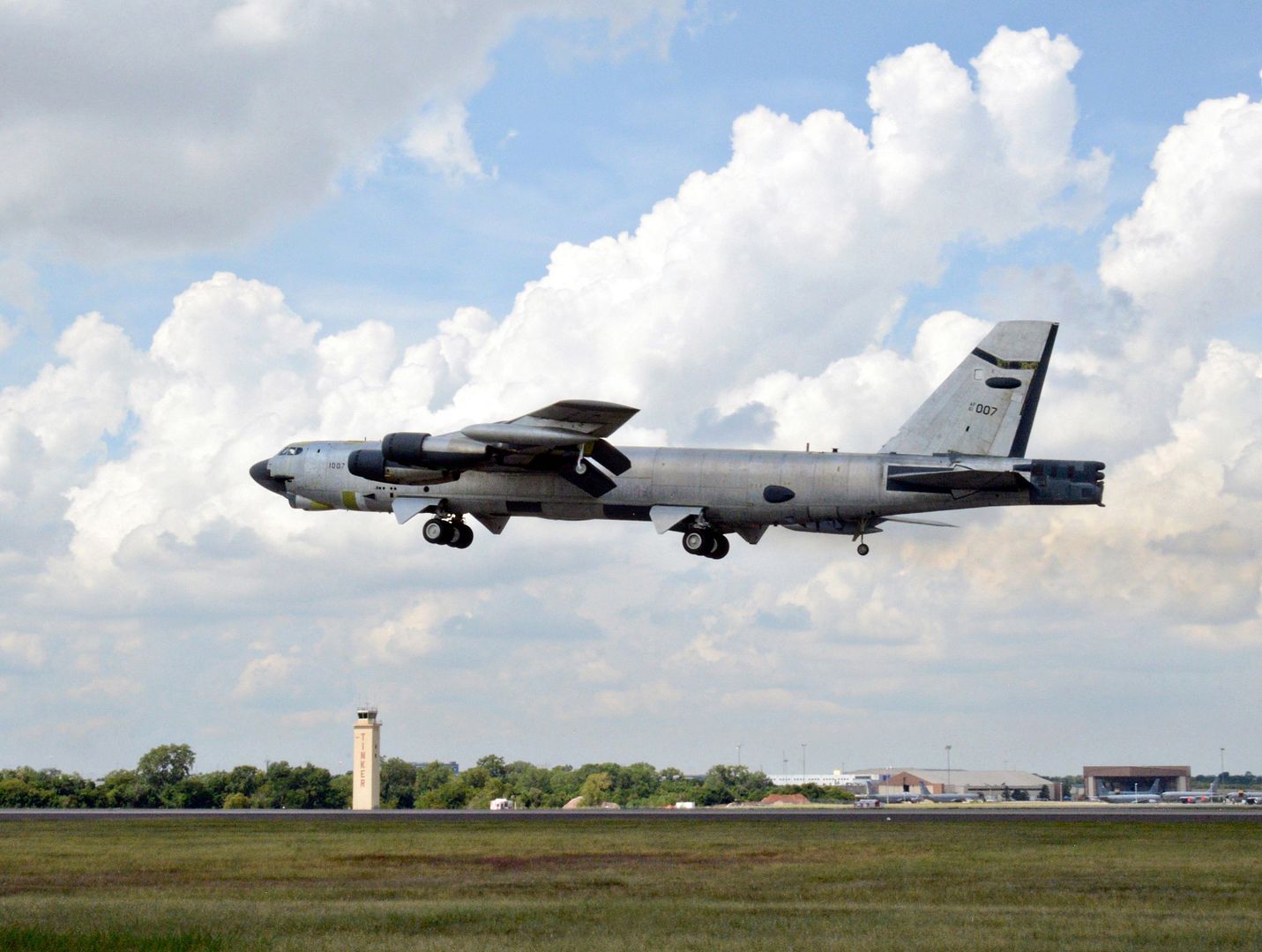
An unmanned QF-16 Full Scale Aerial Target from the 82nd Aerial Targets Squadron takes off from an auxiliary runway at Tyndall Air Force Base, Fla., Sept. 29, 2016. The QF-16 is used by the 53rd Weapons Evaluation Group for unmanned aerial target training programs and data collection for the testing of weapon systems. (U.S. Air Force photo by Tech. Sgt. Javier Cruz/Released)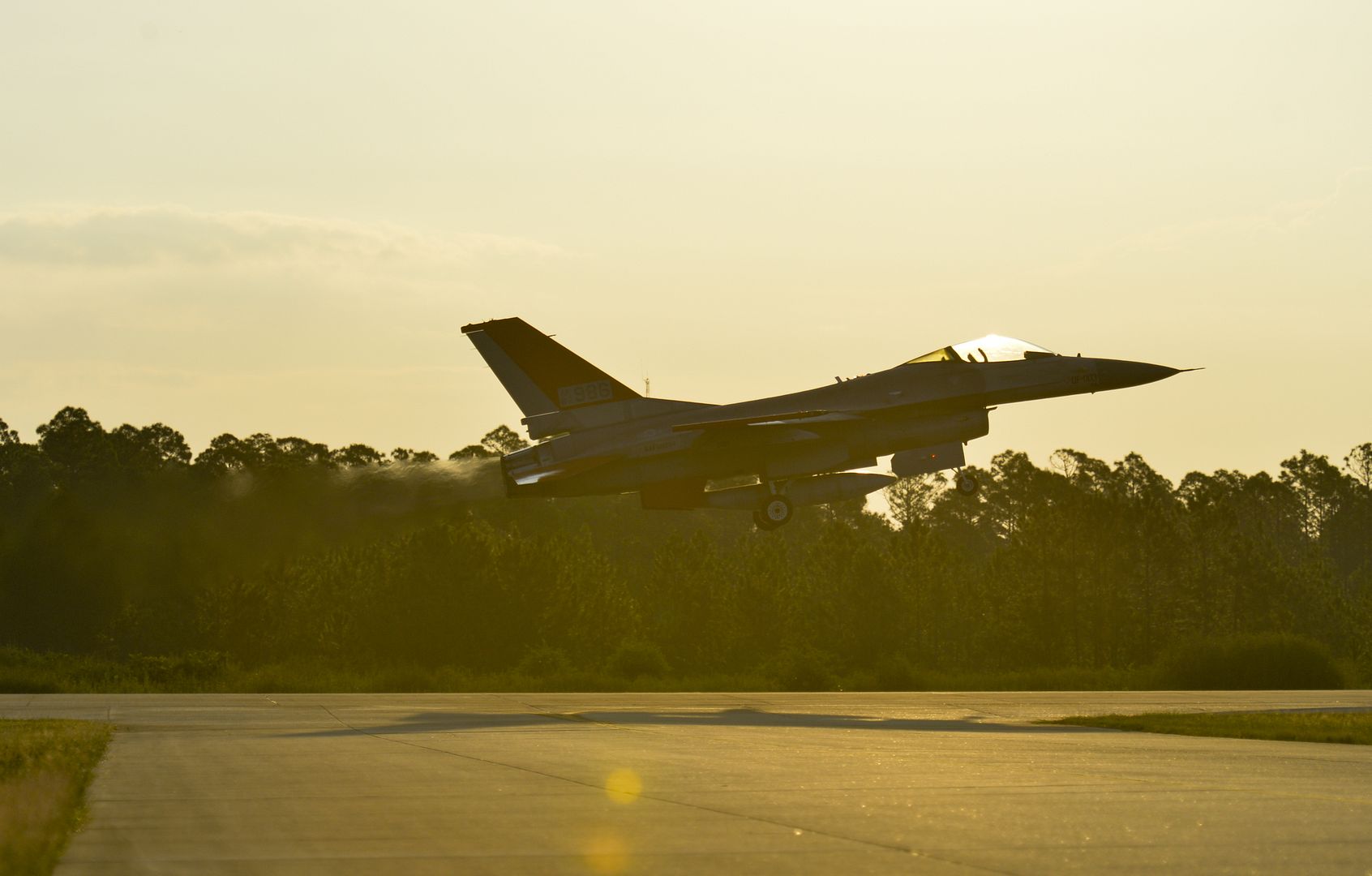
U.S. Army AH-64E Apache helicopter pilots assigned to 1st Battalion, 229th Aviation Regiment, 16th Combat Aviation Brigade, 7th Infantry Division, fly overhead at Orchard Combat Training Center, Idaho, Sept. 29, 2016. The aircraft will be part of Raptor Fury, a month-long exercise to validate 16th CAB's mission readiness with the support of nearly 1,500 7th ID Soldiers.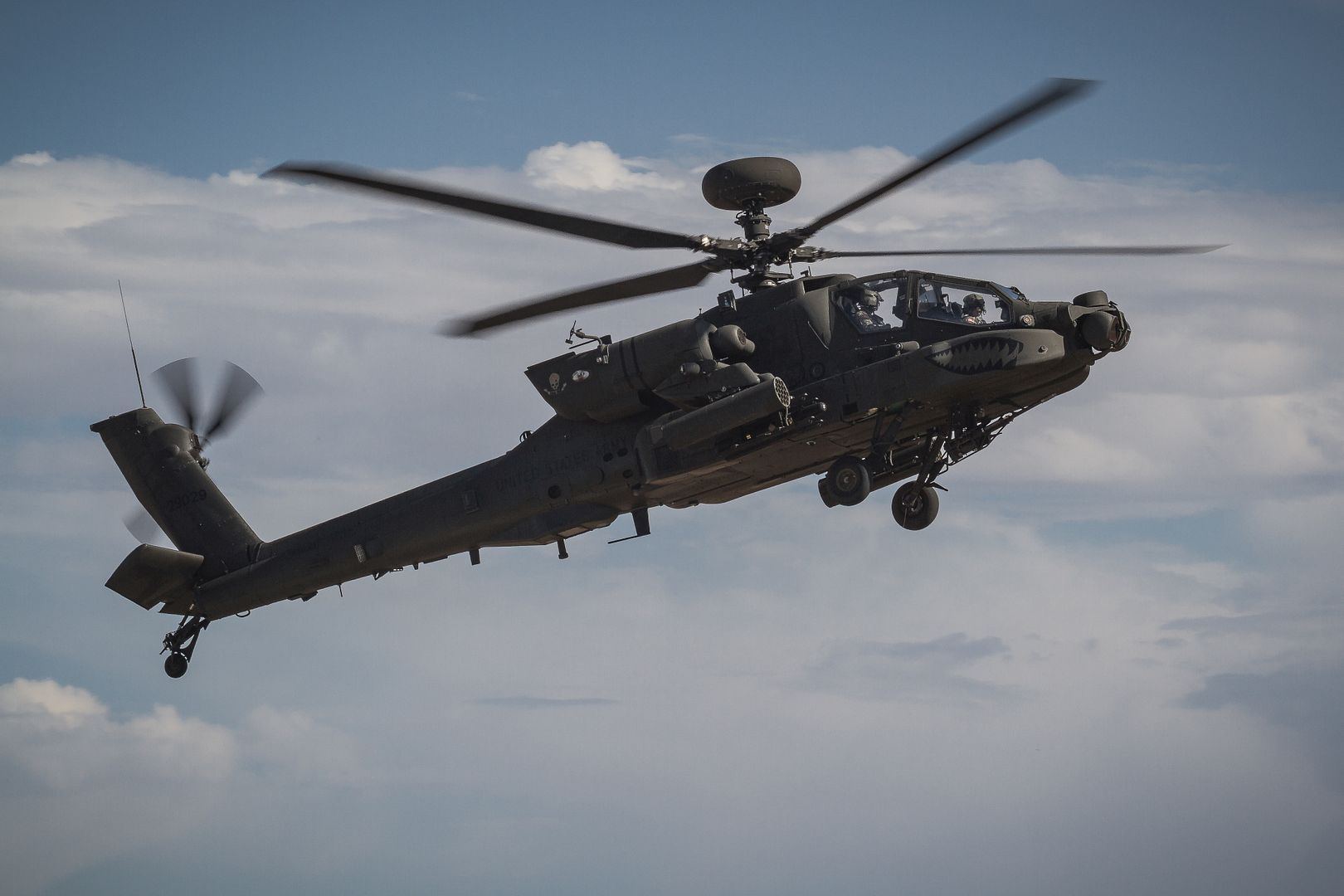
A U.S. Marine Corps CH-53E Super Stallion assigned to Marine Aviation Weapons and Tactics Squadron One (MAWTS-1) and Marines with 1st Transport Support Battalion, 1st Marine Logistics Group prepare to externally lift a Light Armored Vehicle 25 during a CH-53 tactics exercise at Auxiliary Airfield II, Yuma, Ariz., Sept. 30, 2016. The exercise is part of Weapons and Tactics Instructor (WTI) 1-17, a seven-week training event hosted by Marine Aviation Weapons and Tactics Squadron One (MAWTS-1) cadre. MAWTS-1 provides standardized tactical training and certification of unit instructor qualifications to support Marine Aviation Training and Readiness and assists in developing and employing aviation weapons and tactics. (U.S. Marine Corps photograph's by Staff Sgt. Artur Shvartsberg, MAWTS-1 COMCAM)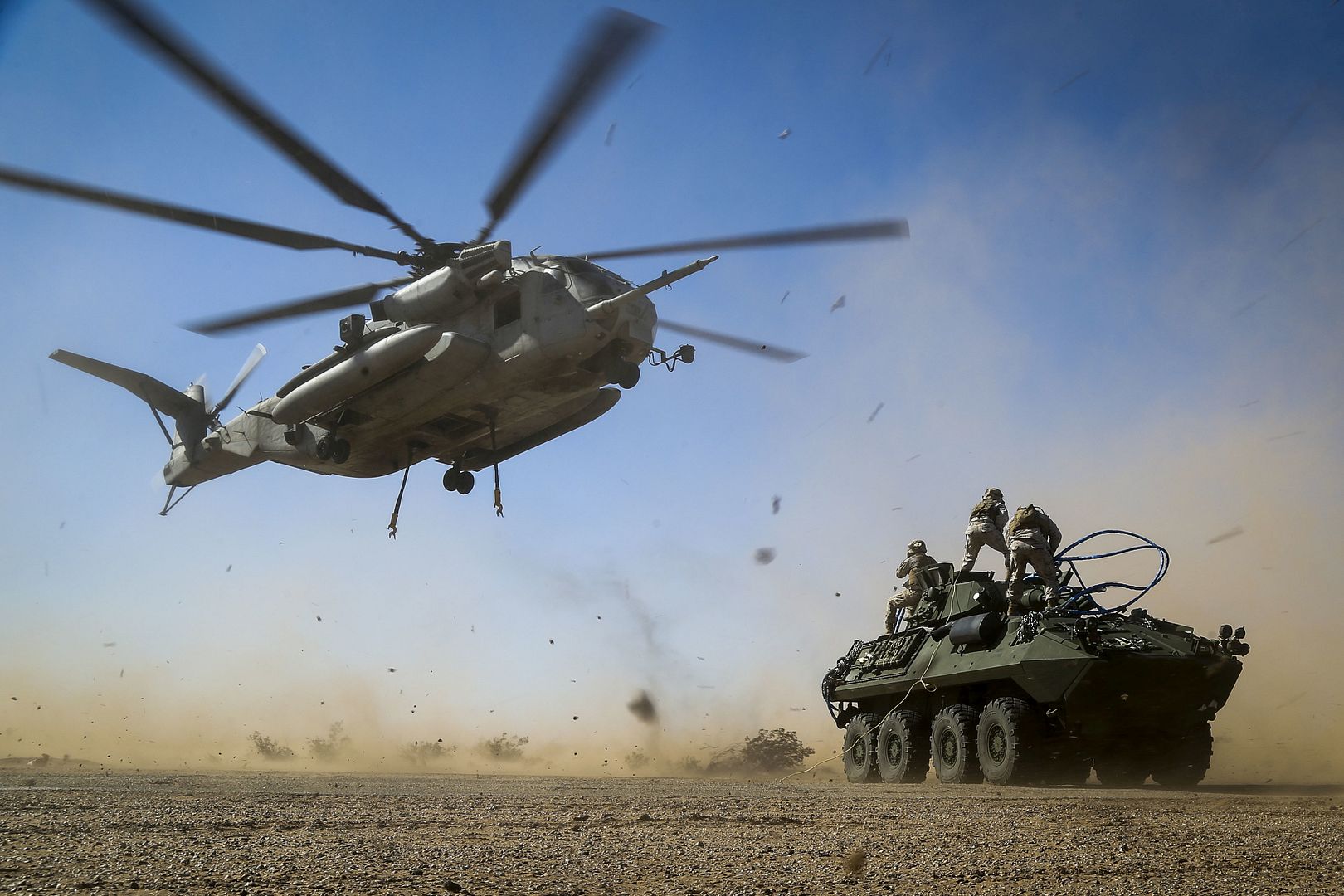
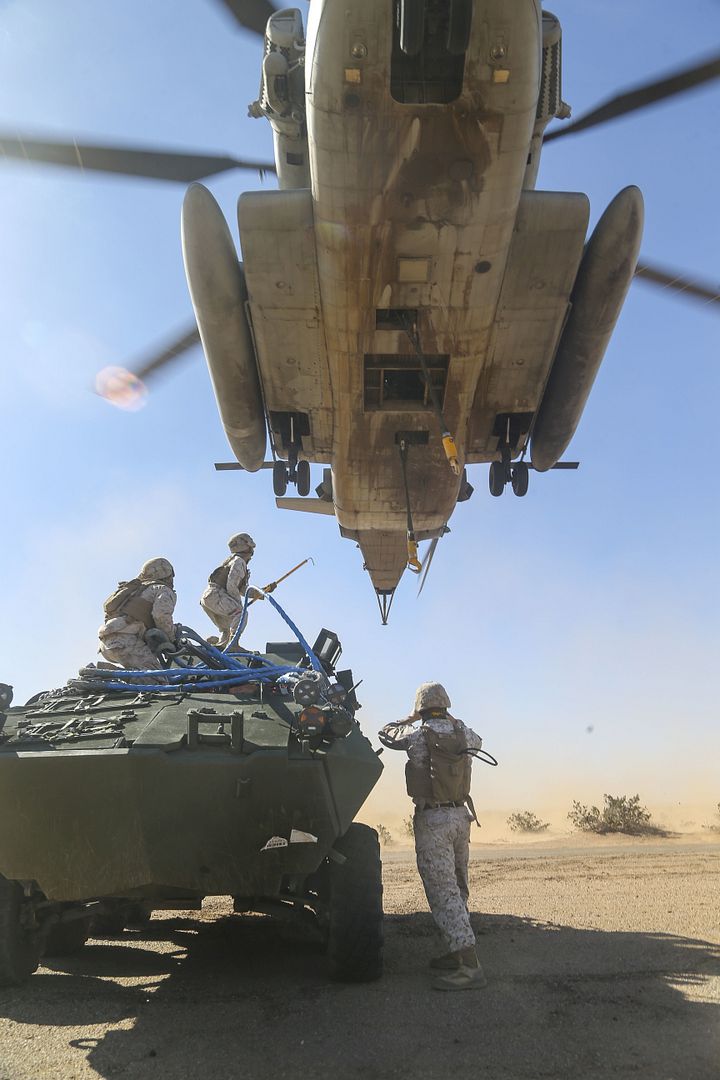
A U.S. Marine Corps CH-53E Super Stallion assigned to Marine Aviation Weapons and Tactics Squadron One (MAWTS-1) externally lifts a Light Armored Vehicle 25 during CH-53 tactics exercise at Auxiliary Airfield II, Yuma, Ariz., Sept. 30, 2016. The exercise is part of Weapons and Tactics Instructor (WTI) 1-17, a seven-week training event hosted by Marine Aviation Weapons and Tactics Squadron One (MAWTS-1) cadre. MAWTS-1 provides standardized tactical training and certification of unit instructor qualifications to support Marine Aviation Training and Readiness and assists in developing and employing aviation weapons and tactics. (U.S. Marine Corps photograph by SSgt. Artur Shvartsberg, MAWTS-1 COMCAM)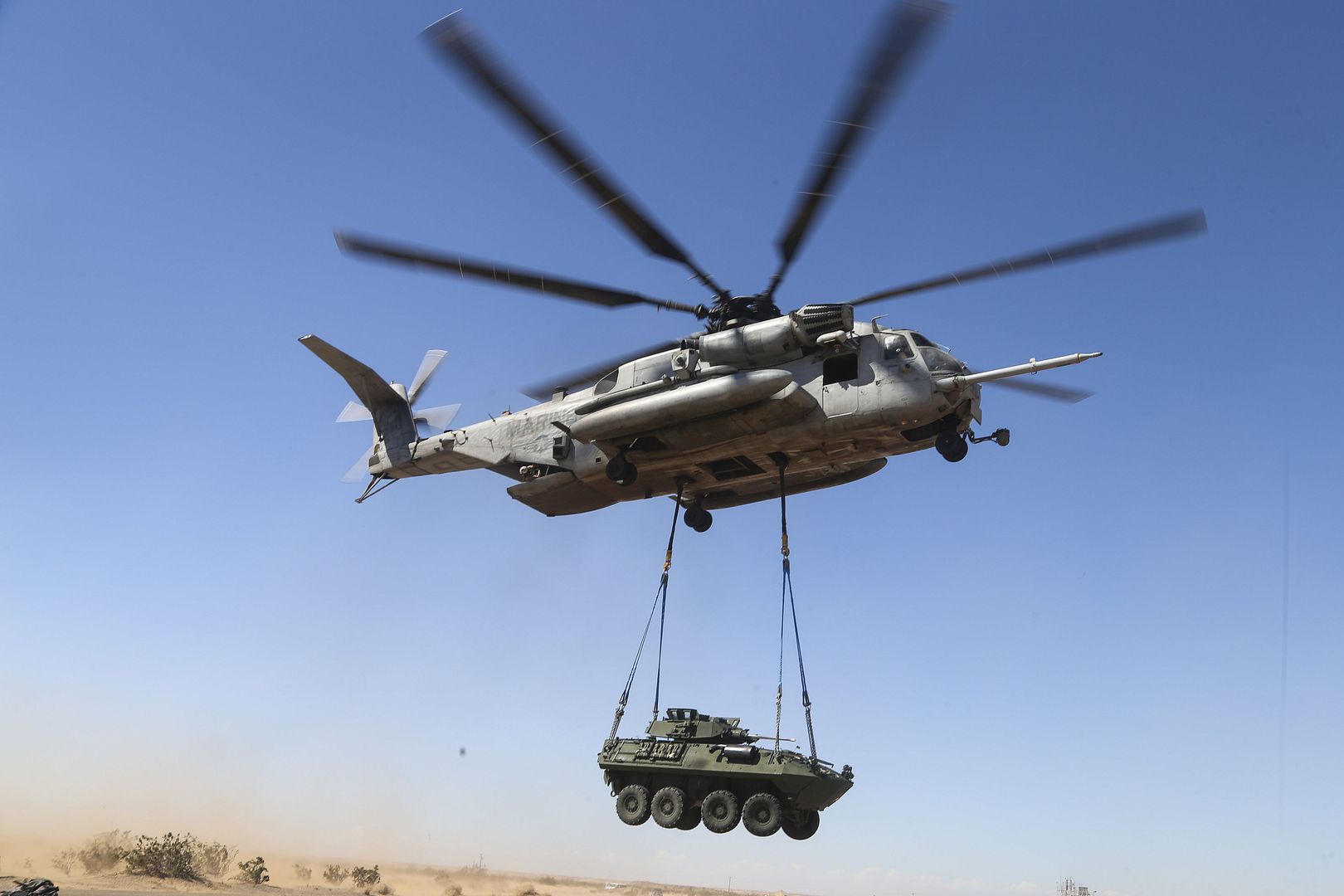
HONG KONG (Sept. 29, 2016)
Petty Officer 1st Class Jerome Dunkley stands by as guests look at a static display of CH-53E Super Stallions during a friendship reception on the amphibious assault ship USS Bonhomme Richard (LHD 6) as part of a scheduled port visit to Hong Kong. The Bonhomme Richard Expeditionary Strike Group, with embarked 31st MEU, is in Hong Kong to experience the city's rich culture and history as part of their multi-month patrol in the region. U.S. Navy photo by Petty Officer 2nd Class Sarah Villegas (Released)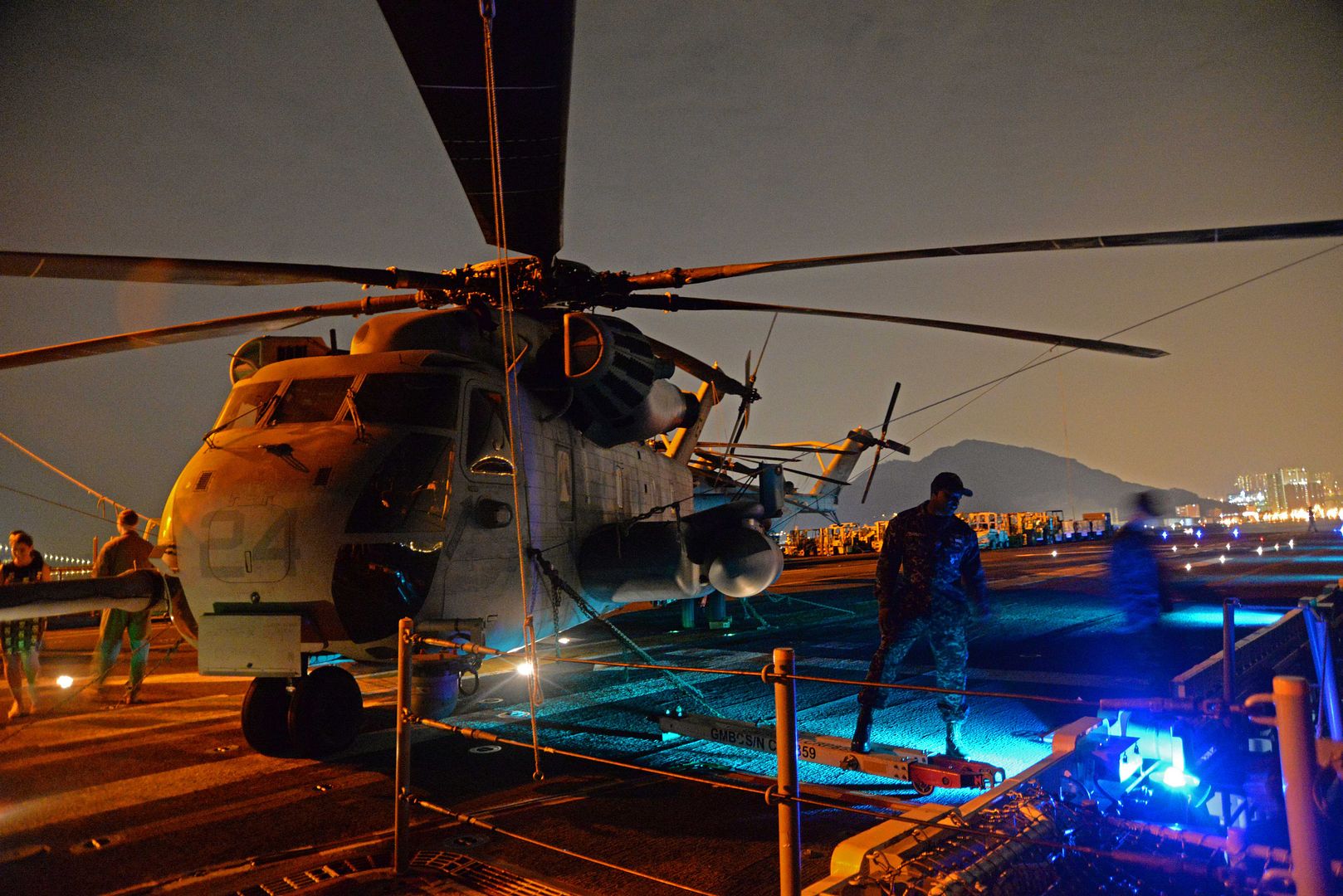
SAN DIEGO ? Sept. 29, 2016 ?Northrop Grumman Corporation (NYSE: NOC) is set to build 10 additional MQ-8C Fire Scout unmanned helicopters for the U. S. Navy, giving maritime commanders persistent, real-time intelligence, surveillance and reconnaissance (ISR).
The additional build will bring the total number of MQ-8C Fire Scout air vehicles procured to 29, extending the range and endurance of naval operations.
?MQ-8C is meeting all of its performance objectives, and the system is delivering a greater naval warfighting capability,? said Capt. Jeff Dodge, program manager, Fire Scout, Naval Air Systems Command. ?We are looking forward to moving the MQ-8C operational testing and deployment as a part of surface warfare mission packages.?
The MQ-8C Fire Scout airframe is based on the reliable commercial Bell 407, a mature helicopter with more than 1,600 airframes produced and over 4.4 million flight hours. Modifications to the MQ-8C's airframes are carried out at the Bell Helicopter facility in Ozark, Alabama, while final assembly is performed in Moss Point, Mississippi.
?In partnership with the U.S. Navy, we are dedicated to fielding this state-of-the-art, ship-based ISR platform as part of a strategy that provides warfighters ISR,? said Leslie Smith, vice president, tactical autonomous systems, Northrop Grumman Aerospace Systems. ?We are pleased to support the Navy with additional MQ-8C Fire Scouts with maritime dominance support through this procurement. Our team will strive to exceed expectations in affordability, quality and on-time delivery.?
MQ-8C Fire Scout has completed operational assessment, a developmental flight test program and is now preparing for Milestone C. MQ-8C Fire Scout has accrued over 730 flight hours and flown 353 sorties.
For more information on the MQ-8C Fire Scout, visit: www.northropgrumman.com/firescout
30 September 2016 Press Release
China Airlines (CAL) has taken delivery of its first A350-900, becoming the ninth airline to operate the world?s newest and most efficient twin engine widebody airliner.
CAL?s A350-900 is configured with a premium three class layout with a total of 306 seats, comprising 32 in Premium Business class, convertible to fully lie-flat beds, 31 in Premium Economy and 243 in the main cabin.
Altogether CAL has ordered 14 A350-900s. After an initial period flying on regional services between Taipei and Hong-Kong, the aircraft will be deployed on long haul flights, starting with Amsterdam, followed by Vienna and Rome.
The A350 XWB features the latest aerodynamic design, carbon fiber fuselage and wings, plus new fuel-efficient Rolls-Royce engines. Together, these latest technologies translate into unrivalled levels of operational efficiency, with a 25 per cent reduction in fuel burn and emissions, and significantly lower maintenance costs. The spaciousness, quietness, beautiful interior and mood lighting in the cabin contribute to superior levels of comfort and well-being, setting new standards in terms of flight experience for all passengers.
To date, Airbus has recorded a total of 810 firm orders for the A350 XWB from 43 customers worldwide, already making it one of the most successful widebody aircraft ever.
-
 Main AdminPHILIPPINE SEA (Oct. 1, 2016) An E/A-18G Growler assigned to the "Shadowhawks" of Electronic Attack Squadron (VAQ) 141 launches from the flight deck of the Navy's only forward-deployed aircraft carrier, USS Ronald Reagan (CVN 76). The primary mission of the E/A-18G Growler is suppression of enemy air defenses in support of strike aircraft and ground troops by interrupting enemy electronic activity and obtaining tactical electronic intelligence within the combat area. Ronald Reagan, the Carrier Strike Group Five (CSG 5) flagship, is on patrol supporting security and stability in the Indo-Asia-Pacific region. (U.S. Navy photo by Petty Officer 3rd Class Nathan Burke/Released)
Main AdminPHILIPPINE SEA (Oct. 1, 2016) An E/A-18G Growler assigned to the "Shadowhawks" of Electronic Attack Squadron (VAQ) 141 launches from the flight deck of the Navy's only forward-deployed aircraft carrier, USS Ronald Reagan (CVN 76). The primary mission of the E/A-18G Growler is suppression of enemy air defenses in support of strike aircraft and ground troops by interrupting enemy electronic activity and obtaining tactical electronic intelligence within the combat area. Ronald Reagan, the Carrier Strike Group Five (CSG 5) flagship, is on patrol supporting security and stability in the Indo-Asia-Pacific region. (U.S. Navy photo by Petty Officer 3rd Class Nathan Burke/Released)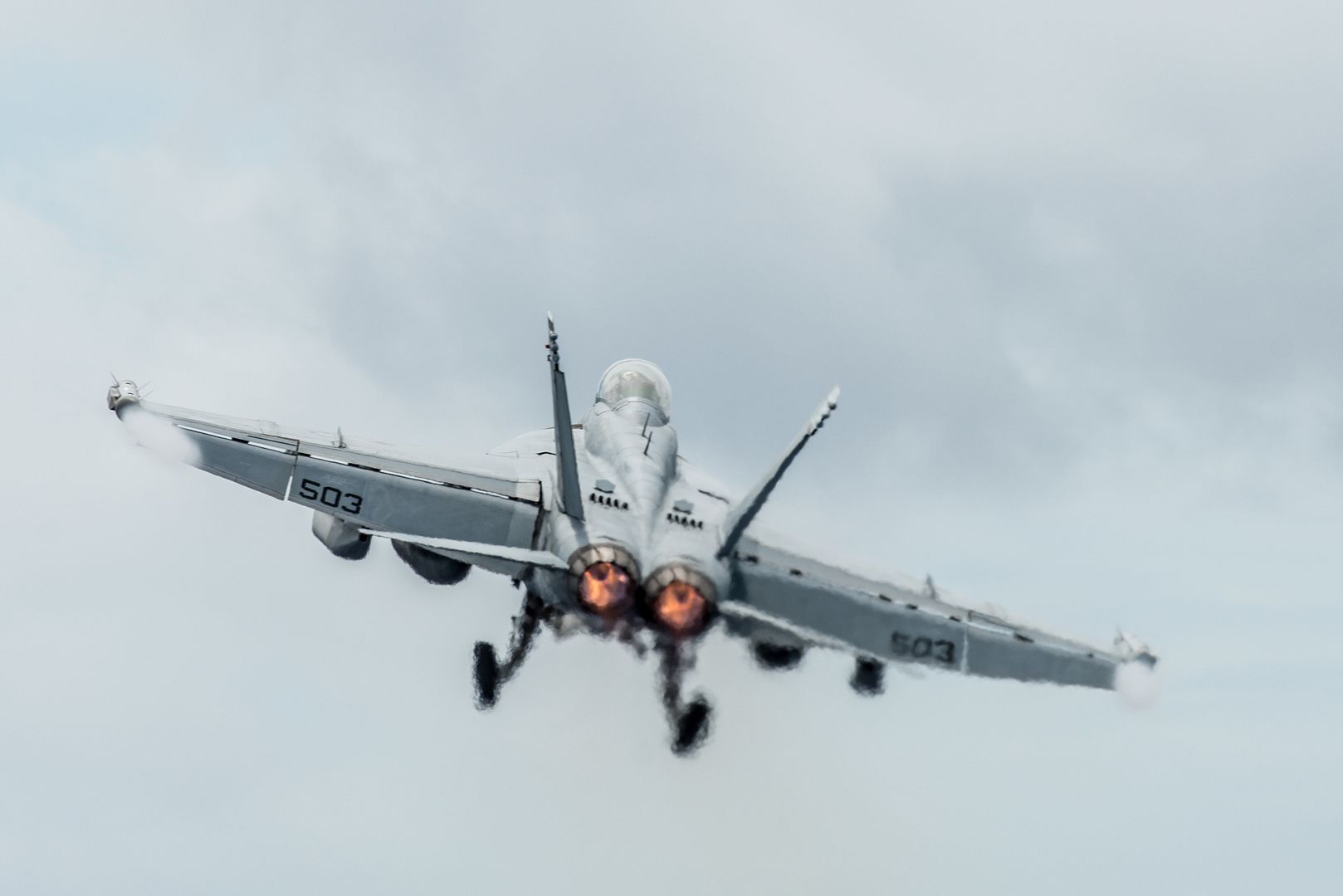
PHILIPPINE SEA (Oct. 1, 2016) An F/A-18E Super Hornet assigned to the "Eagles" of Strike Fighter Squadron (VFA) 115 launches from the flight deck of the Navy's only forward-deployed aircraft carrier, USS Ronald Reagan (CVN 76). The F/A-18 Super Hornet is an all-weather fighter/attack aircraft that provides a carrier-strike group with multiple uses, including fighter escort, fleet air defense, close and deep-air support, electronic attack and precision-guided weapons strike capabilities. Ronald Reagan, the Carrier Strike Group Five (CSG 5) flagship, is on patrol supporting security and stability in the Indo-Asia-Pacific region. (U.S. Navy photo by Petty Officer 3rd Class Nathan Burke/Released)
U.S. Marine Corps CH-53E Super Stallion assigned to Marine Aviation Weapons and Tactics Squadron One (MAWTS-1) prepares to land with a M777 Howitzer during a CH-53 day battle drill exercise at Fire Base Burt, Calif., Oct. 1, 2016. The CH-53 battle drill is part of Weapons and Tactics Instructor (WTI) 1-17, a seven-week training event hosted by MAWTS-1 cadre. MAWTS-1 provides standardized tactical training and certification of unit instructor qualifications to support Marine Aviation Training and Readiness and assists in developing and employing aviation weapons and tactics. (U.S. Marine Corps photograph by Staff Sgt. Artur Shvartsberg, MAWTS-1 COMCAM)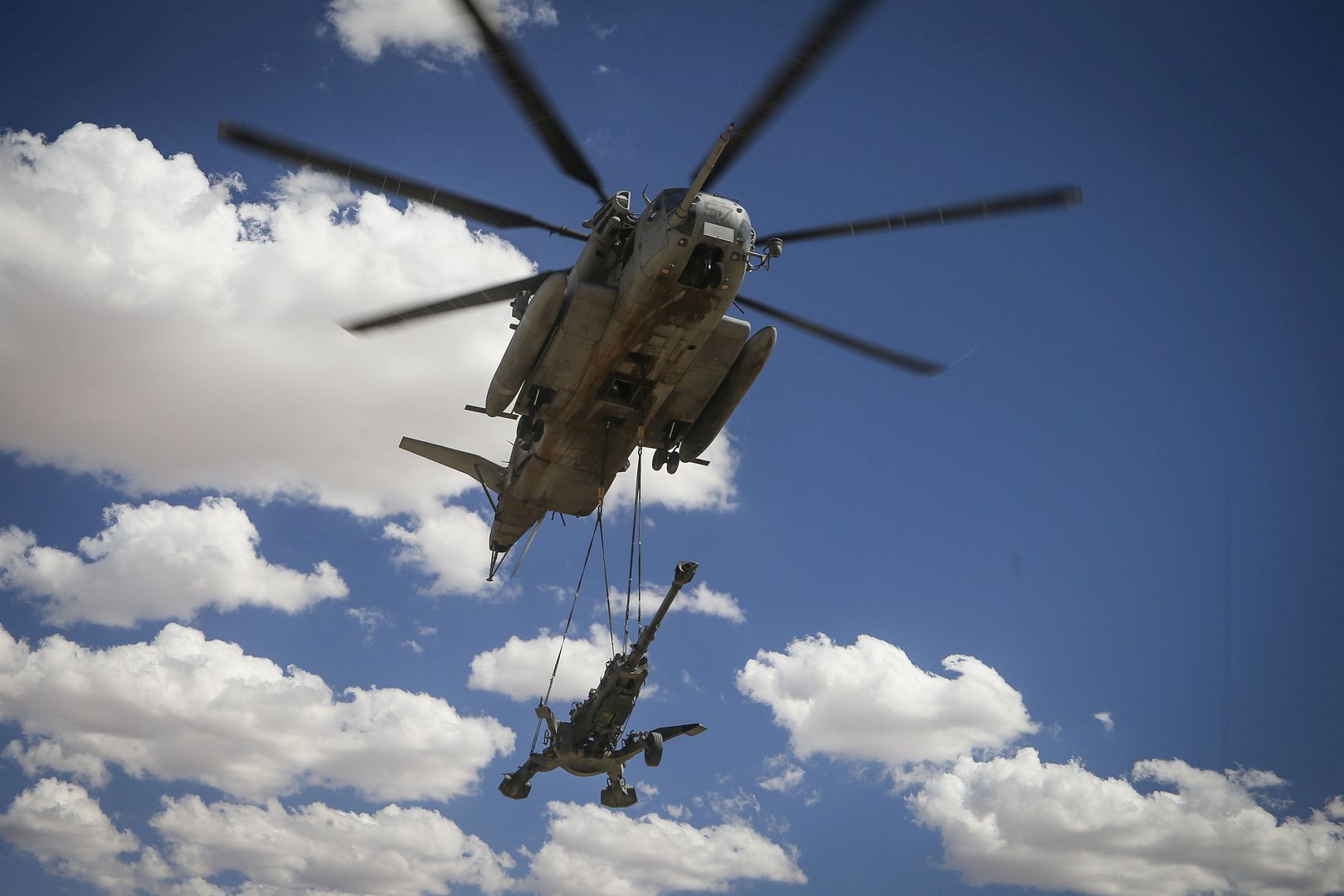
-
 Main AdminA C-17 assigned to Dover Air Force Base, Delaware, lands at the Fresno Yosemite International Airport Oct. 1, 2016. The airlifted cargo and two personnel assigned to the 144th Fighter Wing returned from a deployment in Europe as part of a theater Security Package in support of Operation Atlantic Resolve. (U.S. Air National Guard photo by Senior Airman Klynne Pearl Serrano)
Main AdminA C-17 assigned to Dover Air Force Base, Delaware, lands at the Fresno Yosemite International Airport Oct. 1, 2016. The airlifted cargo and two personnel assigned to the 144th Fighter Wing returned from a deployment in Europe as part of a theater Security Package in support of Operation Atlantic Resolve. (U.S. Air National Guard photo by Senior Airman Klynne Pearl Serrano)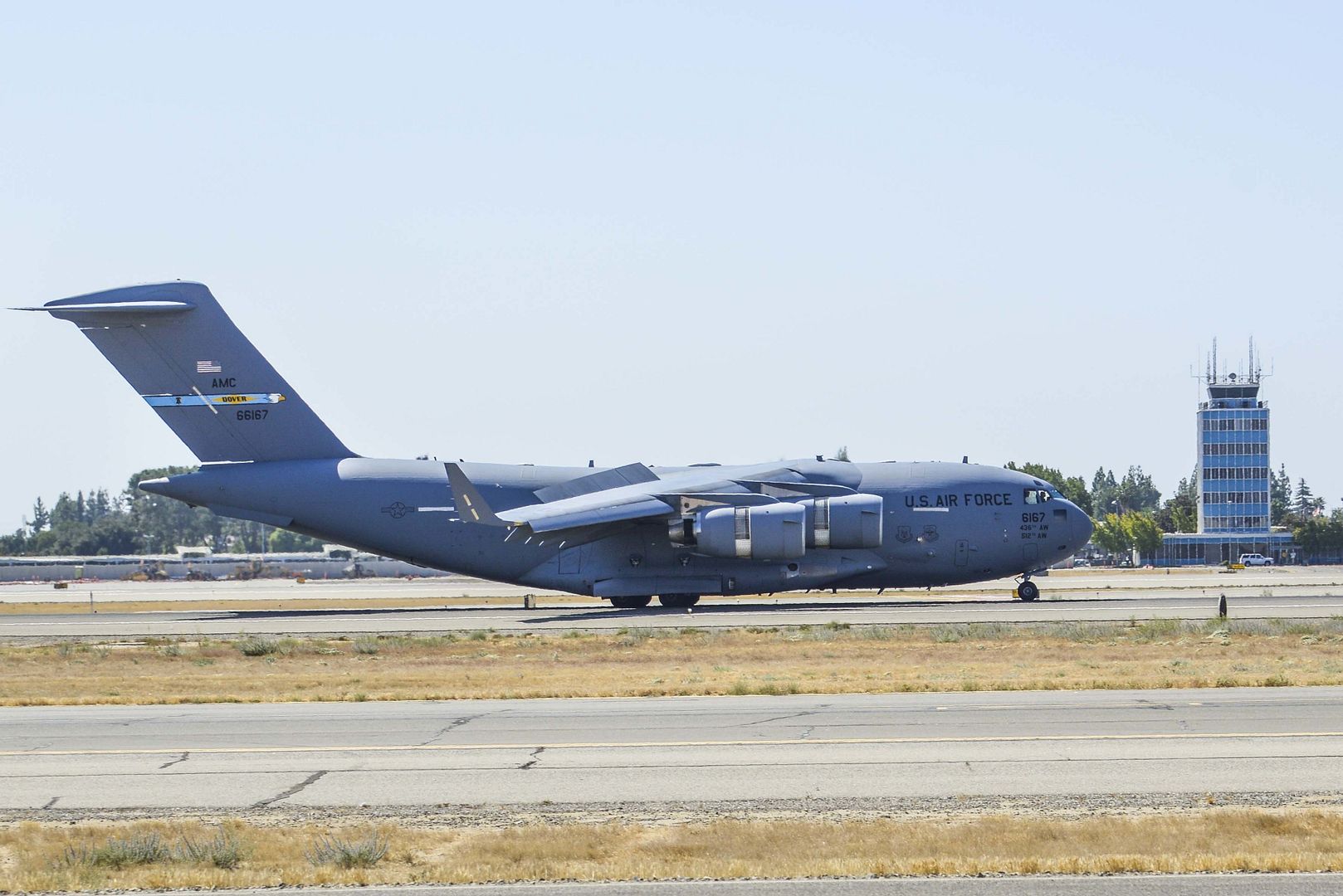
A U.S. Army Unmanned Aerial System assigned to 1st Stryker Brigade Combat Team, 2nd Infantry Division, 7th Infantry Division gains altitude after launch at Orchard Combat Training Center, Idaho, Oct. 2, 2016. The Shadow is being used as part of Raptor Fury, a month-long training exercise to validate the mission readiness of 16th CAB with support from nearly 1,500 7th ID Soldiers.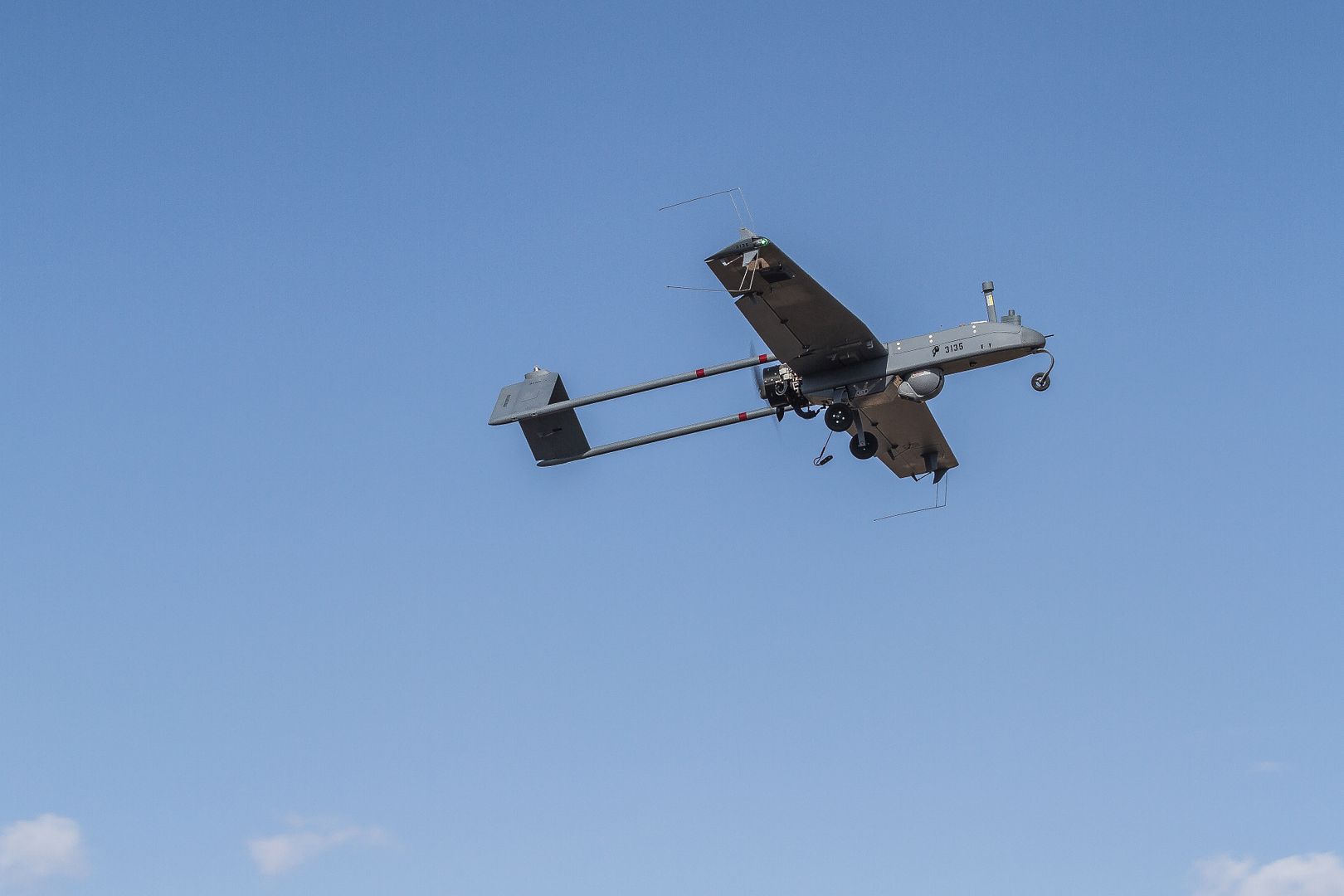
U.S. Army AH-64E Apache helicopter pilots assigned to 16th Combat Aviation Brigade, 7th Infantry Division conducts taxi after refueling during gunnery at Orchard Combat Training Center, Idaho, Oct. 1, 2016. The Apache is being used as part of Raptor Fury, a month-long training exercise to validate the mission readiness of 16th CAB with support from nearly 1,500 7th ID Soldiers.
-
 Main AdminMEDITERRANEAN SEA (Oct. 2, 2016) U.S. Navy Sailors fuel a French NH-90 helicopter aboard the guided-missile destroyer USS Ross (DDG 71). The ship is providing multi-warfare defense support to Charles de Gaule carrier-based operations in the Eastern Mediterranean against identified ISIL positions in support of Operation Inherent Resolve. (U.S. Navy photo by Petty Officer 1st Class Theron J. Godbold/Released)
Main AdminMEDITERRANEAN SEA (Oct. 2, 2016) U.S. Navy Sailors fuel a French NH-90 helicopter aboard the guided-missile destroyer USS Ross (DDG 71). The ship is providing multi-warfare defense support to Charles de Gaule carrier-based operations in the Eastern Mediterranean against identified ISIL positions in support of Operation Inherent Resolve. (U.S. Navy photo by Petty Officer 1st Class Theron J. Godbold/Released)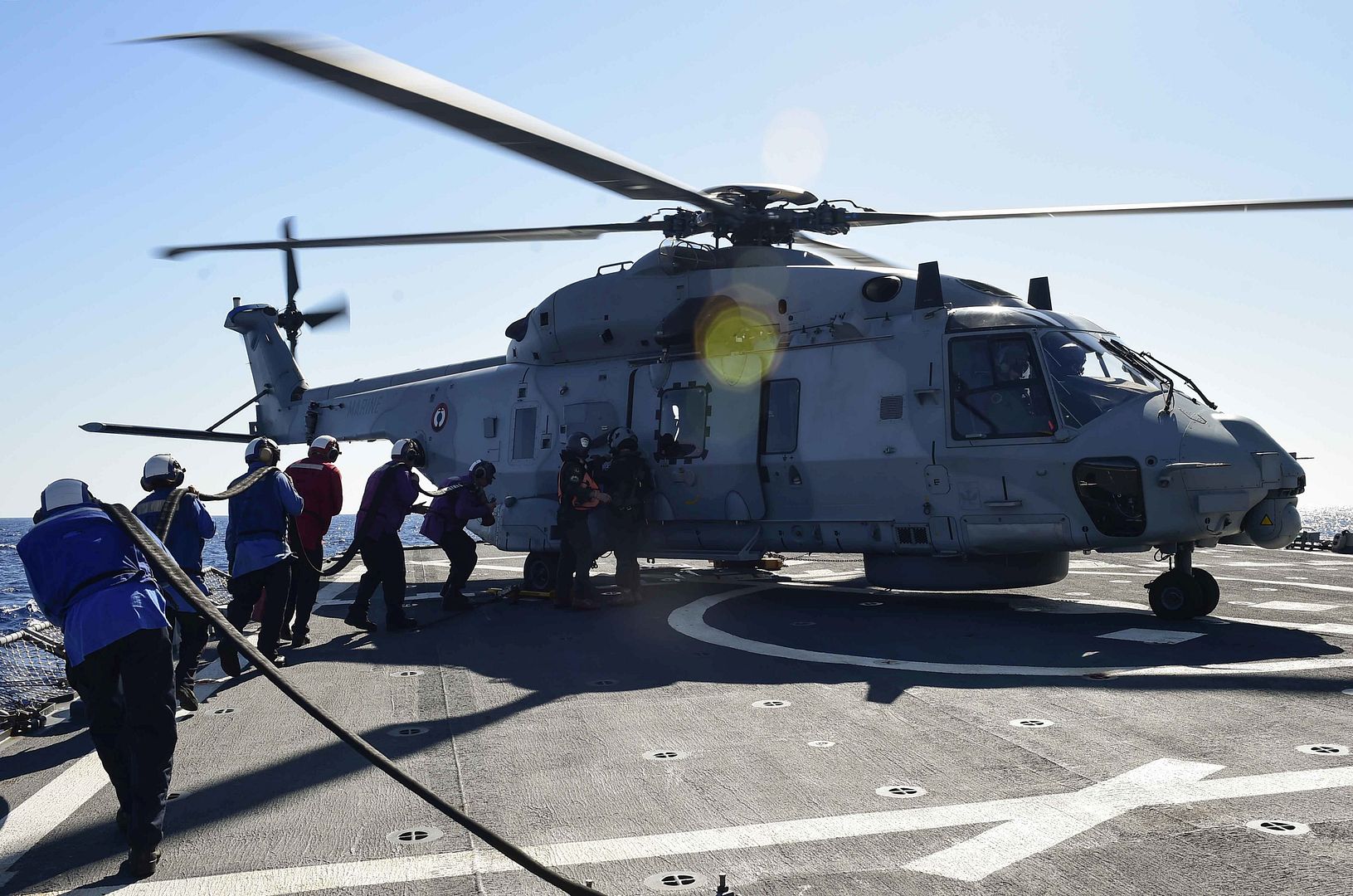
A C-130T prepares to take off and execute a functional-check flight at Davis-Monthan Air Force Base, Ariz., Sept. 28, 2016. The aircraft has been in storage at the 309th Aerospace Maintenance and Regeneration Group since April 2015 before the 576th Aerospace Maintenance and Regeneration Squadron prepared it for use by the Philippine Air Force this past June. (U.S. Air Force photo by Airman Nathan H. Barbour)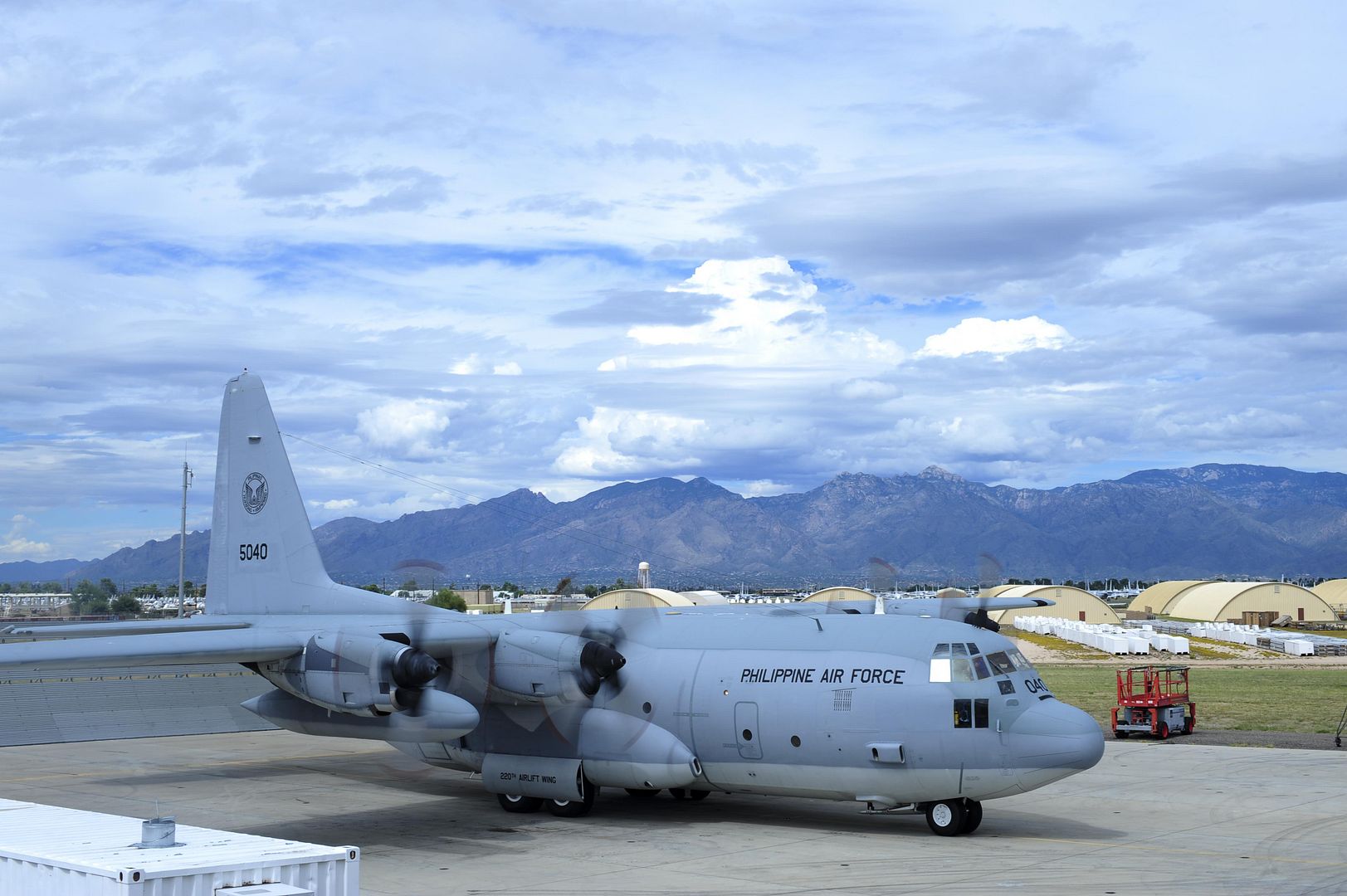
EGLIN AIR FORCE BASE, Fla. --
Team Eglin answered the warfighter?s call to rapidly test, integrate and deploy a high precision, low collateral weapon for immediate use in theater ? in just six months.
Brig. Gen. Shaun Morris, Air Force Program Executive Officer for Weapons and director of the Armament Directorate, assembled a team to produce a rapid fielding plan for the Advanced Precision Kill Weapon System II, a laser-guided rocket that turns existing Hydra 70 unguided rockets into precision-guided munitions through the addition of a laser guidance kit.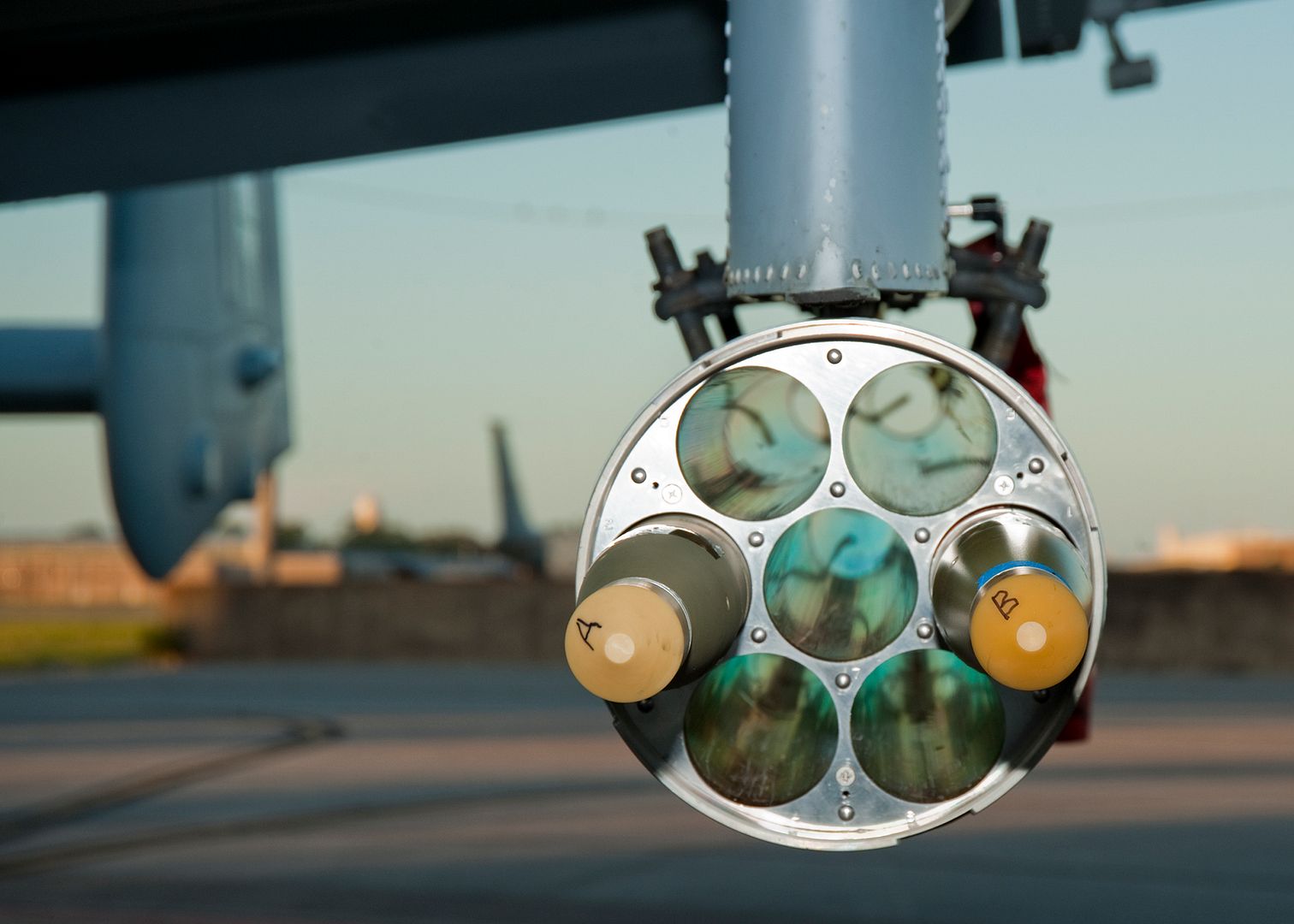
APKWS fills the gap between an unguided 2.75-inch rocket and the Hellfire missile at less than one-third of the cost with a multi-shot capability. The conversion is an inexpensive modification designed to destroy targets while limiting collateral damage in close combat, according to Maj. Jesse Moreno, APKWS program manager.
?We delivered an Initial Fielding Capability to the warfighter in March, three months faster than originally planned,? said Moreno. ?We also achieved integration of APWKS with the M151 high explosive fragmentation warhead in July, also ahead of schedule by four months.?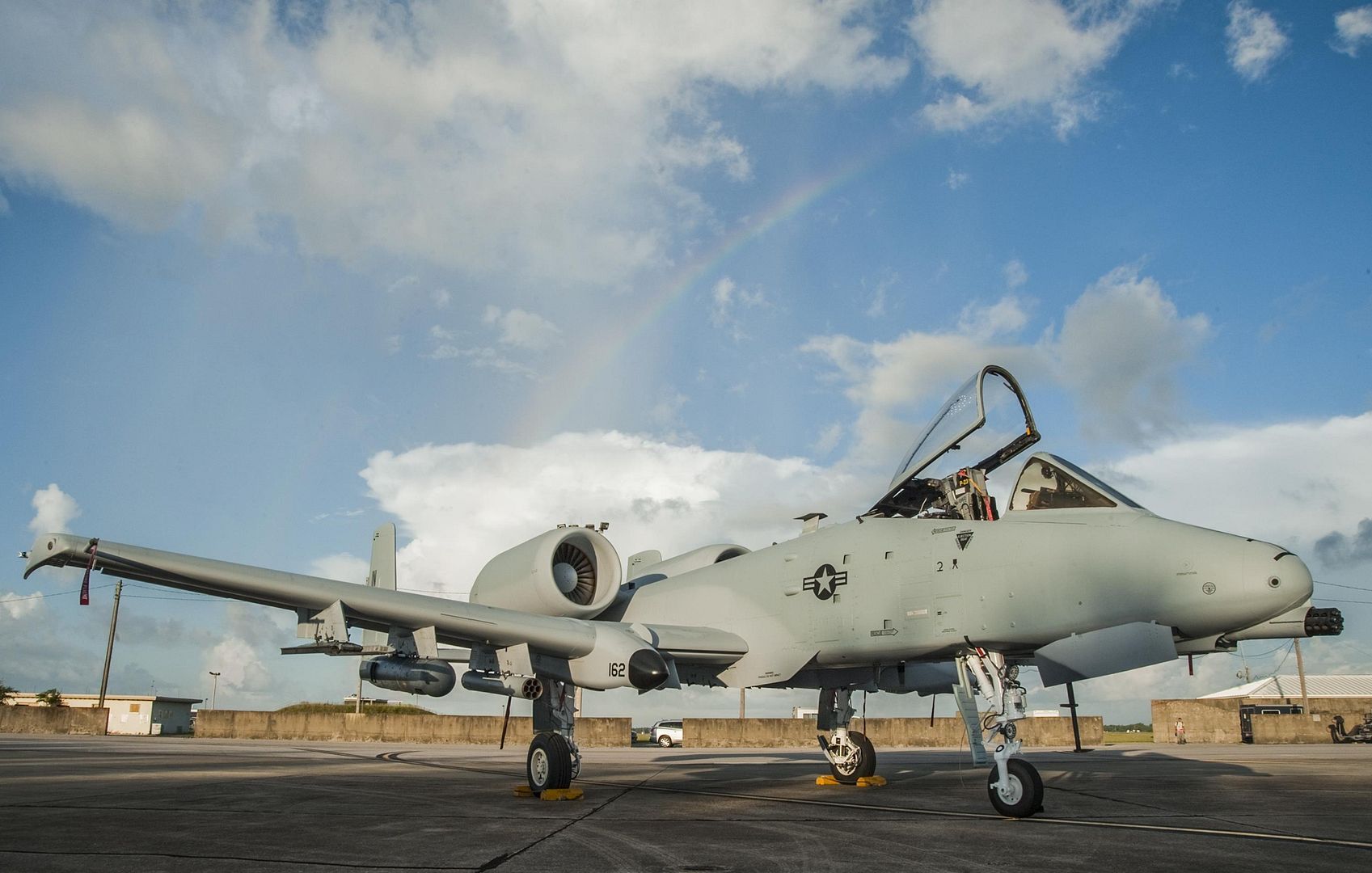
The M151, employed against personnel, material and non-armored vehicles, is one of several warheads in the Hydra 70 family. Traditionally referred to as the ?10-Pounder,? the weapon?s burst radius is ten meters, however, high velocity fragments can expand its lethality radius beyond 50 meters causing excessive damage. APKWS reduces the M151?s collateral damage while maintaining its integrity in combat.
To accelerate progress, the APKWS Program Office assembled stakeholders from across the Air Force and coordinated with its Navy partners to formulate a plan to integrate the M151 with existing rotary wing hardware. This teamwork was essential, because the Navy owned the program of record, contracting vehicles and production line for APKWS II, according to Moreno.
The team also leveraged the expertise of the 96th Test Wing community to execute a rapid test event known as Plan 70, where all wing resources were brought to bear on a single test effort to meet and exceed the expected timeline. The effort proved successful as a Compatibility Captive Flight Profile test was performed in just 14 days, as compared to the average timeline of three months.
?The 96th TW demonstrated its ability to be flexible and executed with precision, delivering a low collateral, moving target, precision attack, and game-changing weapon ahead of schedule,? said Joseph Rojas, Air Force Seek Eagle Office F-16 Project Manager.
According to Moreno, what makes the CFP effort crucial is it?s the lead requirement to receiving an Air Force Seek Eagle Office store certification recommendation ? clearance to test APKWS in the air.
In July, the team successfully performed a final round of integration test shots with the A-10 and F-16 platforms, overseeing seven aircraft missions with 14 successful A-10 and F-16 test shots. Missions included minimum and maximum range, ripple release and trajectory shaping tests against a variety of realistic targets ? all validating the program?s capability.
The team solicited the support of the Arizona Air National Guard Air Reserve Test Center to work with the 96th TW community on these tests.
?The APKWS program is a true testament of outstanding team work across multiple services and organizations,? said Moreno. ?We successfully fielded an initial capability to the warfighter that enabled enemy target engagement in combat with no collateral damage within 11 days of deploying the system.?
A significant advantage APKWS brings to the fight is an increase weapons loadout for both the A-10 and F-16. This close-air-support capability is a game-changer for warfighters, allowing them to engage several more targets where collateral damage is a concern, according to Moreno.
?APKWS is a great example of what the acquisition enterprise and Team Eglin is capable of,? said Morris. ?We showcased our ability to rapidly test, integrate, deploy and use the system in combat within six months of congressional approval.?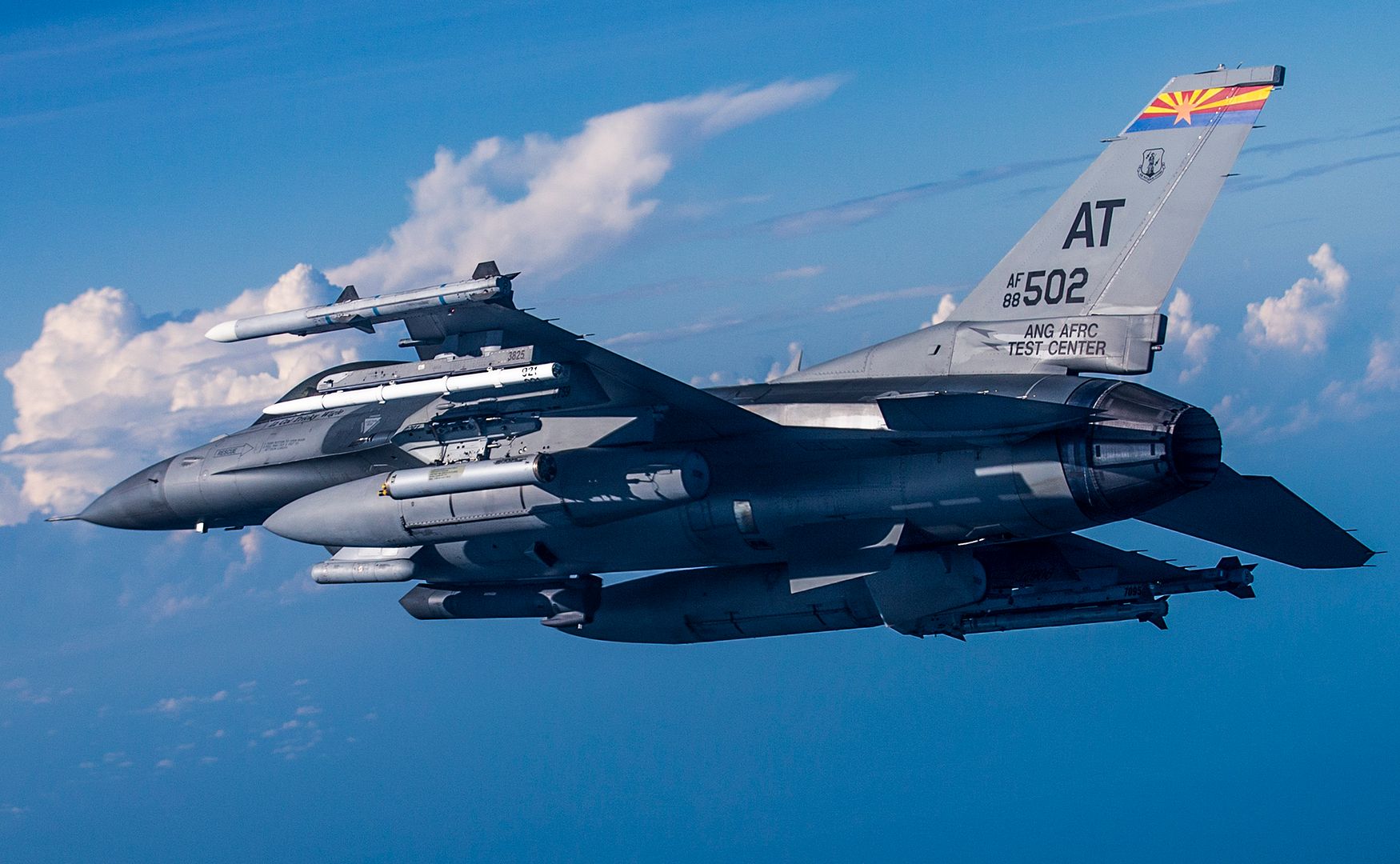
The team has moved forward and is now engaged in integrating another rotary-wing Hydra 70 system, the M282 Multi-Purpose Penetrator. When integrated with APKWS, the warhead will allow the warfighter to engage and destroy fixed and moving light armor vehicles in addition to expanding options to engage different target sets across the battlefield.
Recent ground-to-ground testing of the integrated M282 successfully showcased its desired capability. The team plans to start tests on the A-10 and F-16 platforms later this fall and deliver a limited capability to the warfighter early next year, according to Moreno.
?Team Eglin is committed to quickly and safely delivering critical systems to the warfighter,? said Morris. ?APKWS is just the latest example in a long tradition of excellence the enterprise represents.?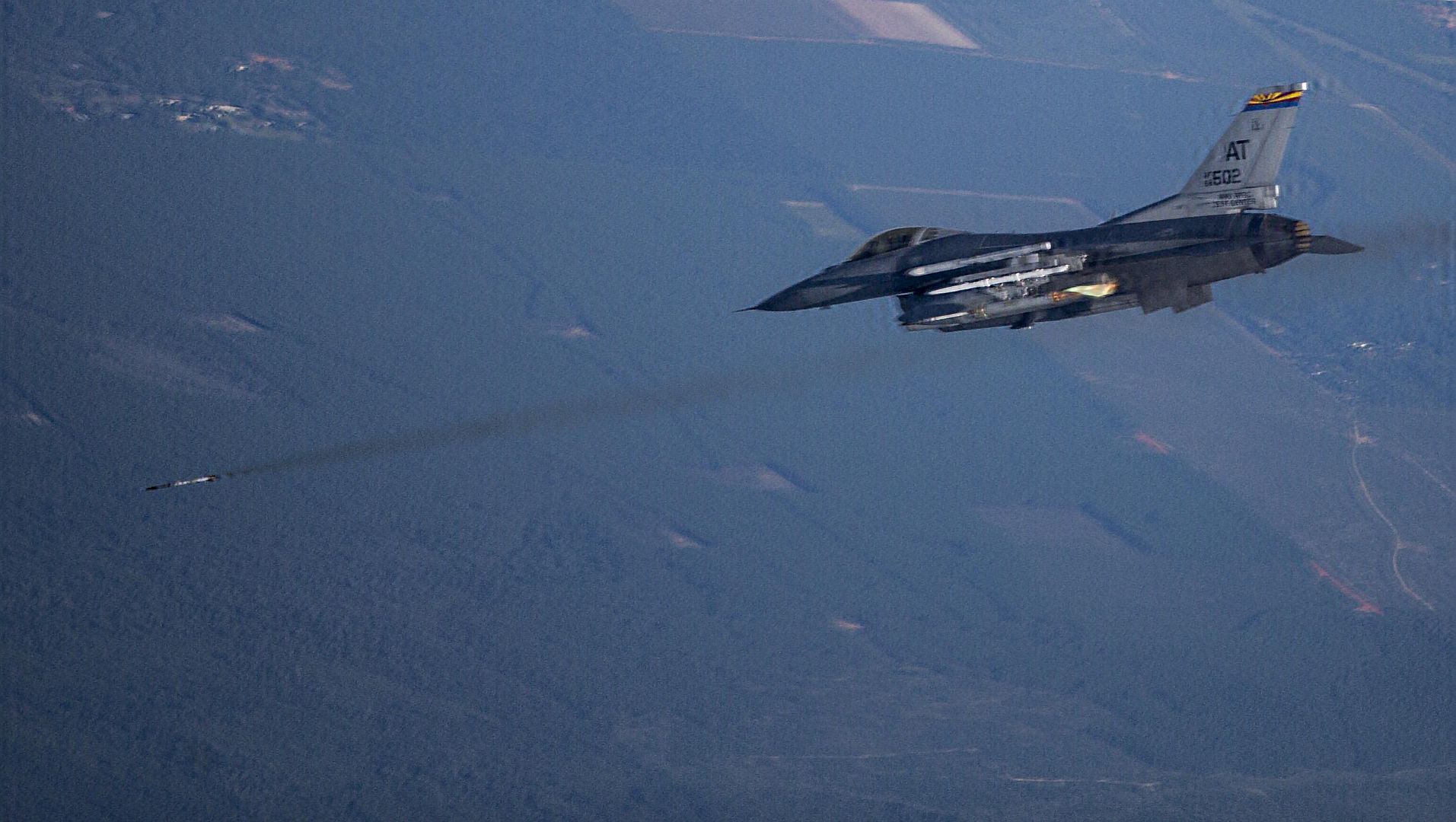
-
 Main AdminHONG KONG (Oct. 3, 2016) An AS-332 Super Puma helicopter, attached to Lewis and Clark-class dry cargo ship USNS Washington Chambers (T-AKE 11), takes off from the flight deck of amphibious assault ship USS Bonhomme Richard (LHD 6) during a replenishment at sea (RAS). Bonhomme Richard, flagship of the Bonhomme Richard Expeditionary Strike Group, is operating in the South China Sea in support of security and stability in the Indo-Asia Pacific region. (U.S. Navy photo by Petty Officer 3rd Class Jeanette Mullinax/Released)
Main AdminHONG KONG (Oct. 3, 2016) An AS-332 Super Puma helicopter, attached to Lewis and Clark-class dry cargo ship USNS Washington Chambers (T-AKE 11), takes off from the flight deck of amphibious assault ship USS Bonhomme Richard (LHD 6) during a replenishment at sea (RAS). Bonhomme Richard, flagship of the Bonhomme Richard Expeditionary Strike Group, is operating in the South China Sea in support of security and stability in the Indo-Asia Pacific region. (U.S. Navy photo by Petty Officer 3rd Class Jeanette Mullinax/Released)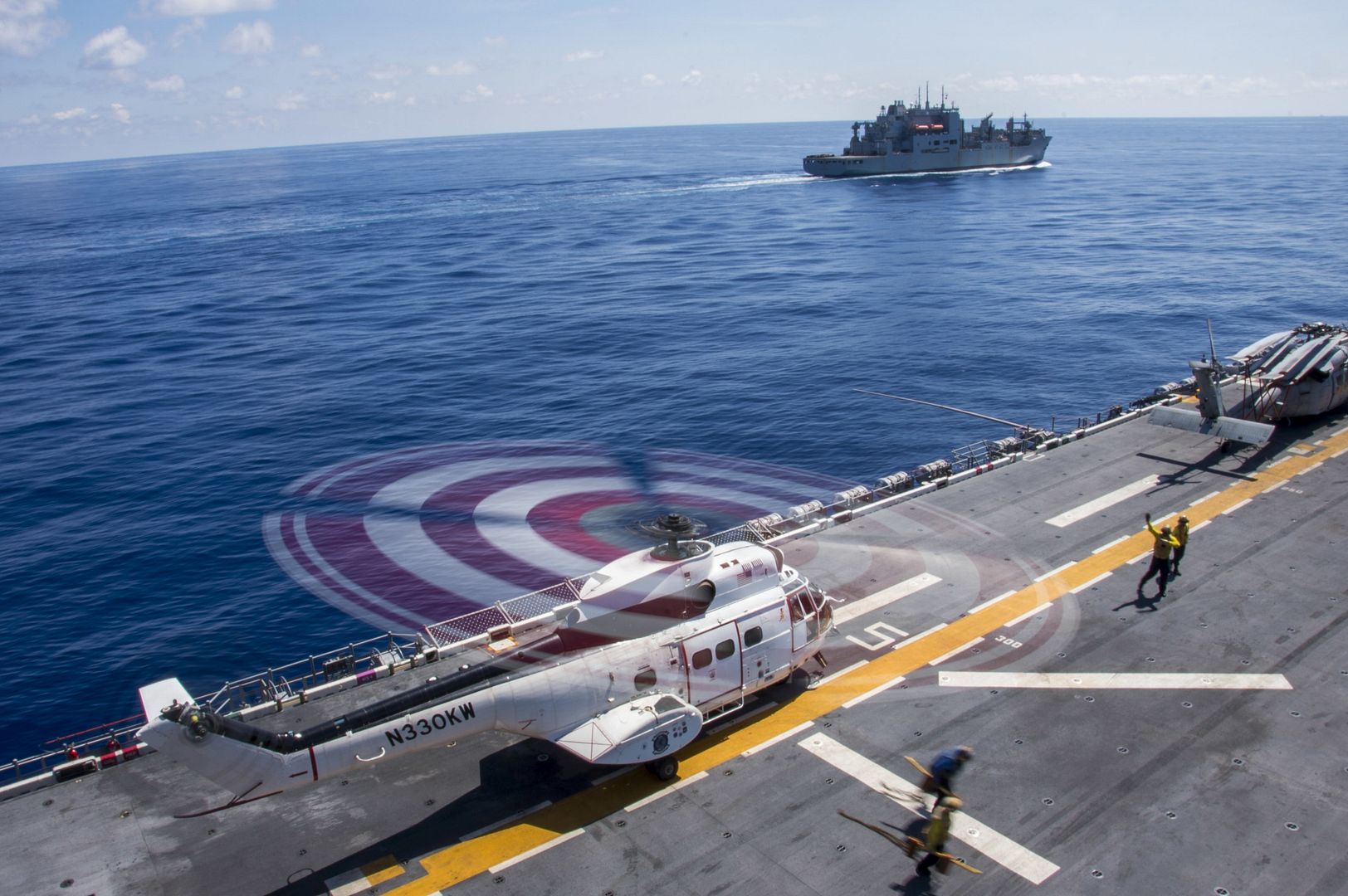
An HH-60L Blackhawk helicopter assigned to Joint Task Force-Bravo?s 1st Battalion, 228th aviation regiment, prepares to launch from Soto Cano Air Base, Honduras, Oct. 4, 2016, to stage at the Grand Cayman Islands to provide airlift capabilities for Hurricane Matthew relief efforts if requested by the U.S. Agency for International Development?s Office of Foreign Disaster Assistance. Hurricane Matthew was a category 4 hurricane that formed in the Western Atlantic Ocean and affected the Haiti, eastern Cuba, and the Bahamas before moving up the east coast of the United States. (U.S. Air Force photo by Staff Sgt. Siuta B. Ika)
ARABIAN GULF (Oct. 4, 2016) A C2-A Greyhound assigned to the Rawhides of Fleet Logistics Support Squadron (VRC) 40 launches from the flight deck of the aircraft carrier USS Dwight D. Eisenhower (Ike). Ike and its Carrier Strike Group are deployed in support of Operation Inherent Resolve, maritime security operations and theater security cooperation efforts in the U.S. 5th Fleet area of operations. (U.S. Navy photo by Petty Officer 3rd Class Nathan T. Beard)
An AH-64D Apache Longbow helicopter crew with the 12th Combat Aviation Brigade takes part in Exercise Allied Spirit V at the 7th Army Training Command?s Hohenfels Training Area, Germany, Oct. 4, 2016. Exercise Allied Spirit includes about 2,520 participants from eight NATO nations, and exercises tactical interoperability and tests secure communications within Alliance members and partner nations. (U.S. Army photo by Visual Information Specialist Gertrud Zach)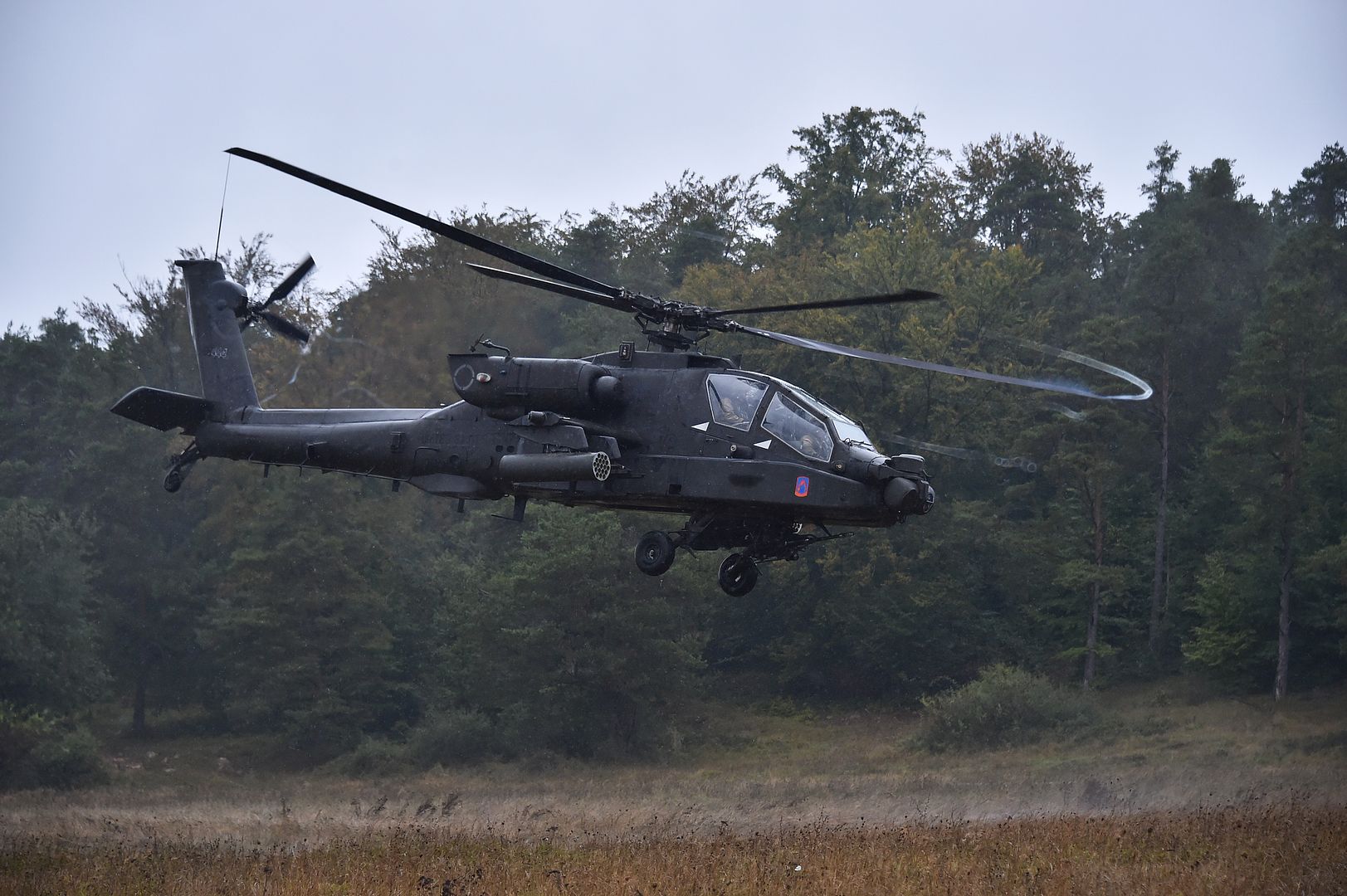
-
 Main AdminA World War II era P-51 Mustang makes its landing approach at Royal Air Force Lakenheath, England Oct. 4. The aircraft arrived as a reunion between it and it's former pilot, Tuskegee Airman U.S. Air Force Lt. Col. (ret) George E. Hardy. (U.S. Air Force photo/ Tech. Sgt. Matthew Plew)
Main AdminA World War II era P-51 Mustang makes its landing approach at Royal Air Force Lakenheath, England Oct. 4. The aircraft arrived as a reunion between it and it's former pilot, Tuskegee Airman U.S. Air Force Lt. Col. (ret) George E. Hardy. (U.S. Air Force photo/ Tech. Sgt. Matthew Plew)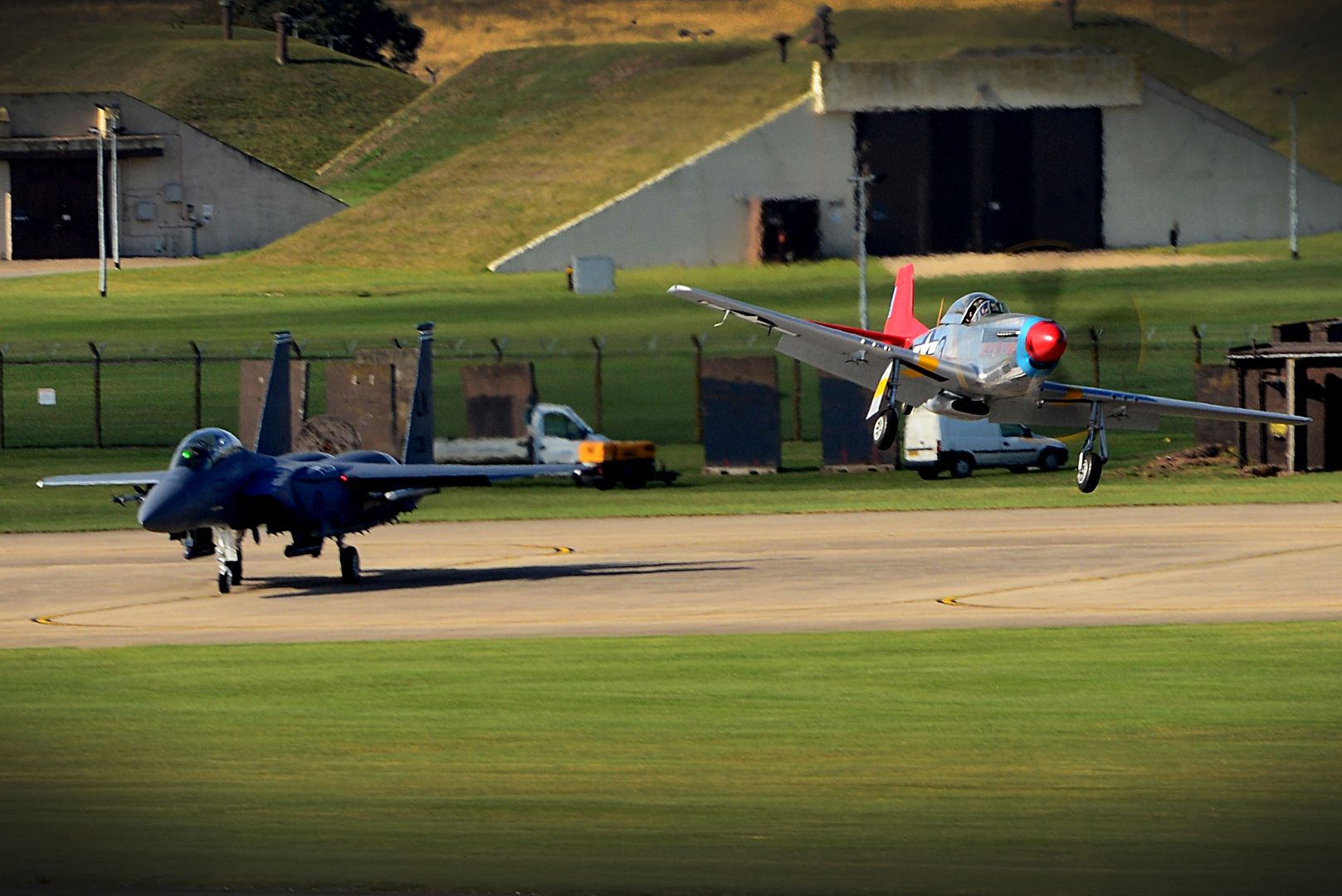
An F-16 Fighting Falcon from Homestead Air Reserve Base, Fla., taxis Oct. 5, 2016 at Naval Air Station Fort Worth Joint Reserve Base, Texas. Twelve aircraft relocated here due to Hurricane Matthew's anticipated landfall. The base serves as a safe haven for military aircraft that are in the path of the hurricane. (U.S. Air Force photo by Tech. Sgt. Melissa Harvey)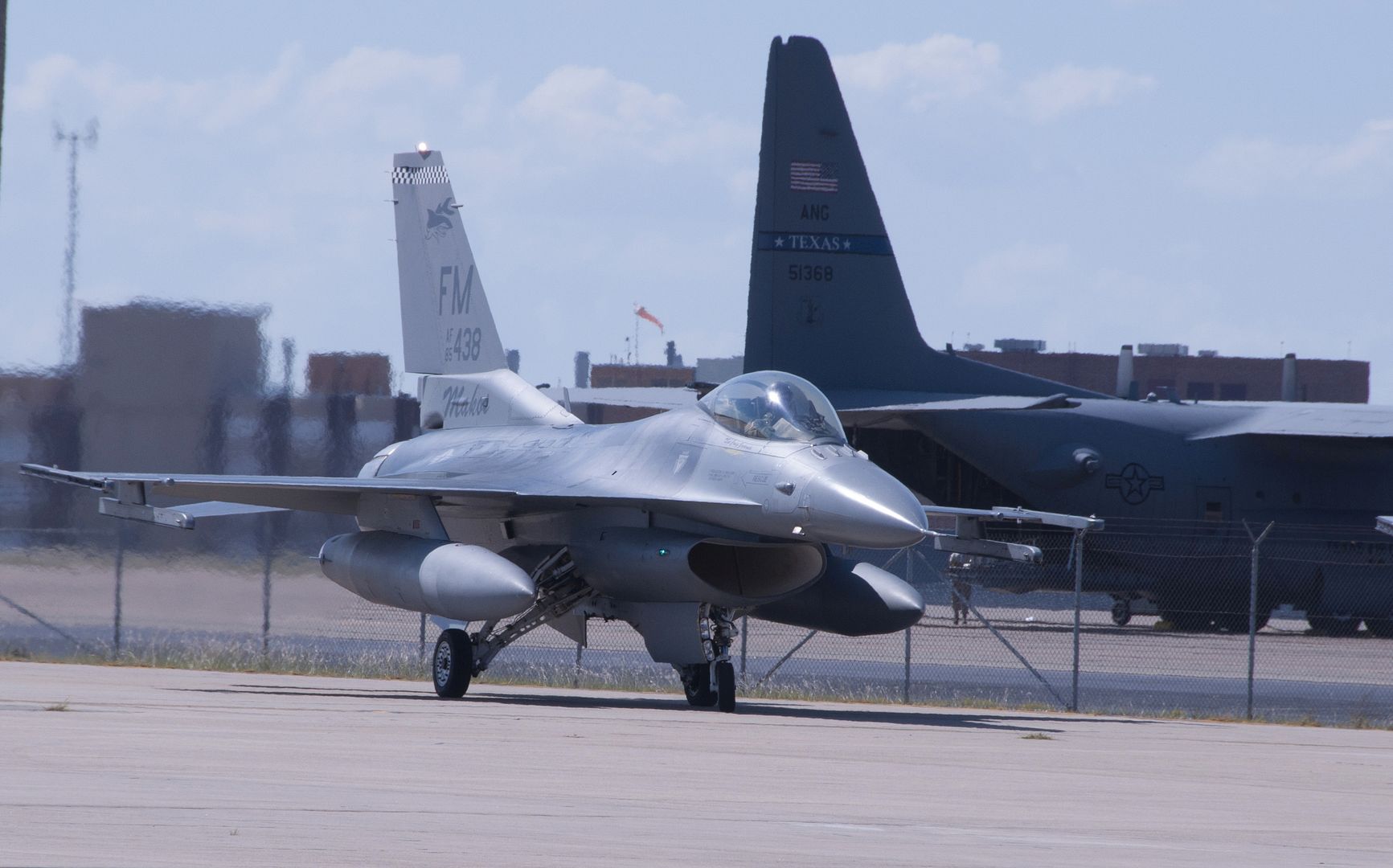
The crew of a UH-60 Blackhawk assigned to Joint Task Force-Bravo?s 1st Battalion, 228th Aviation Regiment, prepare their aircraft for flight at Soto Cano Air Base, Honduras, Oct. 5, 2016. U.S. Southern Command directed a team of approximately 100 military personnel and nine helicopters to be staged and ready to support U.S. disaster relief operations in Haiti in the aftermath of Hurricane Matthew. (U.S. Air Force photo by Staff Sgt. Siuta B. Ika) (Photo by Staff Sgt. Siuta B. Ika)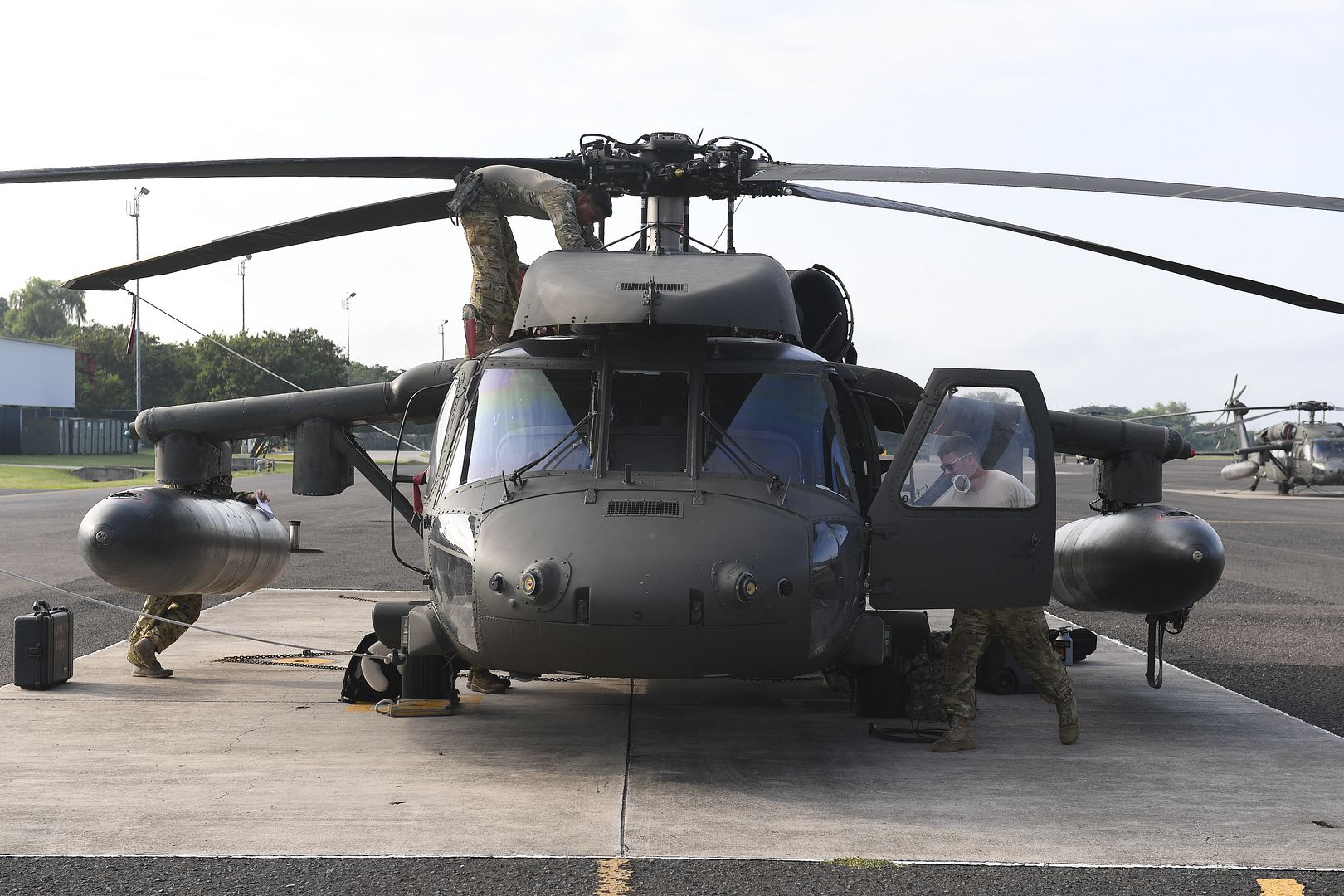
ARABIAN GULF (Oct. 5, 2016) An F/A-18C Hornet assigned to the Wildcats of Strike Fighter Squadron (VFA) 131 prepares to launch off of the flight deck of the aircraft carrier USS Dwight D. Eisenhower (CVN 69) (Ike). Ike and its Carrier Strike Group are deployed in support of Operation Inherent Resolve, maritime security operations and theater security cooperation efforts in the U.S. 5th Fleet area of operations. (U.S. Navy photo by Seaman Christopher A. Michaels)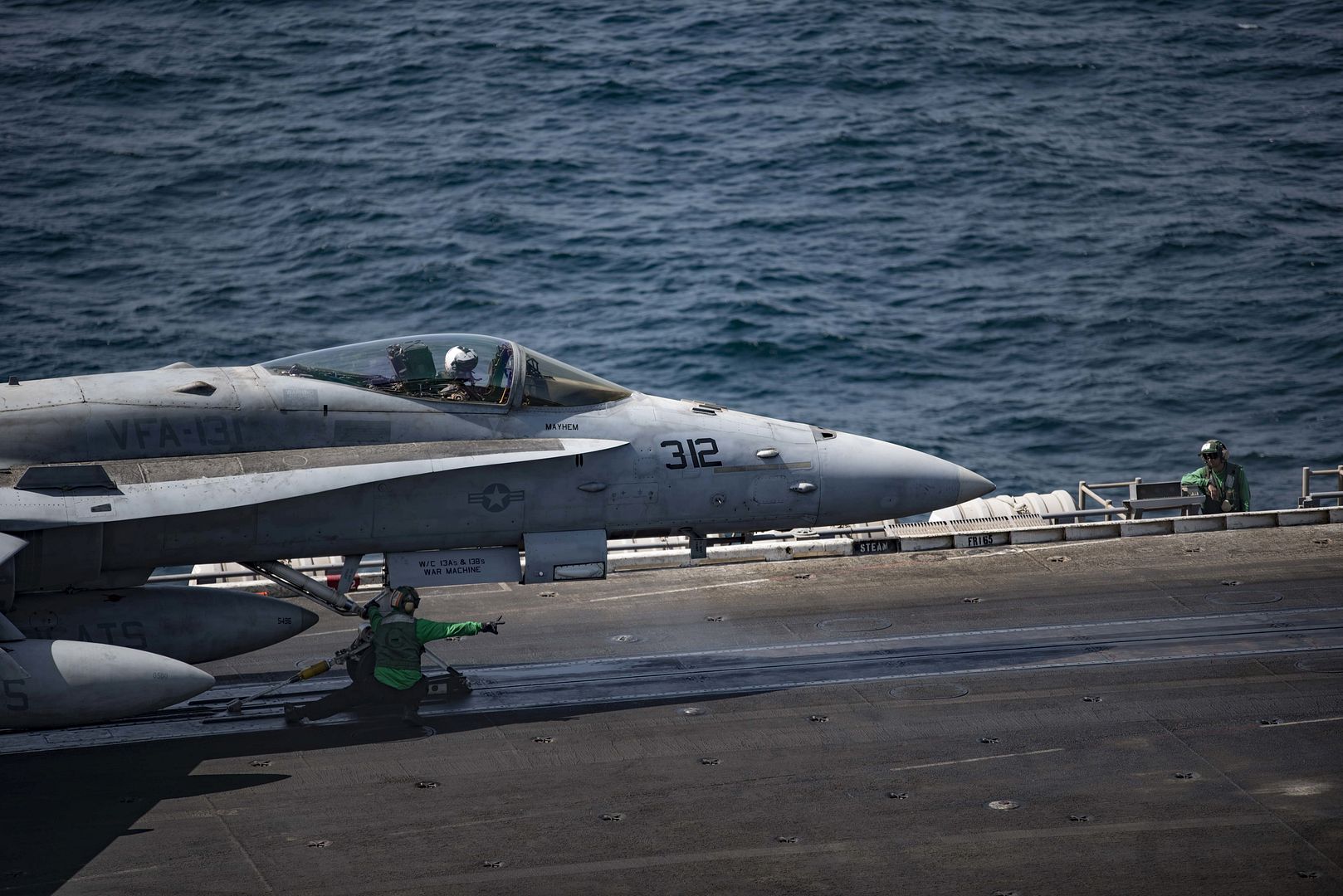
EDWARDS AIR FORCE BASE, Calif. --
Early aircraft controls were manual. They only responded to the pilot?s inputs. If a control surface got damaged, or a control system froze for some reason, the pilot was often unable to recover control of the aircraft. Frequently this resulted in loss of an aircraft and sometimes loss of life.
Fast forward to the modern era, and most aircraft are fly-by-wire. This means the pilot still controls the aircraft with physical input on traditional style controls, but now the aircraft?s computers interpret the pilot?s inputs. The computer knows what the aircraft is supposed to do when the pilot gives certain commands, and it moves the control surfaces to make the aircraft behave accordingly.
But still the problem of damaged surfaces or frozen systems poses a threat to pilots and aircraft.
Test Pilot School Class `16a has taken the task of testing an adaptive control system designed by a team from the University of Illinois, Urbana Champaign.
The TPS team consists of staff advisor Dr. Chris Cotting and five students ? test pilots Capt. Daniel Edelstein, Italian Air Force Capt. Raffaele Odesco, French Air Force Maj. Nicolas Langevin and flight test engineers Capt. Craig Porter and Capt. Clark McGehee.
According to the test team, the L1 Adaptive Control System learns the standard flight parameters of the aircraft it?s installed on, and if anything changes, such as damage or mechanical failure of a flight control, the system can adapt the other flight controls to compensate.
?L1 adaptive is a somewhat novel idea in that it doesn?t have to know what the airplane is like that you?re putting it on,? Cotting said. ?You give it some basic information about the airplane and the adaptive controller should be able to configure itself to make the aircraft fly.?
The Adaptive Control System is a further evolution of the fly-by-wire systems that are becoming commonplace in modern aircraft.
?Using the infrastructure that you have in a fly-by-wire aircraft, and using the fact that you have a computer that can move the control surfaces at its own discretion, you can leverage the computer to do creative things with the control surfaces that you couldn?t do in a conventional aircraft,? McGehee said.
Cotting said there were advantages to flight testing with this system.
?If I was going to put this on a production airplane, I wouldn?t have to do as many wind tunnel tests,? he said. ?Or, if I know the wind tunnel doesn?t give accurate results, then I can use the adaptive controller to take out some of the uncertainly.?
Edelstein explained another advantage from a pilot?s perspective.
?If I am an F-16 pilot, I expect with a certain amount of force on the stick I am going to get a certain amount of aircraft response. This adaptive controller can say, ?I know what an F-16 is supposed to fly like,? so if some [anti-aircraft fire] hits my right aileron, this controller can adapt. It knows I don?t have this surface anymore, so it uses all the other surfaces on the aircraft to make that response exactly what the pilot would have expected all along, just like there?s no damage to the aircraft. But If you have a damaged aircraft, you don?t necessarily want a perfect aircraft, you want something that can get you home safely and land.?
Porter added to this thought; ?The point is, this is not supposed to replace flight control systems in an aircraft. What it?s supposed to be for is more as a backup in an emergency ? ?get me home so I can land safely.??
Langevin cited an example of how this controller could have saved lives. In 1985, Japan Airlines Flight 123 crashed after losing a large portion of the tail and losing hydraulic controls to the entire plane.
?The pilots were not able to recover,? Langevin said. ?Maybe, in that case, such a controller would have allowed the pilots to land safely.?
Fifteen crew members and 505 of the 509 passengers died as a result.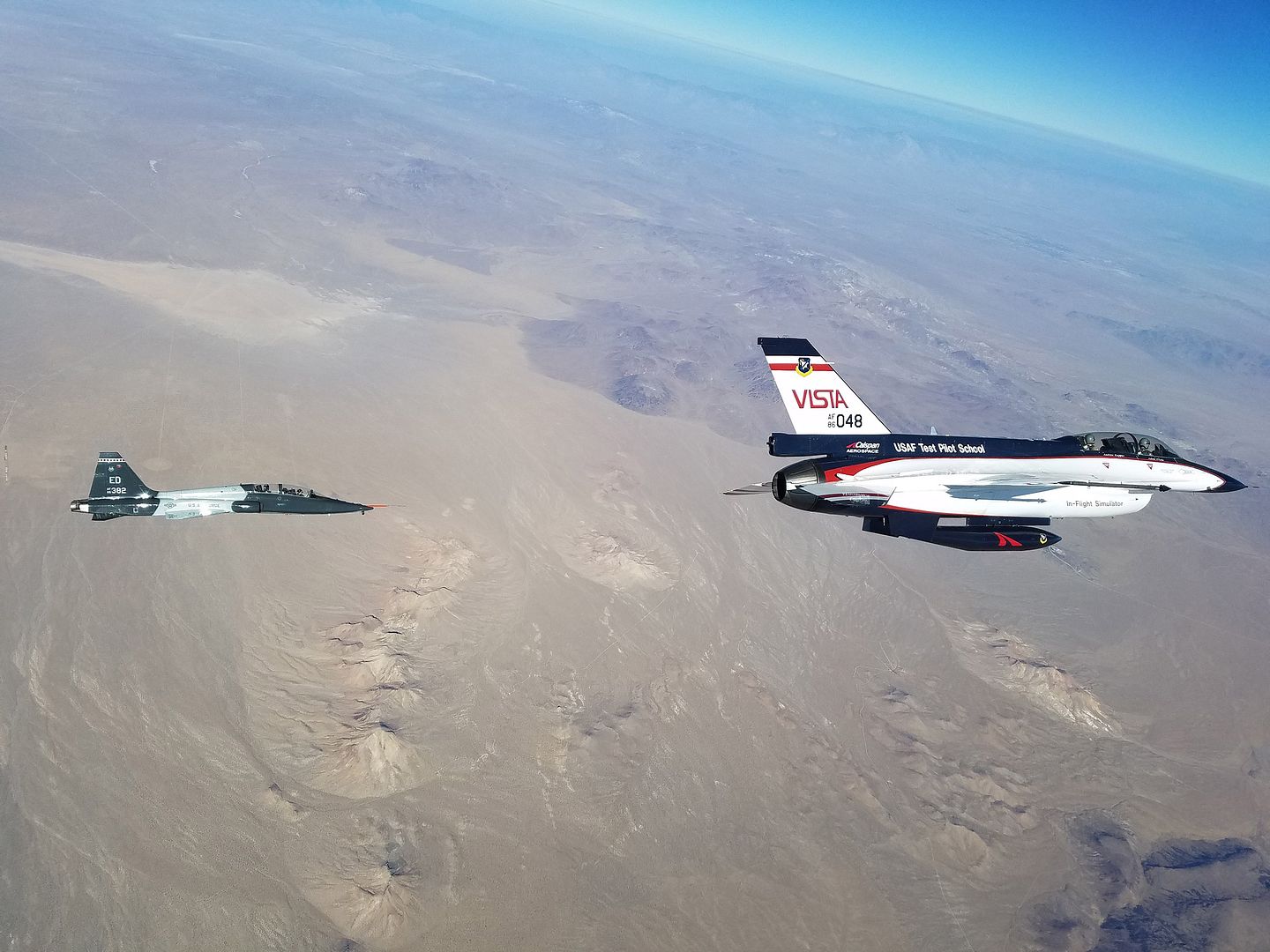
5 October 2016 Press Release
Low-cost carrier Viva Aerobus has taken delivery of its first A320neo, becoming the latest operator of Airbus ultra-efficient single-aisle aircraft in Latin America. Viva Aerobus became an Airbus customer in 2013 when it placed the biggest order for Airbus in Mexican history for 52 A320 Family aircraft, including 40 A320neo. Today, Viva Aerobus operates 20 A320 aircraft and has nearly completed its transition to become an all-Airbus operator by year end.
The Viva Aerobus A320neo is powered by Pratt & Whitney Pure Power PW1100-JM engines. The aircraft is configured with Airbus? innovative Space-Flex cabin seating up to 186 passengers in wider 18? seats, for unmatched passenger comfort.
The A320neo Family incorporates latest technologies including new generation engines and Sharklet wing tip devices, which together deliver more than 15 percent in fuel savings from day one and 20 percent by 2020.
?The arrival of the A320neo is a historic milestone in the transformation of the new Viva Aerobus,? said Juan Carlos Zuazua, CEO of Viva Aerobus. ?With this first A320neo we are one step closer to reaching our year-end goal of becoming an all-Airbus operator and offering our passengers the youngest aircraft fleet in all of Latin America.?
?Airbus is proud to support Viva Aerobus evolve into one of the fastest-growing and most dynamic airlines in Mexico,? said Rafael Alonso, President of Airbus Latin America and the Caribbean. ?Mexico?s strong economic growth presents a unique opportunity for airlines such as Viva Aerobus to expand their fleets with the industry?s top performing A320neo to improve their efficiency and environmental footprint.?
The A320neo Family is the world?s best-selling single aisle product line with nearly 4,800 orders from 87 customers since its launch in 2010 capturing some 60 percent share of the market. Thanks to their widest cabin, all members of the A320neo Family offer unmatched comfort in all classes and Airbus? 18? wide seats in economy as standard.
-
 Main AdminJoint Base Charleston aircrew take off in a C-17 Globemaster III as it is evacuated to Fort Campbell, Ky., on Oct. 6, 2016, so they can continue their mission of rapid global mobility during Hurricane Matthew. Due to Hurricane Matthew, a Limited Evacuation Order of South Carolina Hurricane Evacuation Zones was issued by the Commander, Joint Base Charleston. All Joint Base personnel are expected to evacuate the area and will return once damage is assessed and it?s safe to return.(US Air Force photo by Airman 1st Class Sean Carnes)
Main AdminJoint Base Charleston aircrew take off in a C-17 Globemaster III as it is evacuated to Fort Campbell, Ky., on Oct. 6, 2016, so they can continue their mission of rapid global mobility during Hurricane Matthew. Due to Hurricane Matthew, a Limited Evacuation Order of South Carolina Hurricane Evacuation Zones was issued by the Commander, Joint Base Charleston. All Joint Base personnel are expected to evacuate the area and will return once damage is assessed and it?s safe to return.(US Air Force photo by Airman 1st Class Sean Carnes)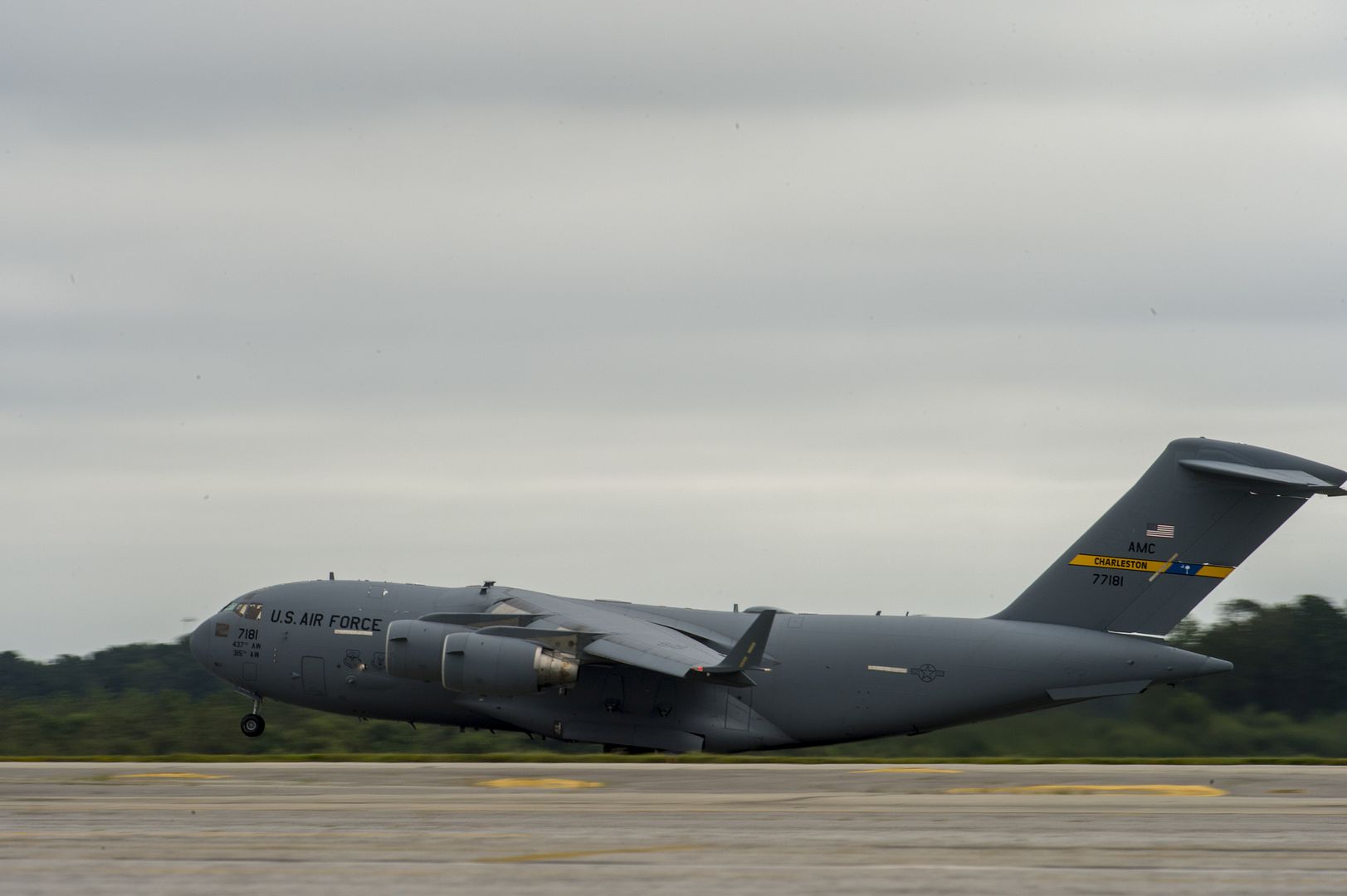
A U.S. Air Force F-16CM Fighting Falcon flies over Shaw Air Force Base, S.C., Oct. 6, 2016. Shaw evacuated aircraft following Gov. Nikki Haley?s declaration of a state of emergency in preparation for Hurricane Matthew. (U.S. Air Force photo by Senior Airman Michael Cossaboom)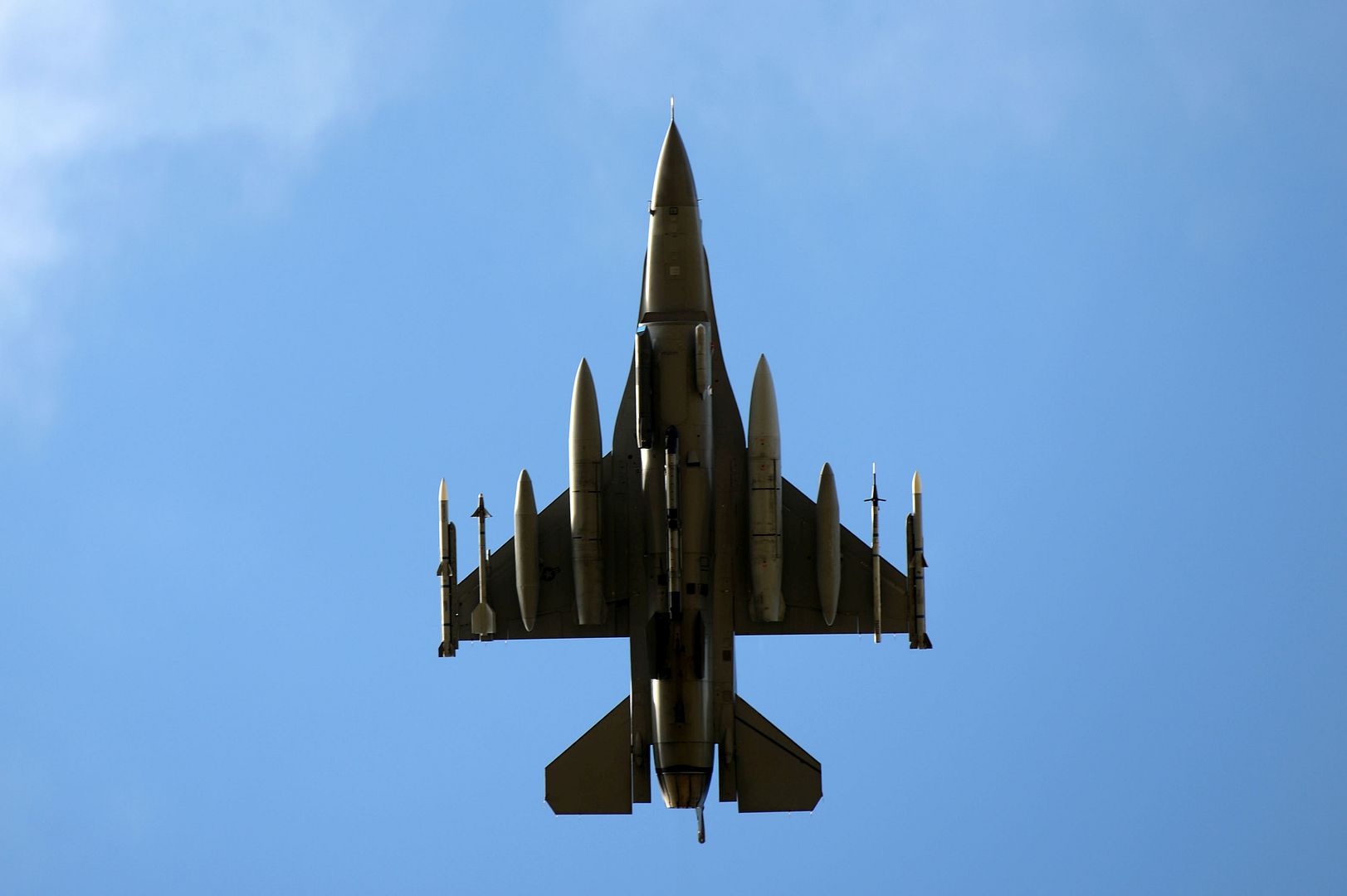
U.S. Air Force A-10C Thunderbolt IIs from Moody Air Force Base, Ga., sit on the flightline at Tyndall Air Force Base, Fla., Oct. 6, 2016. Thirty aircraft evacuated from Moody AFB in anticipation of Hurricane Matthew. (U.S. Air Force photo by Tech. Sgt. Javier Cruz/Released)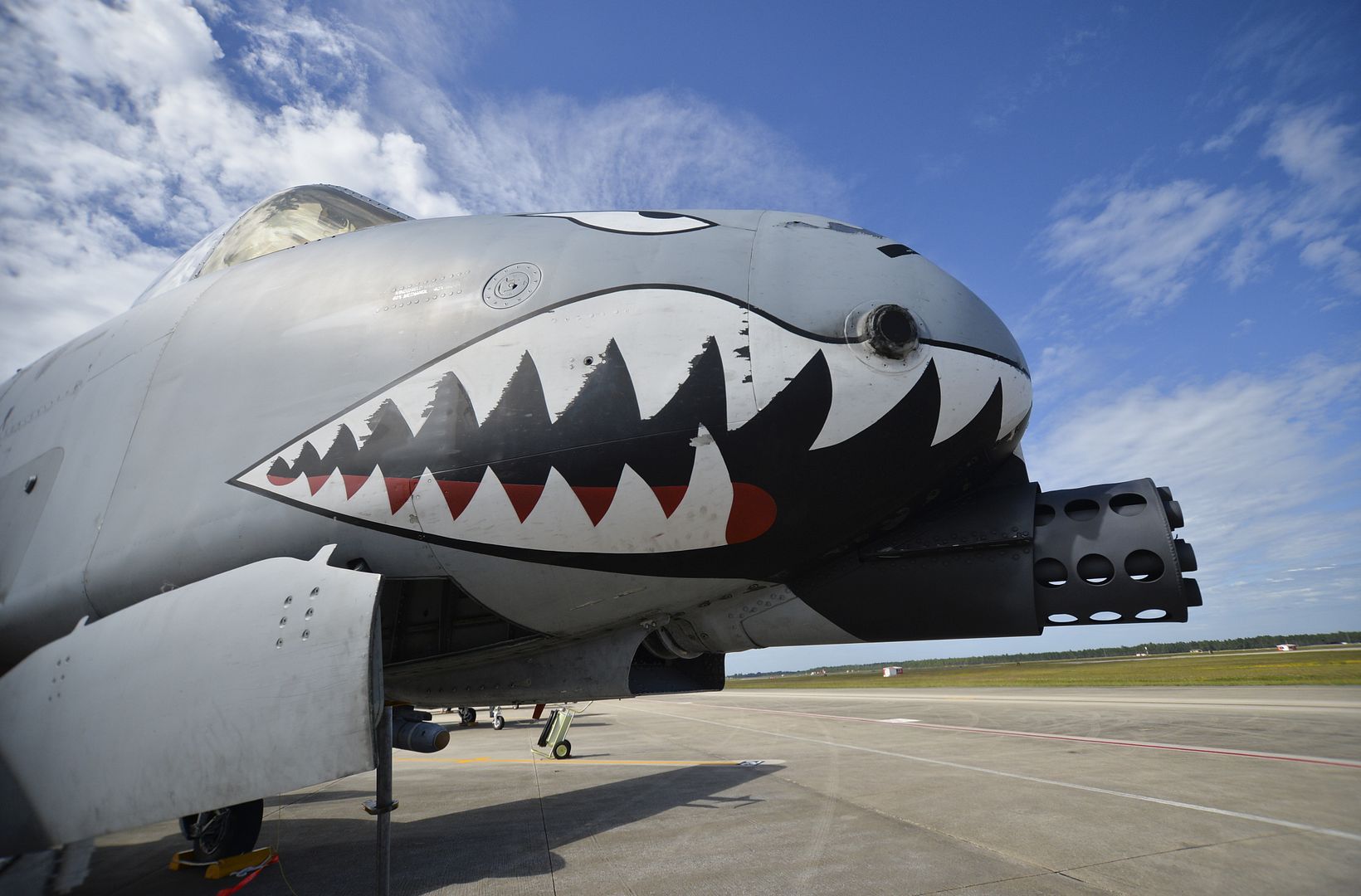
An F-15E Strike Eagle from the 336th Fighter Squadron takes off as a precautionary measure due to Hurricane Matthew, Oct. 6, 2016, at Seymour Johnson Air Force Base, North Carolina. More than 40 F-15E Strike Eagles and six KC-135R Stratotanker aircraft were repositioned to Barksdale Air Force Base, Louisiana. (U.S. Air Force photo by Airman Shawna L. Keyes)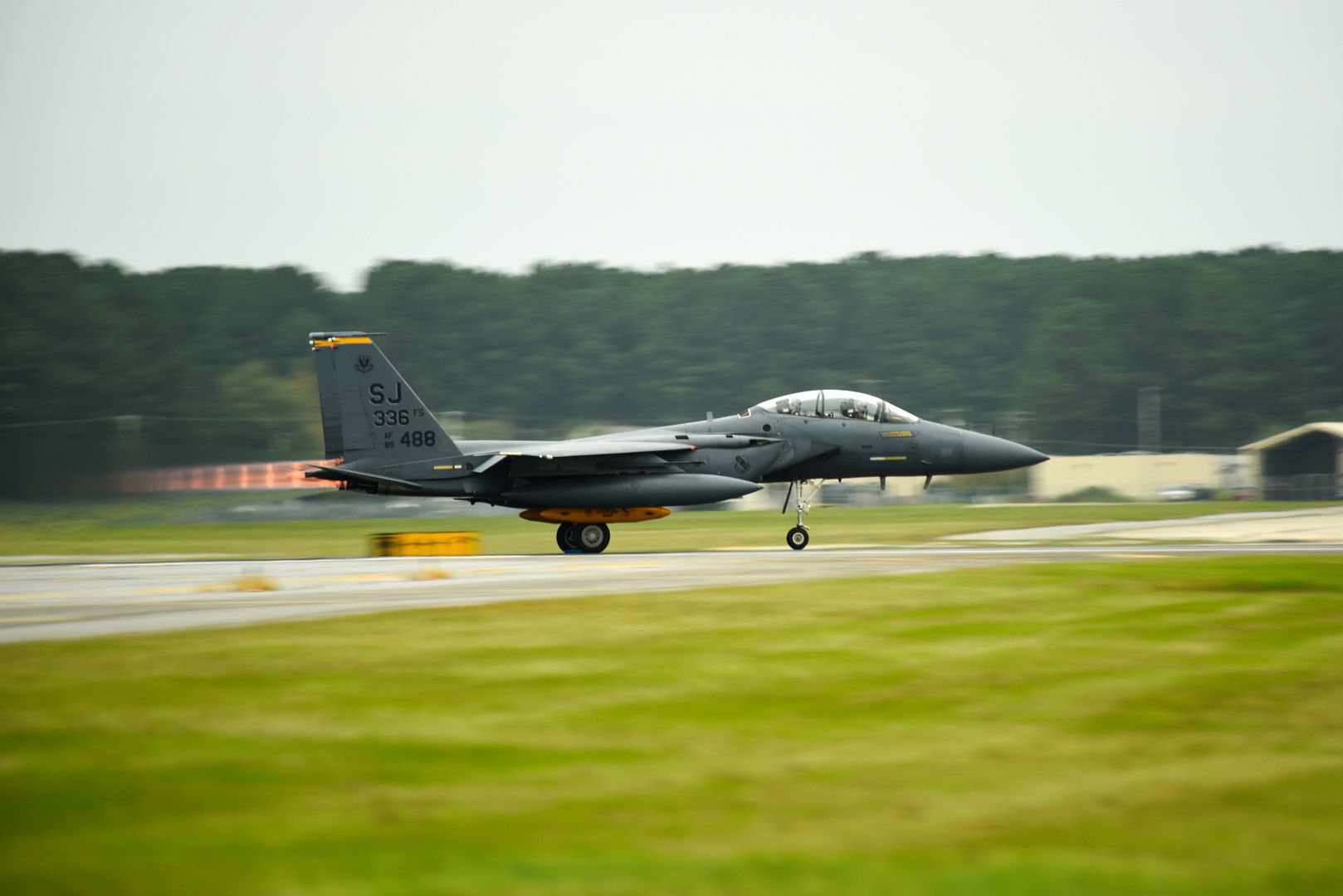
U.S. Air Force A-10C Thunderbolt IIs from Moody Air Force Base, Ga., sit on the flightline at Tyndall Air Force Base, Fla., Oct. 6, 2016. Thirty aircraft evacuated from Moody AFB in anticipation of Hurricane Matthew. (U.S. Air Force photo by Staff Sgt. Alex Fox Echols III /Released)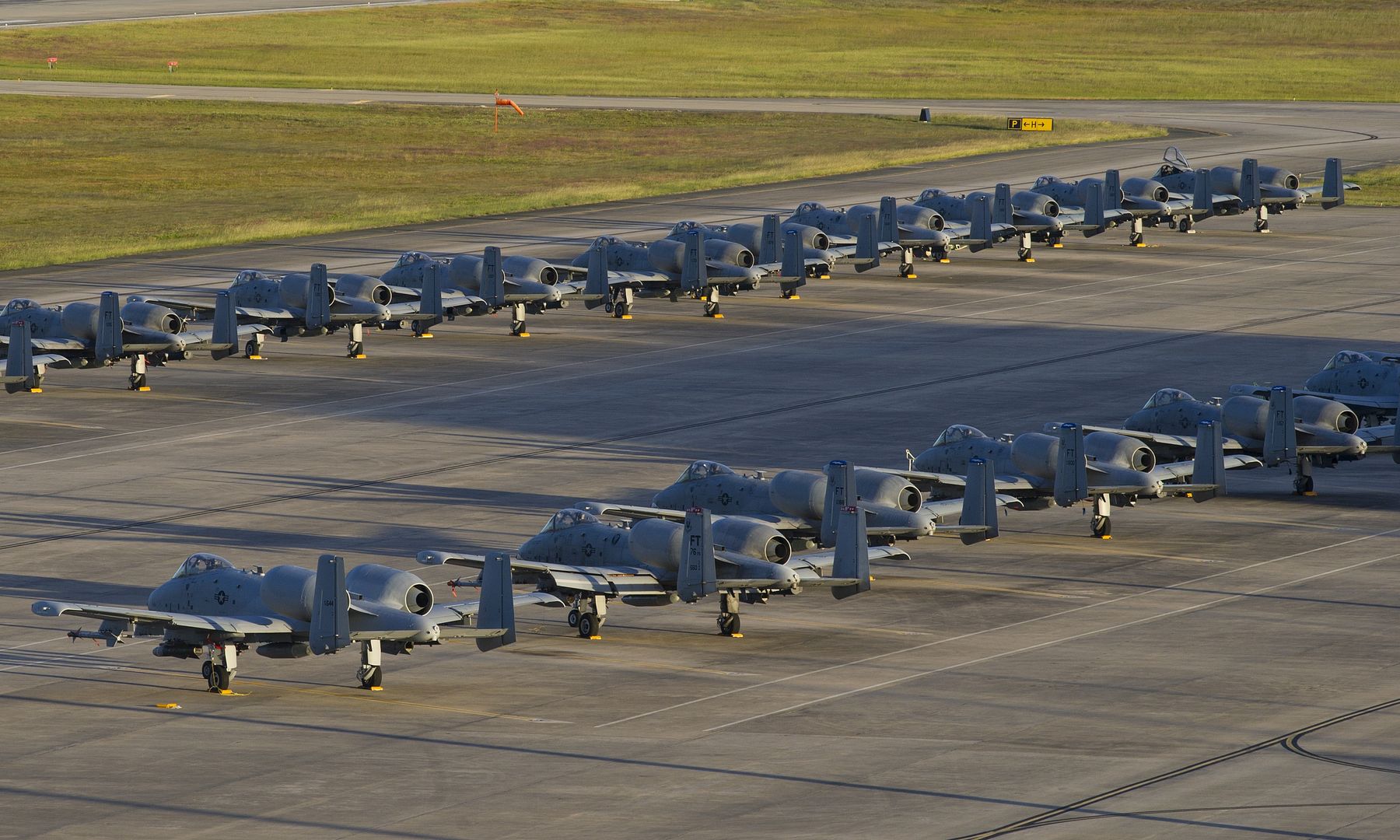
Coast Guard search and rescue crew members from Air Station Clearwater arrive in Great Inagua, Bahamas, Thursday Oct. 6, 2016 to augment the Operation Bahamas, Turks and Caicos mission. OPBAT is a combined Coast Guard, DEA and Government of Bahamas partnership to combat drug smuggling to and from the Bahamas. U.S. Coast Guard photo by Petty Officer 1st Class Michael De Nyse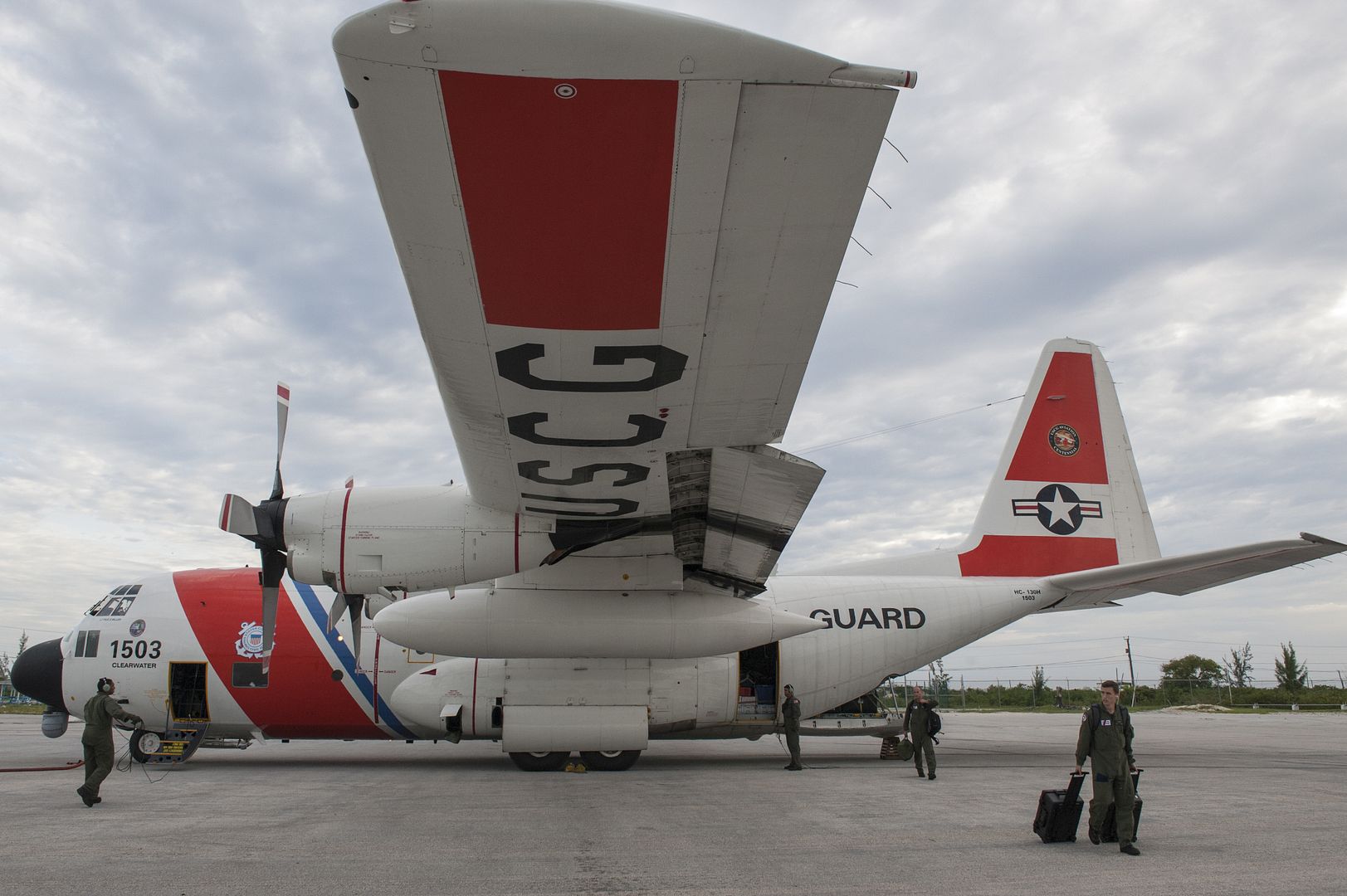
Royal Air Force jet fighters have flown half way around the world to join a major military exercise in Singapore and Malaysia, affirming the UK?s commitment to the Five Powers Defence Arrangements (FDPA).
Coordinated from Changi Naval Base in Singapore, Exercise Bersama Lima will see forces from the five member states of Singapore, Malaysia, Australia, New Zealand and the United Kingdom train alongside each other in the year that marks the 45th anniversary of the FPDA.
The exercise, which runs from 4 to 21 October, will involve 71 aircraft, 11 Ships, 1 Submarine and 5 Ground Based Air Defence Fire Units.
The UK has committed eight RAF Typhoons, based out of Royal Malaysian Air Force Butterworth, and 45 Commando Royal Marines plus headquarters staff based in Singapore.
Leading the opening ceremony today, Singapore's Chief of Defence Force, Lieutenant General Perry Lim said:
?The FPDA has enhanced the cooperation and interoperability of member nations to further our collective security interests. Threats and challenges facing nations have evolved and widened and have become more complex. These threats and challenges require countries to work together to take collective action to address them.
?Through a series of FPDA exercises, we put our forces through their paces to enhance our interoperability and cooperation. Exercise Bersama Lima is one such example. This exercise will strengthen the ties between our armed forces and foster closer cooperation and trust.?
Representing the UK contingent, Vice-Chief of Defence Staff, General Sir Gordon Messenger said:
?It is excellent that we can provide a meaningful UK contribution to the exercise on the 45th anniversary of the FPDA. We are deploying RAF Typhoons, Royal Marines and HQ staff and this is indicative of how seriously we view this exercise.
?The FPDA is a really important multi-lateral construct and it is our only multi-lateral arrangement in the region and it is something we continue to take very seriously. This exercise gives the UK an opportunity to work with our partners in another part of the world and helps us better understand this region. It helps us to understand the security concerns in the region and how we might approach these security concerns in the future.?
Images from Sgt Neil Bryden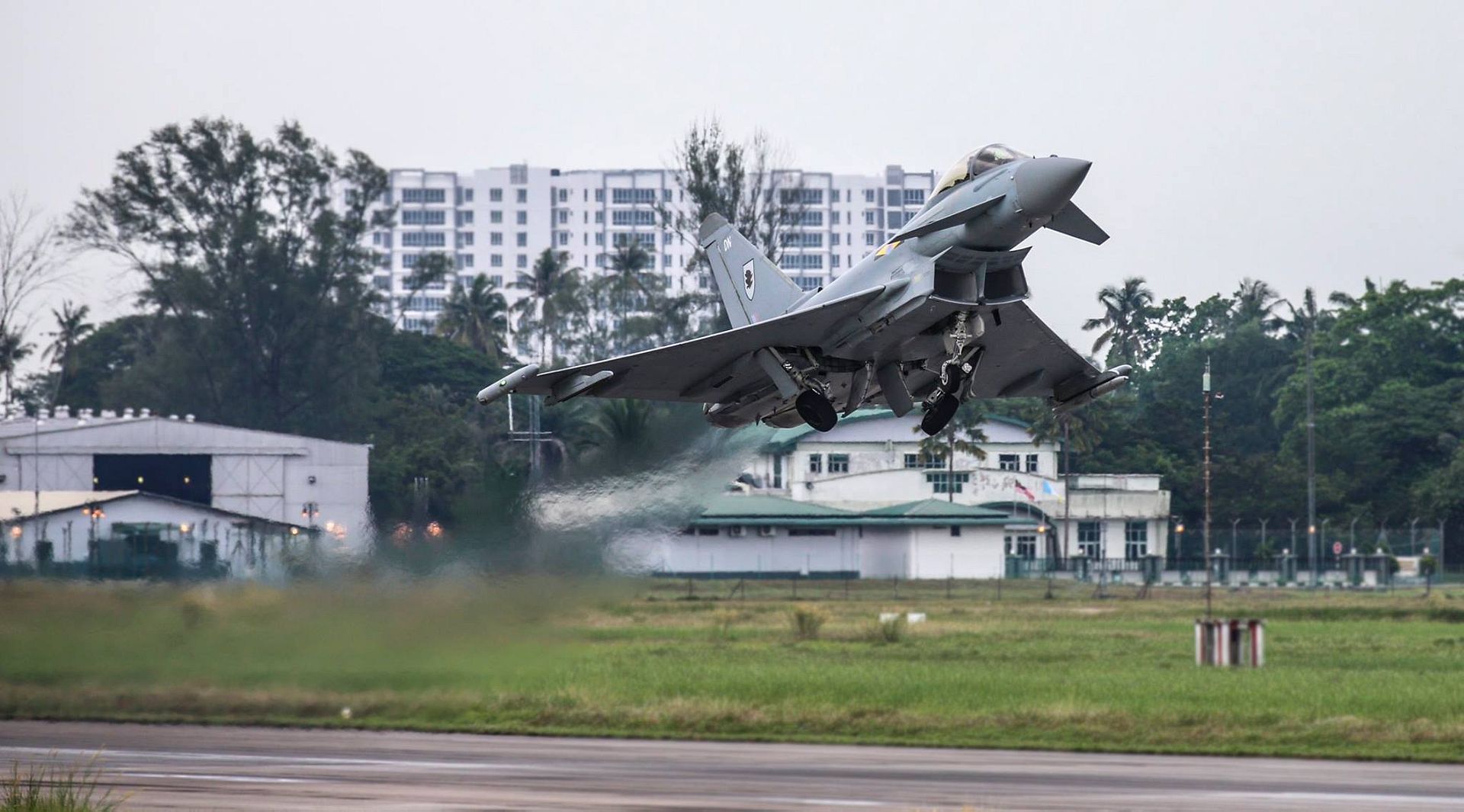
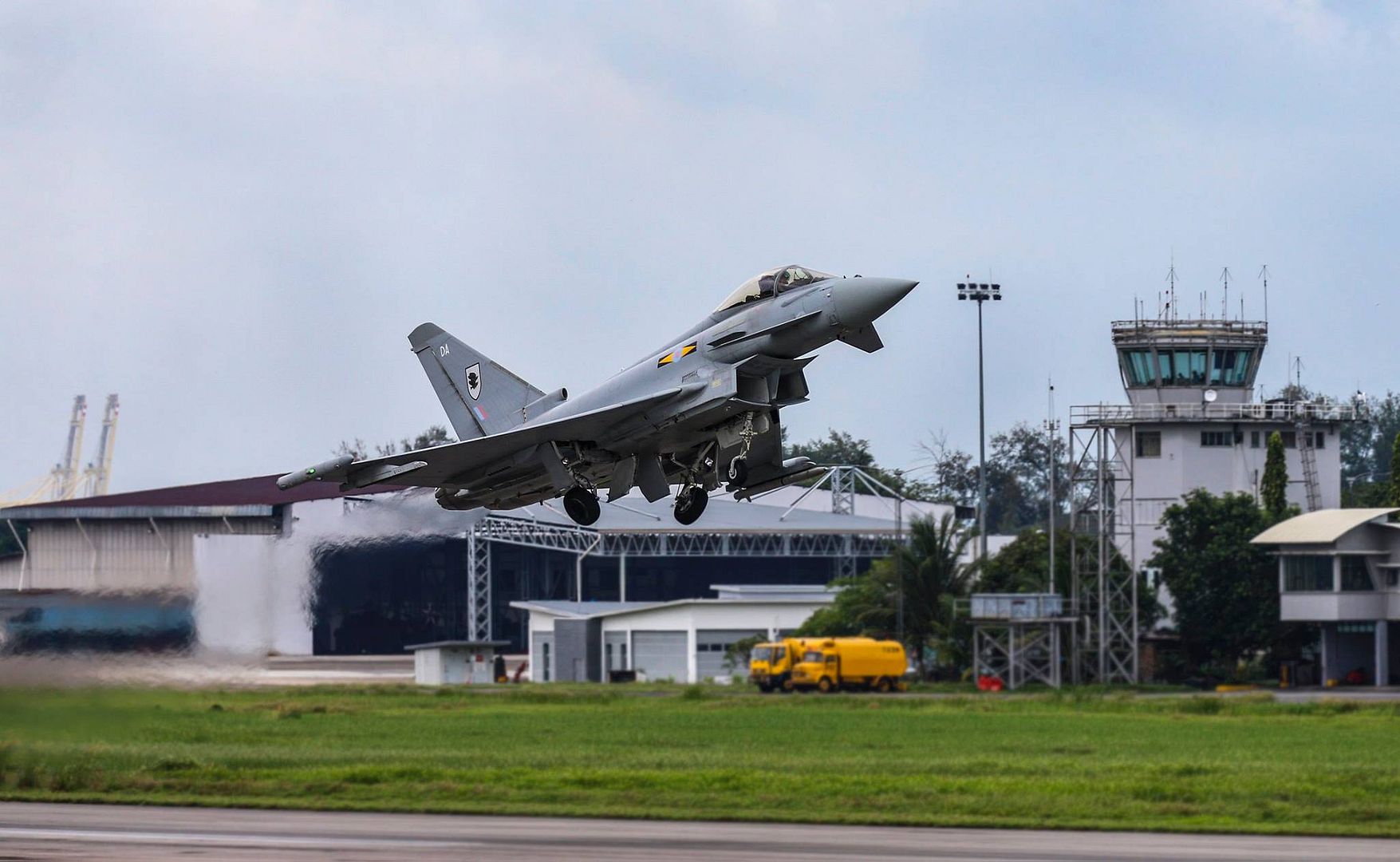
-
 Main AdminWith an E-3 Sentry from the 552nd Air Control Wing waiting to take off Oct. 6, a Navy P-8 Poseidon comes in for a landing at Tinker Air Force Base, Oklahoma. Eight P-8s and three P-3 Orion aircraft from Naval Air Station Jacksonville, Florida, sheltered from Hurricane Matthew here. (Air Force photo by April McDonald)
Main AdminWith an E-3 Sentry from the 552nd Air Control Wing waiting to take off Oct. 6, a Navy P-8 Poseidon comes in for a landing at Tinker Air Force Base, Oklahoma. Eight P-8s and three P-3 Orion aircraft from Naval Air Station Jacksonville, Florida, sheltered from Hurricane Matthew here. (Air Force photo by April McDonald)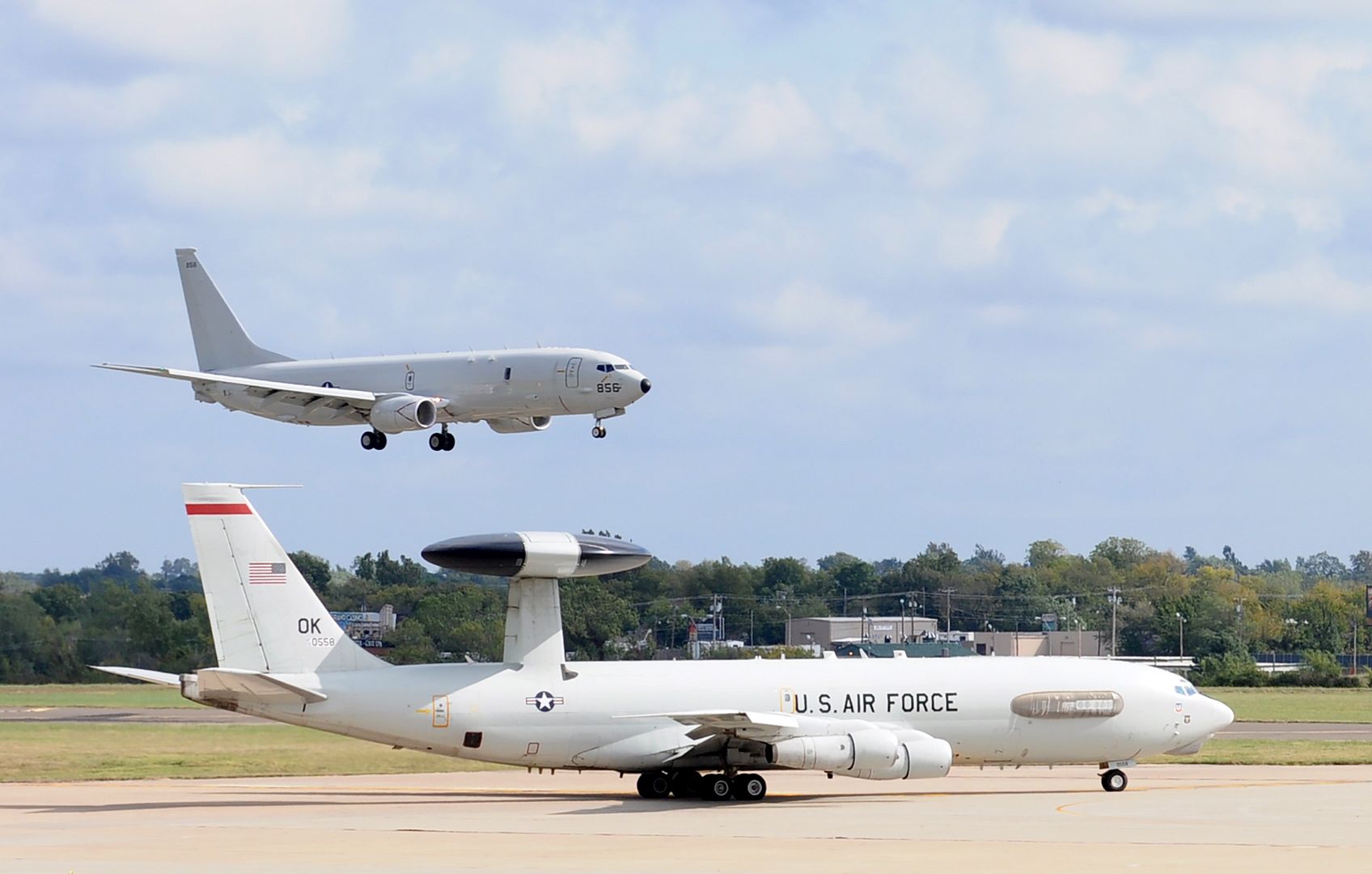
PHILIPPINE SEA (Oct. 6, 2016) An aircrew member sits inside an MH-60S Sea Hawk helicopter, assigned to the ?Golden Falcons? of Helicopter Sea Combat Squadron (HSC) 12, on the flight deck of the Arleigh Burke-class guided-missile destroyer USS Curtis Wilbur (DDG 54). Curtis Wilbur is on patrol with Carrier Strike Group Five (CSG 5) in the Philippine Sea supporting security and stability in the Indo-Asia-Pacific region. (U.S. Navy photo's by Petty Officer 3rd Class Ellen Hilkowski/Released)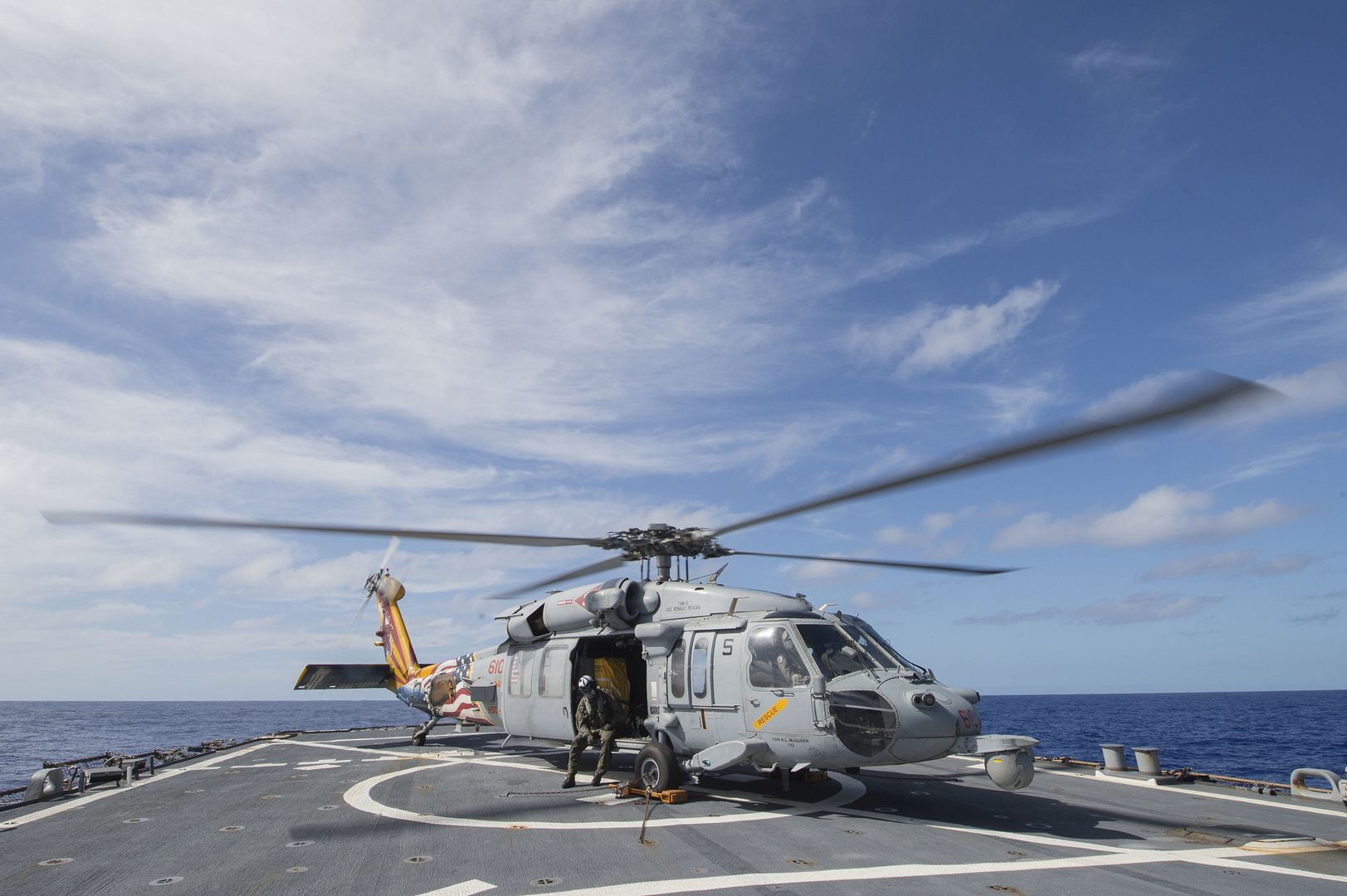
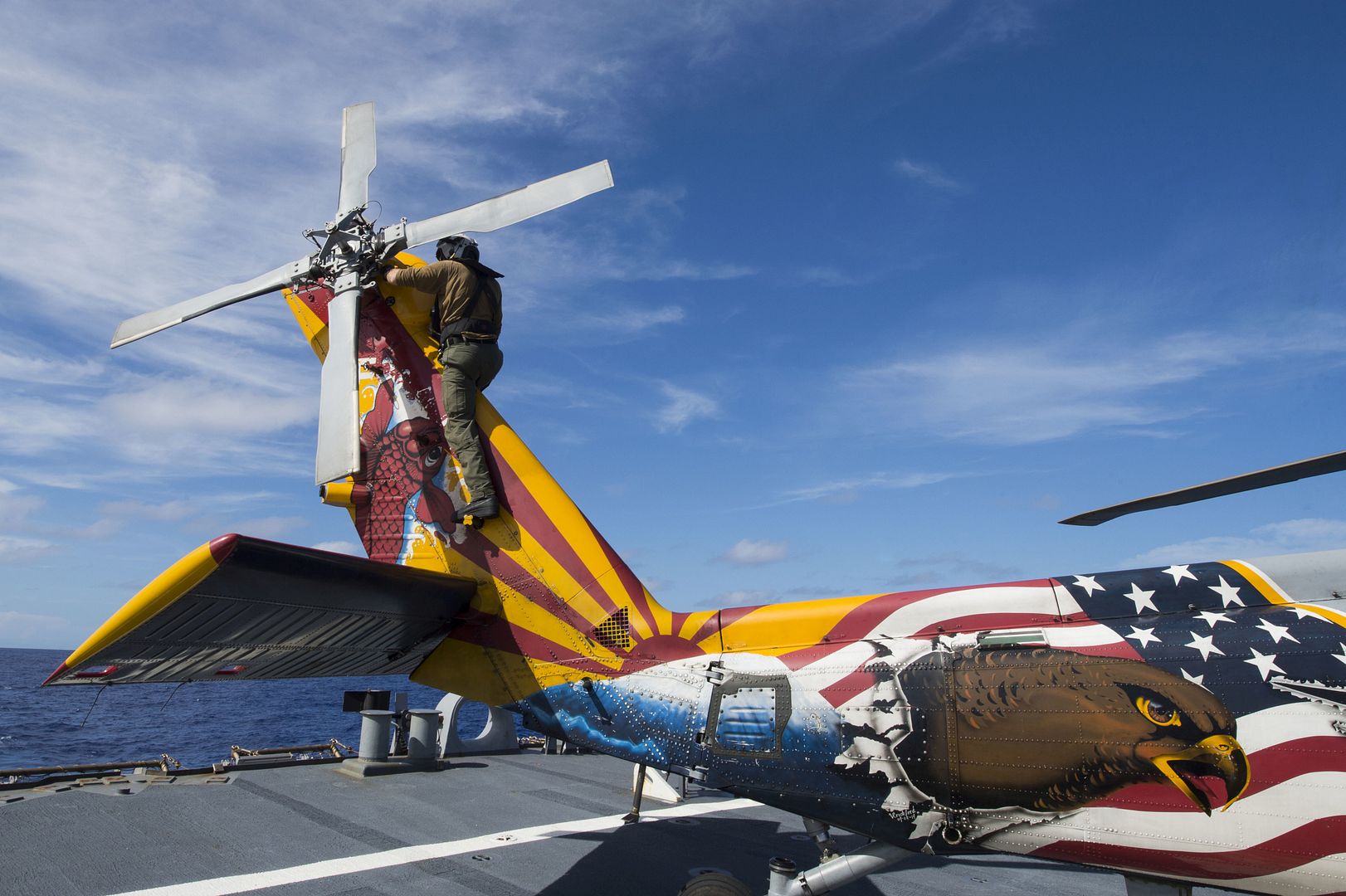
A U.S. Air Force C-17 Globemaster III takes off from Fort Campbell, KY, Oct. 6, 2016. Joint Base Charleston C-17 Globemaster III's evacuated to Fort Campbell so they can continue their mission of rapid global mobility during Hurricane Matthew. Due to Hurricane Matthew, a Limited Evacuation Order of South Carolina Hurricane Evacuation Zones has been issued by the Commander, Joint Base Charleston. All Joint Base personnel are expected to evacuate the area and will return once damage has been assessed and it's safe to return. (U.S. Air Force photo by Staff Sgt. Corey Hook)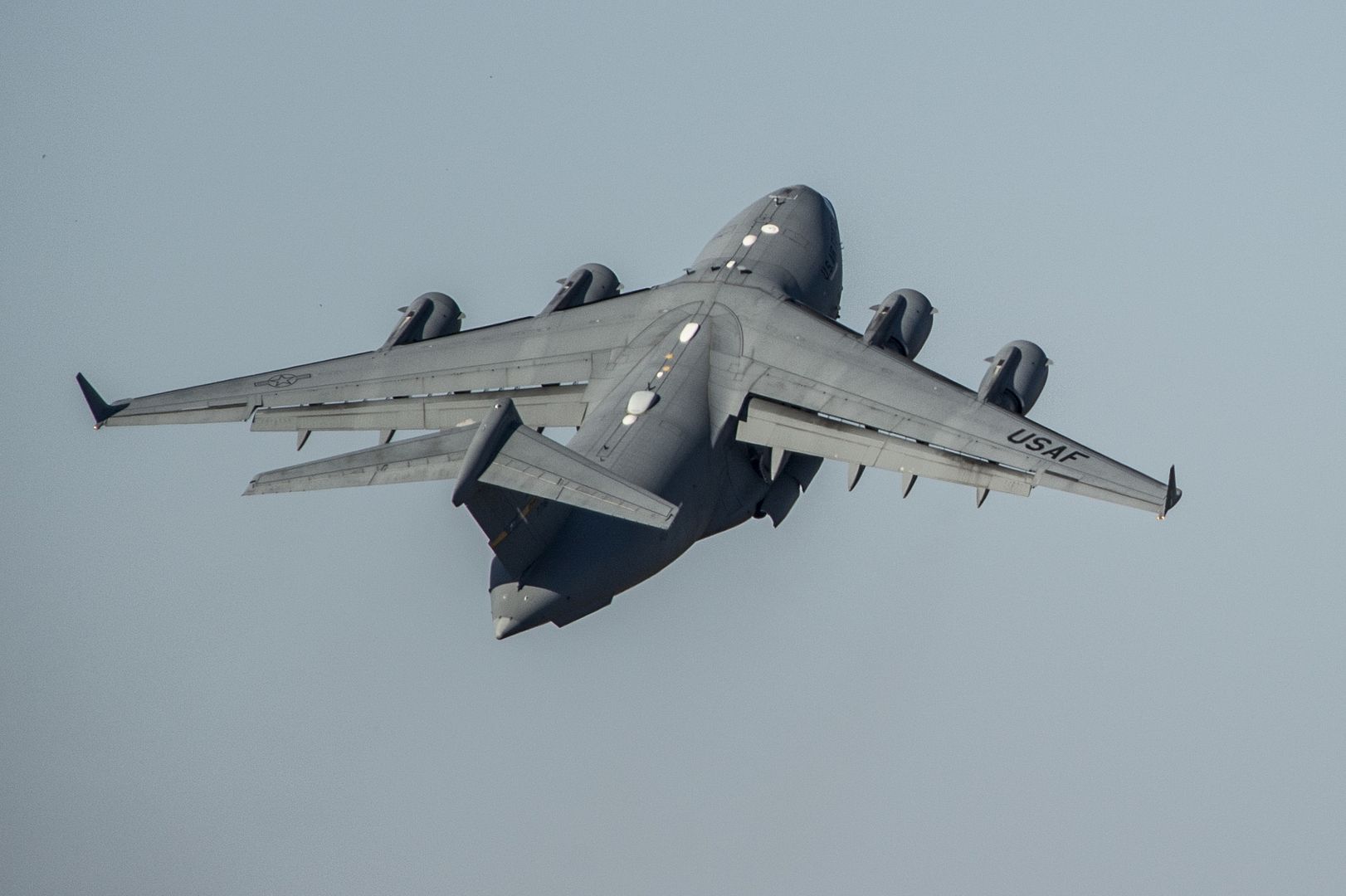
Clear skies and bright sun shines down on a row of 125th Fighter Wing F-15s from Jacksonville Fla., on the Eglin Air Force Base flightline Oct. 7. The Air National Guard unit sent 15 aircraft to ride out Hurricane Matthew here. The Marine Fighter Attack Squadron-501 sent 10 F-35Bs from South Carolina to the base for sheltering as well. The 96th Aircraft Maintenance Squadron's F-15 unit and the Navy's Strike Fighter Squadron 101 provided support to the transient aircraft.(U.S. Air Force photo/Samuel King Jr.)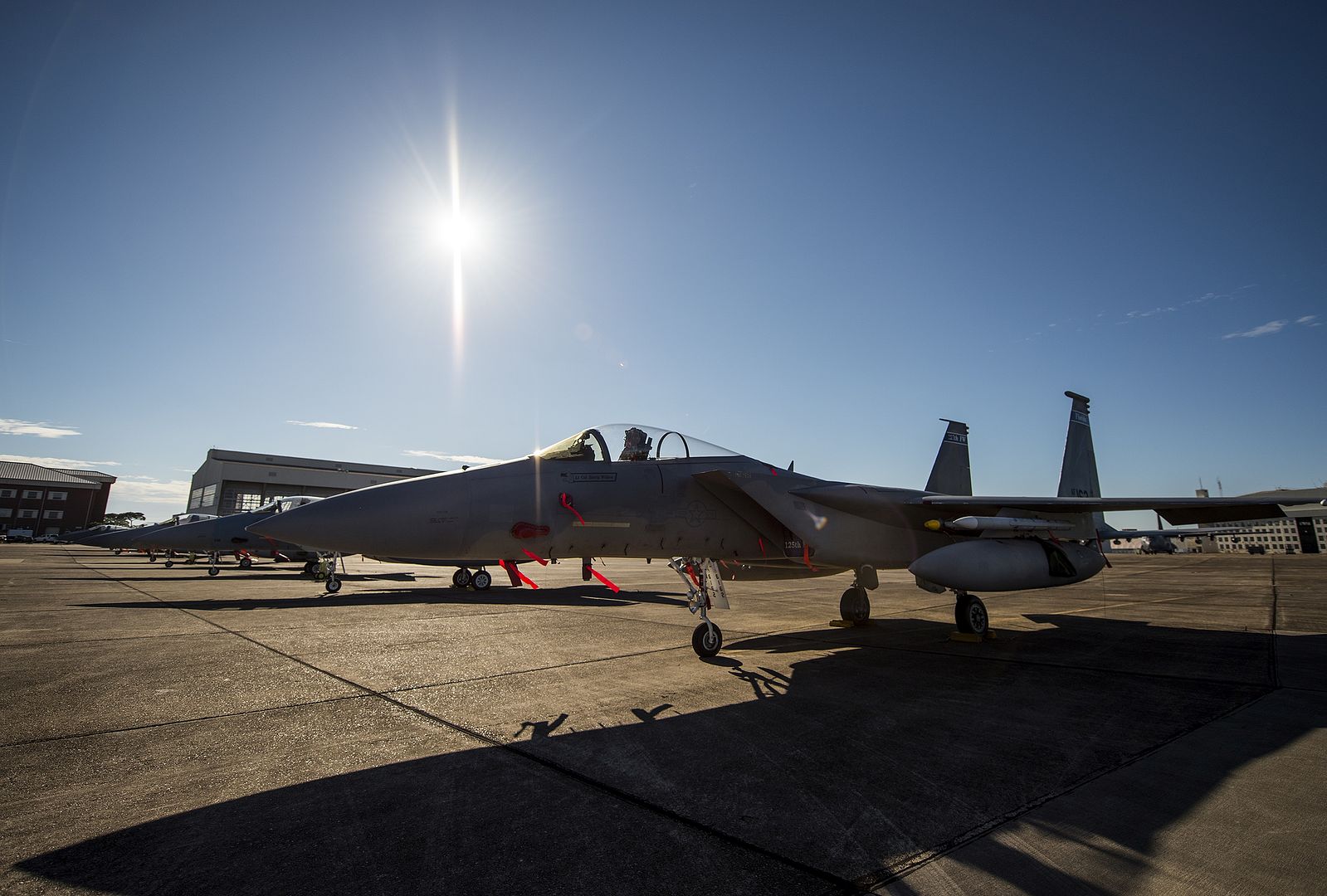
F-22 Raptors from Langley Air Force Base, Virginia, sit on the ramp at Rickenbacker Air National Guard Base October 7, 2016. The aircraft came to Rickenbacker seeking shelter from Hurricane Matthew.(U.S. Air National Guard photo by Senior Master Sgt. Ralph Branson/Released)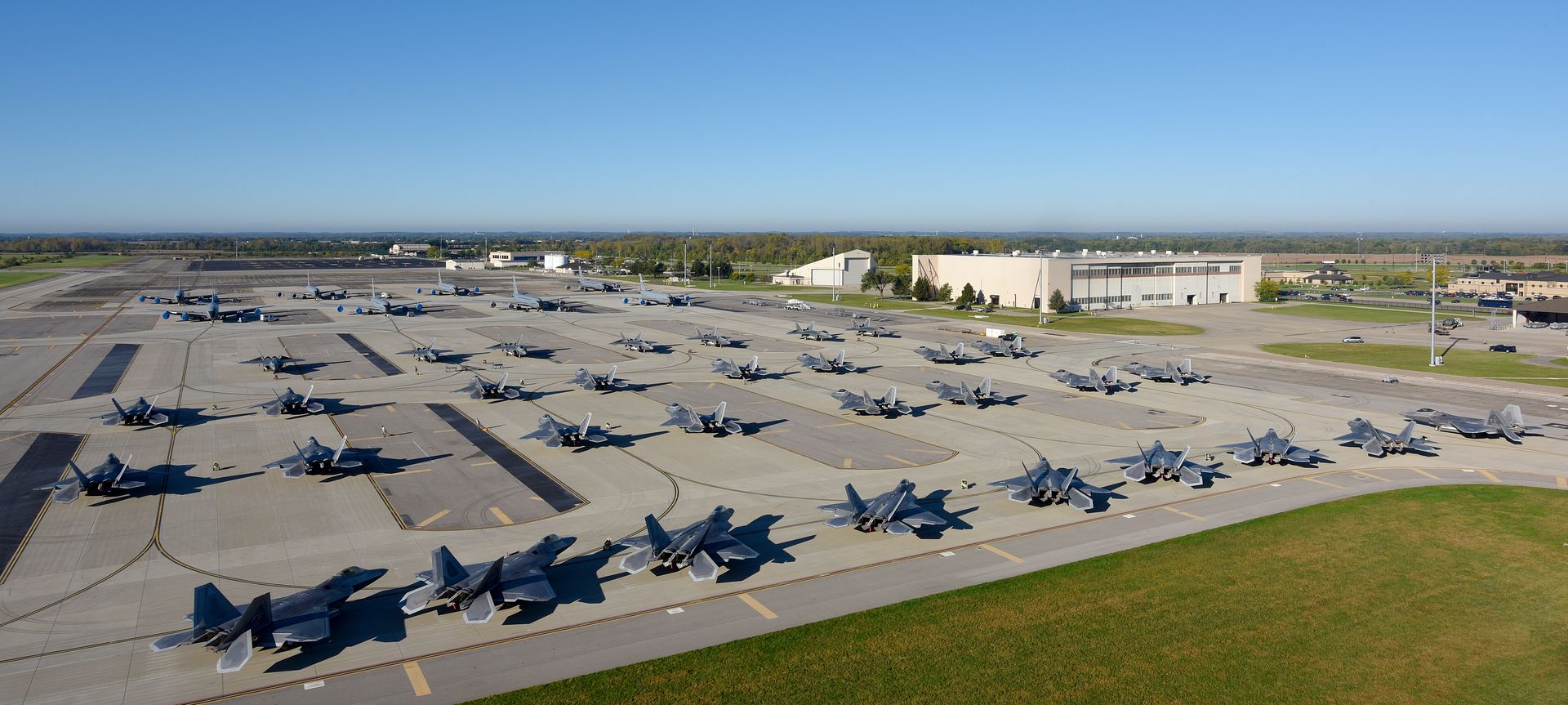
A U.S. Air Force F-22 Raptor from Langley Air Force Base, Virginia, sits on the ramp at Rickenbacker Air National Guard Base October 7, 2016. The aircraft came to Rickenbacker seeking shelter from Hurricane Matthew.(U.S. Air National Guard photo by Senior Master Sgt. Ralph Branson/Released)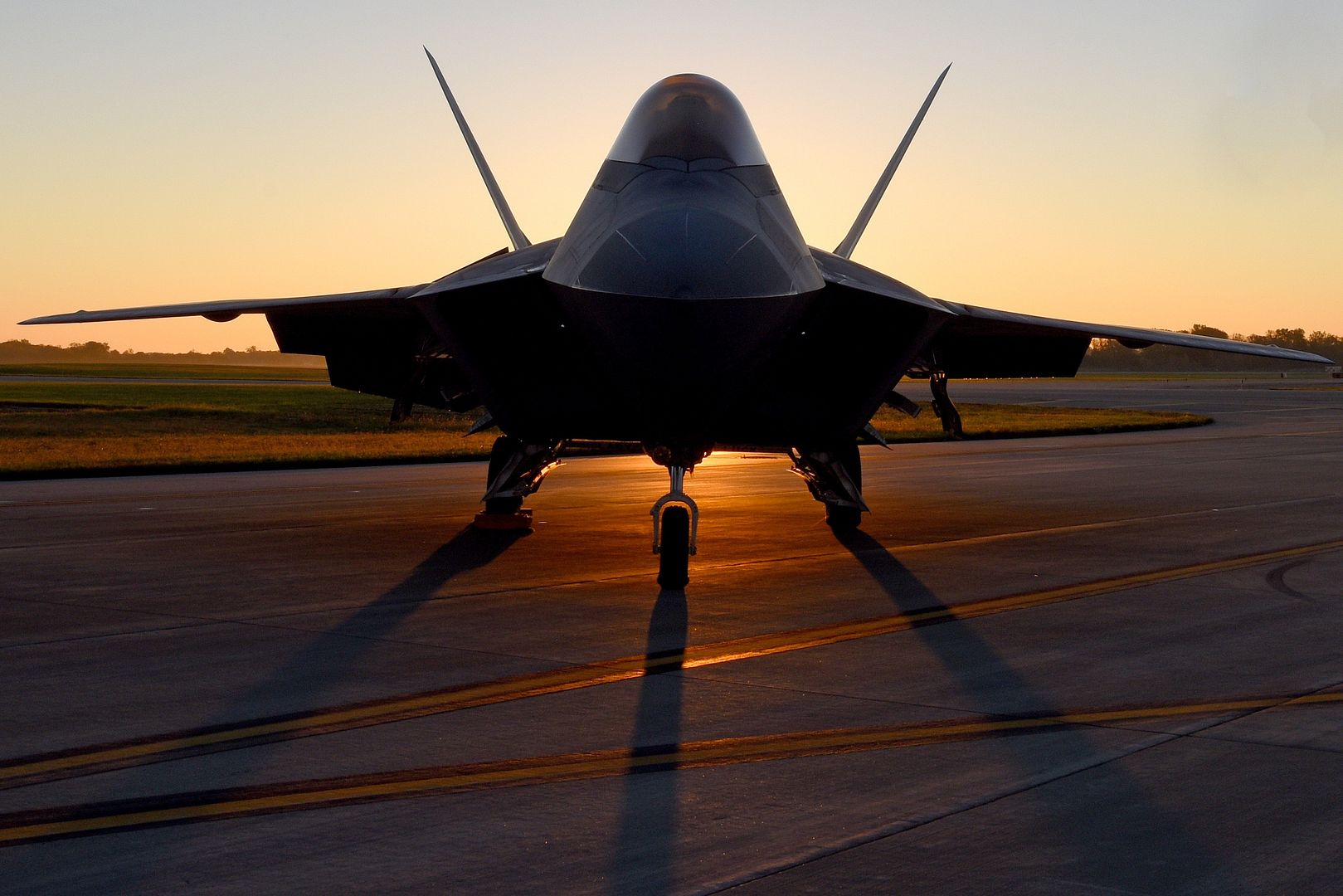
A T-38 Talon with the 2nd Fighter Training Squadron flies toward a training objective near Tyndall Air Force Base, Fla., Oct. 6, 2016. The 2nd FTS is manned by experienced fighter pilots and support personnel with backgrounds in virtually every USAF fighter major weapons system. (U.S. Air Force photo by Master Sgt. Burt Traynor)
WASHINGTON, Oct. 7, 2016 /PRNewswire/ -- Boeing [NYSE: BA] and Qatar Airways announced an order for 30 787-9 Dreamliners and 10 777-300ERs, valued at $11.7 billion at list prices, validating the value, reliability and performance of Boeing's twin-aisle airplanes.
The airline also signed a Letter of Intent for up to 60 737 MAX 8s, valued at $6.9 billion at list prices.
Today's announcement builds on Qatar Airways' current fleet of 84 Boeing aircraft, a combination of 787s and 777s, all delivered over the last nine years. With this new order, Qatar Airways increases its firm order backlog of Boeing widebody airplanes from 65 to 105, including 60 777Xs.
The announcement was attended by the State of Qatar's Minister of Finance, His Excellency Ali Shareef Al Emadi, U.S. Deputy Secretary of State Tony Blinken and the Ambassador of Qatar, His Excellency Mohammed Jaham Al-Kuwari.
"Qatar Airways, already one of the fastest growing airlines in the history of aviation, today announces a significant and historic aircraft order that will power our future growth for the years and the decades ahead," said Qatar Airways Group Chief Executive, His Excellency Mr. Akbar Al Baker. "Boeing has proven to be a valuable partner, and today's announcement is testament to our appreciation of the quality of their product and their dedication to providing world class customer service."
Qatar Airways' relationship with Boeing was renewed in 2006. Since then, there have been many milestones in the partnership. The airline was the first to operate the 787 in the Middle East and is a launch customer for the 777X. With the commitment for the 737 MAX 8, it would be the first Boeing single-aisle airplane model to join Qatar Airways' fleet in more than 15 years.
"Congratulations to The Boeing Company and Qatar Airways on the remarkable milestone they've reached, which will significantly grow the number of Boeing aircraft in the Qatar Airways fleet," said U.S. Secretary of Commerce Penny Pritzker. "Beyond its importance for these two companies, this agreement demonstrates the importance of global commercial partnerships in strengthening our bilateral ties. This deal will strengthen economic opportunity and job creation, and highlights the importance of strong global trading relationships."
"We are so very proud that a discerning and market-leading customer like Qatar Airways not only continues to endorse our current products, but also has confidence in Boeing's new technology that will soon be evident on the 777X and 737 MAX," said Boeing Commercial Airplanes President and CEO Ray Conner. "Our partnership with Qatar Airways has grown and strengthened tremendously over the years and I look forward to the time when its fleet will feature an increasing number of both our single and twin-aisle airplanes."
The 777-300ER is the most reliable twin-aisle airplane flying today and is considered to be the flagship of the world's elite airlines. It has the highest schedule reliability of any twin-aisle airplane at 99.5 percent ? the airplane is on time, nearly all the time.
The 787-9 Dreamliner is the second member of the super-efficient, passenger-pleasing 787 family. The 787-9, a stretch of the 787-8, can fly 290 passengers 7,635 nautical miles (14,140 km) in addition to more cargo, allowing airlines the ability to grow routes first opened by the 787-8.
Boeing's newest family of single-aisle airplanes ? 737 MAX 7, 737 MAX 8, 737 MAX 9 and 737 MAX 200 ? builds on the Next-Generation 737's popularity and reliability while delivering customers unsurpassed fuel efficiency in the single-aisle market, with deliveries scheduled to begin in 2017.
Post a reply
- Go to Previous topic
- Go to Next topic
- Go to Welcome
- Go to Introduce Yourself
- Go to General Discussion
- Go to Screenshots, Images and Videos
- Go to Off topic
- Go to Works in Progress
- Go to Skinning Tips / Tutorials
- Go to Skin Requests
- Go to IJAAF Library
- Go to Luftwaffe Library
- Go to RAF Library
- Go to USAAF / USN Library
- Go to Misc Library
- Go to The Ops Room
- Go to Made in Germany
- Go to Campaigns and Missions
- Go to Works in Progress
- Go to Juri's Air-Raid Shelter
- Go to Campaigns and Missions
- Go to Works in Progress
- Go to Skinpacks
- Go to External Projects Discussion
- Go to Books & Resources
